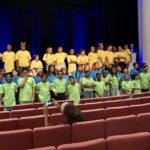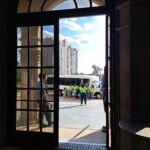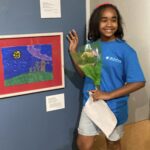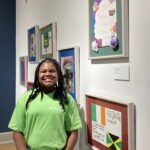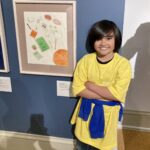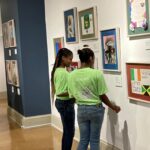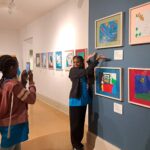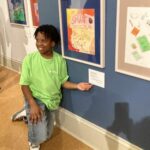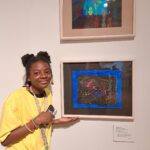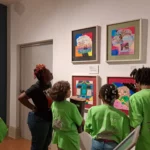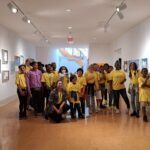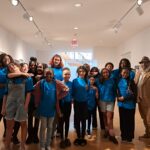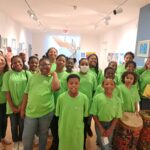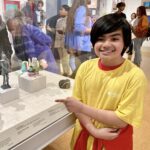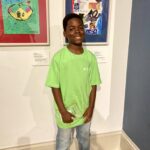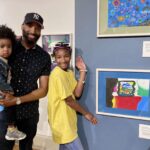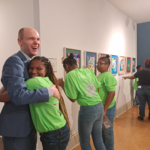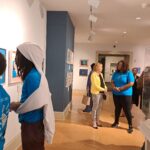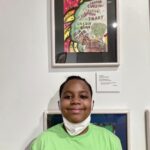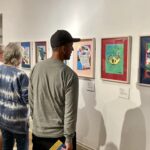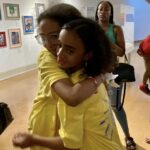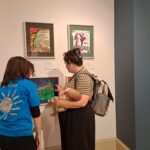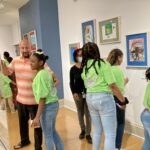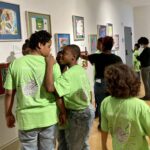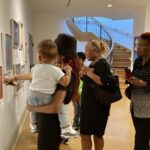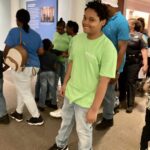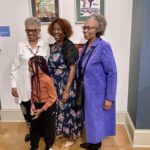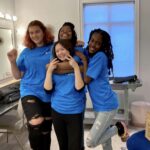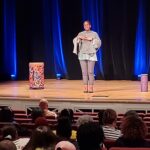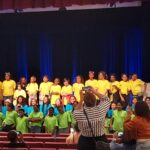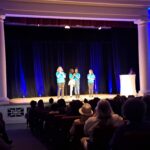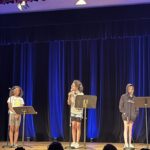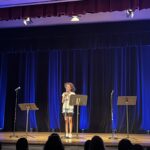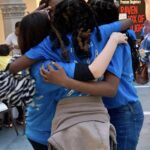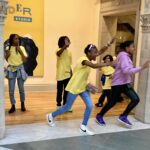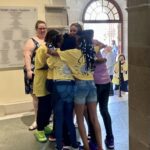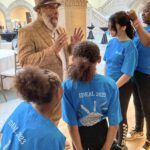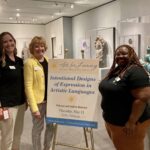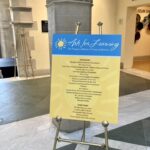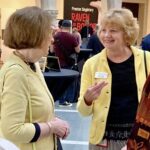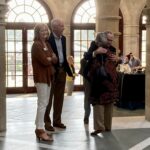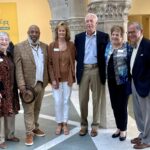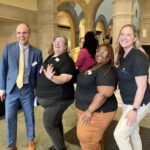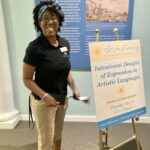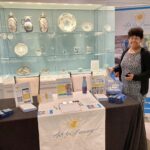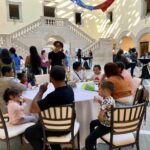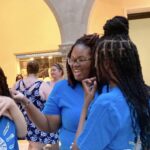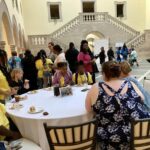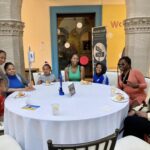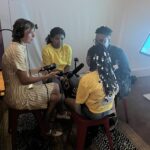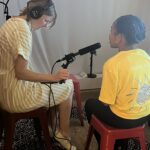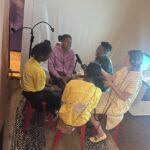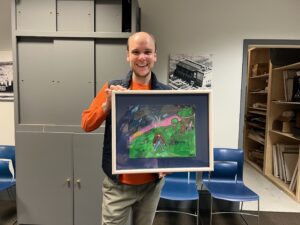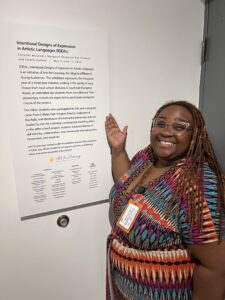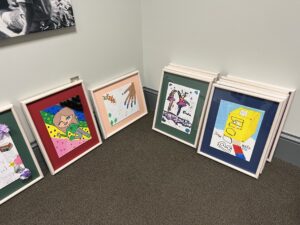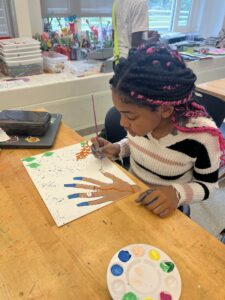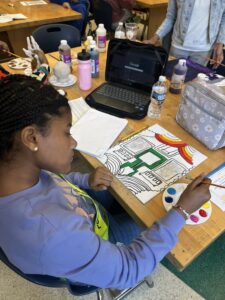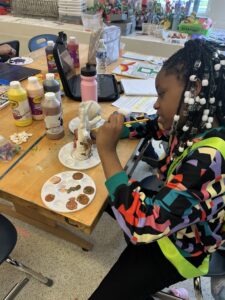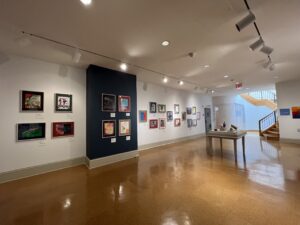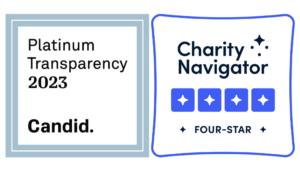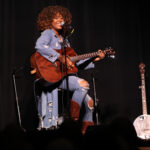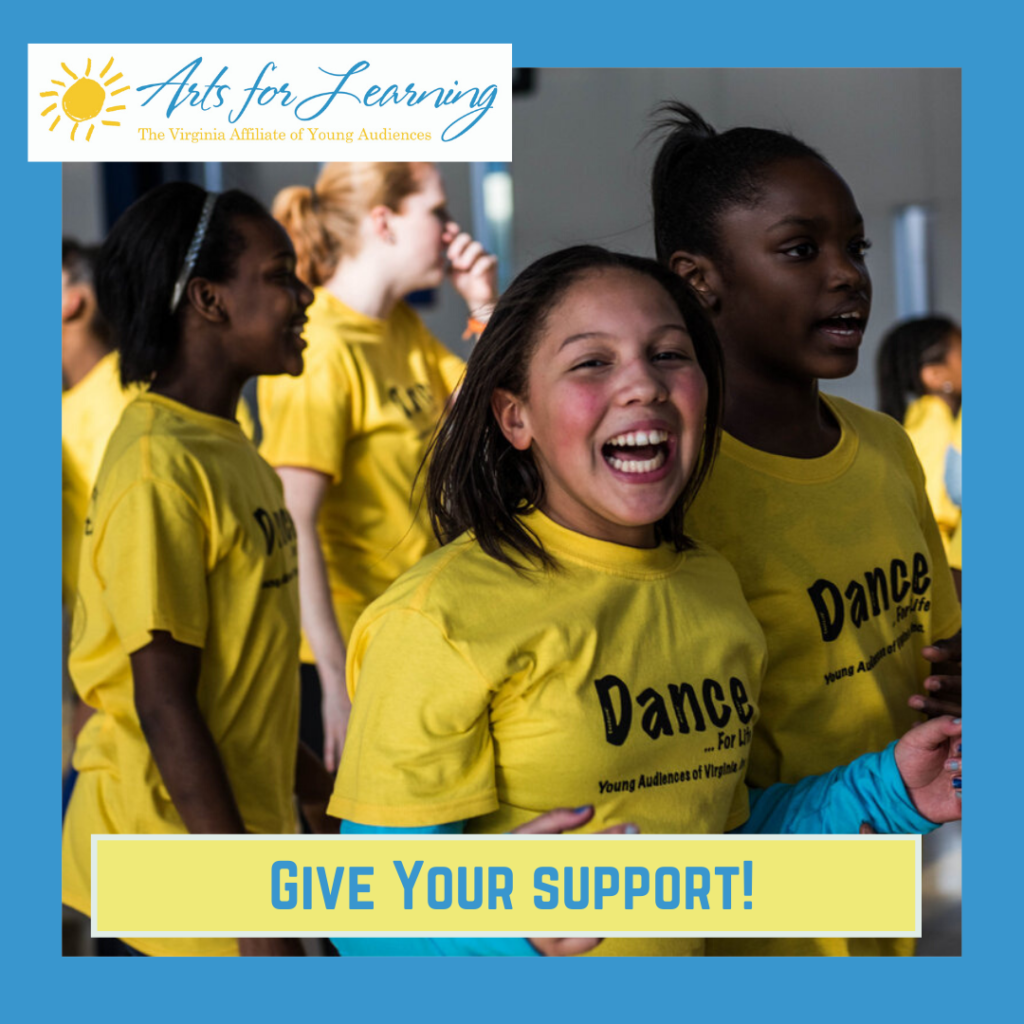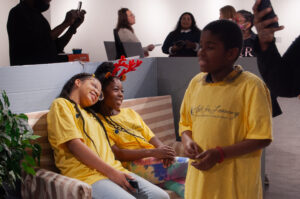 At the conclusion of the Community Creators in STEAM residency in Newport News, we talked with students about their experiences. Words that came up repeatedly were “teamwork,” “friends,” “fun,” and “help.”
At the conclusion of the Community Creators in STEAM residency in Newport News, we talked with students about their experiences. Words that came up repeatedly were “teamwork,” “friends,” “fun,” and “help.”
Mutaz: “I learned that I can do stuff that I thought I couldn’t do. I learned that I should never give up or think that I can’t do something because I still can do it.”
Aniyla: “We worked really hard on our projects, and so I’m really proud of our group and of myself.”
Andy: “I learned if you work together, it’s better because you can get more trust and people will respect you and you get new friends. And if you do stuff together it’s faster and you can make it better and you can have a fun time while doing it.”
Arabella: “We worked together and had so much fun in the process. I think I learned more about the artistic process. You have to start with getting your plan and drawing it out… you can make a small one and then all come together and build a big one like we did here.”
Naomi: “I learned how we can help people and how we can support our city.”
Joshua: “I learned to always keep going, even when things are going badly. Because we had little mistakes, but we got it to work.”
Aisha Noel, Arts for Learning’s Programs and Community Engagement Manager, spoke eloquently at the reception of the hard work and thought students put into the Community Creators in STEAM residency:
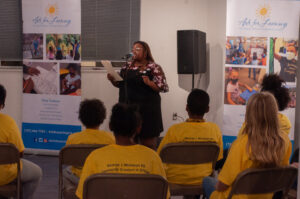 “The fifth-grade students at McIntosh Elementary School along with residency steward and teaching artists have spent the last nine weeks using the artistic and engineering design process to address a social issue in their community.
“The fifth-grade students at McIntosh Elementary School along with residency steward and teaching artists have spent the last nine weeks using the artistic and engineering design process to address a social issue in their community.
The students chose to focus on the issue of homelessness and build a respite for those facing housing insecurity. The items built represent what makes a house a home and what can provide people with dignity. And the students even felt that the unhoused deserve nothing less than luxurious items such as a grill, sofa, plush bed, and yes, a garden tub. These items meant that the unhoused had a respite no matter the cost. Tangible items didn’t come with a cost value but a comfort value. These basic and luxurious necessities mattered to the students. It mattered that those facing housing insecurity had a place to not only take a hot bath but also have a hot meal.
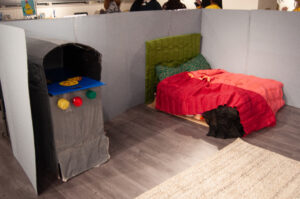 It was also important to the students that art was displayed around the house to give a sense of comfort and ownership. Throughout this project the students made intentional design choices from the color of the walls to the design layout. They wanted those facing this insecurity to feel welcomed.
It was also important to the students that art was displayed around the house to give a sense of comfort and ownership. Throughout this project the students made intentional design choices from the color of the walls to the design layout. They wanted those facing this insecurity to feel welcomed.
Throughout this project the students were supported by the dedicated staff at Arts for Learning and dynamic speakers from Newport News Shipbuilding and the founder of Ezer Initiative. Most importantly the students were supported by their school community. It has truly been a privilege to partner with McIntosh Elementary School. The school community embraced this project as a whole. Every visit was met with admiration from staff on the student’s artwork.”
Fifth-grader Joshua says he’s now interested in becoming a shipbuilder when he grows up. And he had a profound message about his experience:
I learned you could build art out of anything.”
Enjoy this slideshow of highlights from the reception and more from the Community Creators in STEAM residency:
Thanks to the adults who guided the students: teaching artists James Cooper and Asiko-oluwa Aderin; emerging teaching artist Brandy Lee; and McIntosh residency steward Tiffany Murchison.
Arts for Learning thanks Huntington Ingalls/Newport News Shipbuilding for underwriting this residency, which was provided at no cost to students and their families. Additional community support was provided by Newport News Public Schools Fine Arts and STEM supervisors and the Newport News Arts Commission.

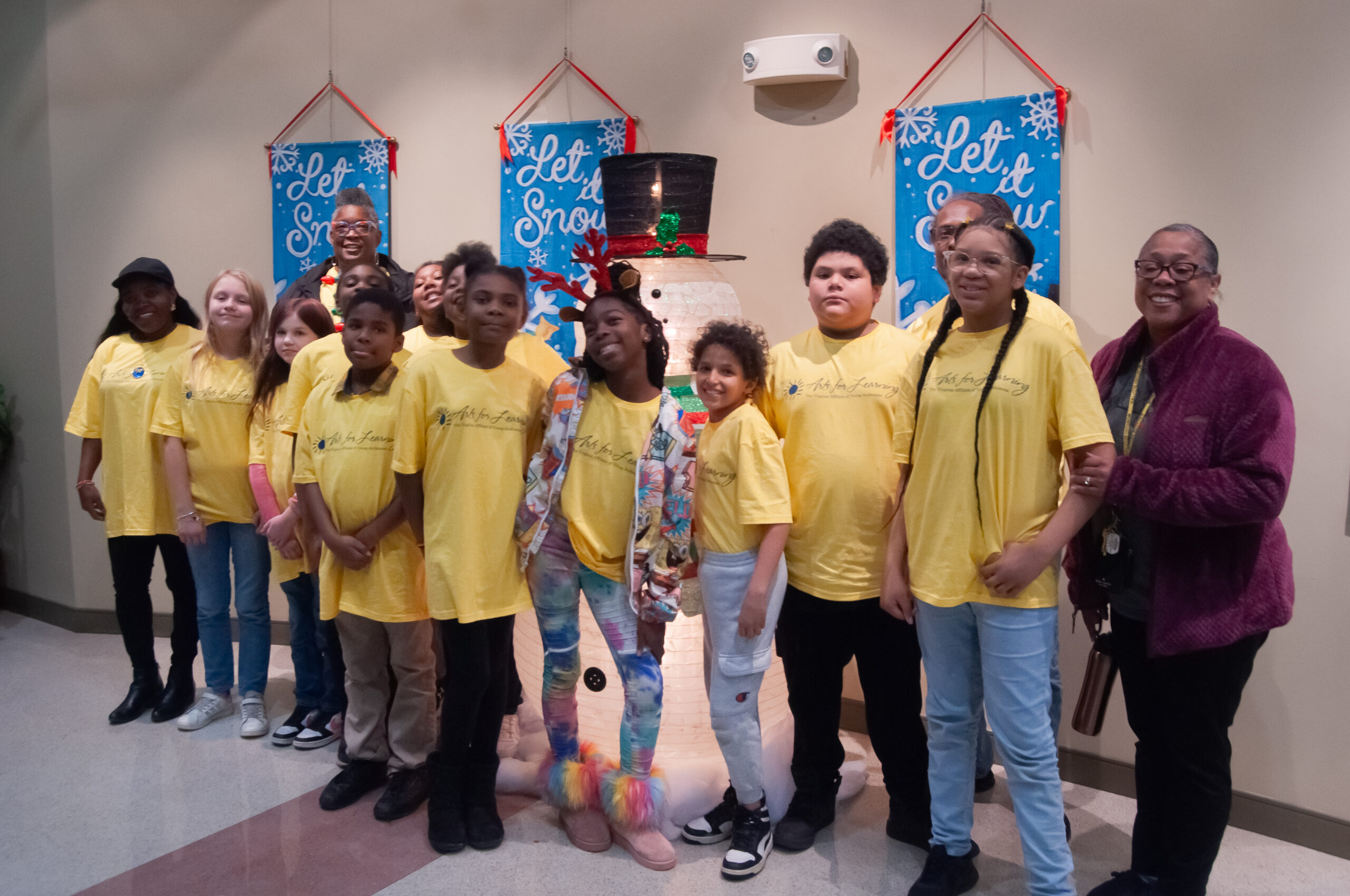
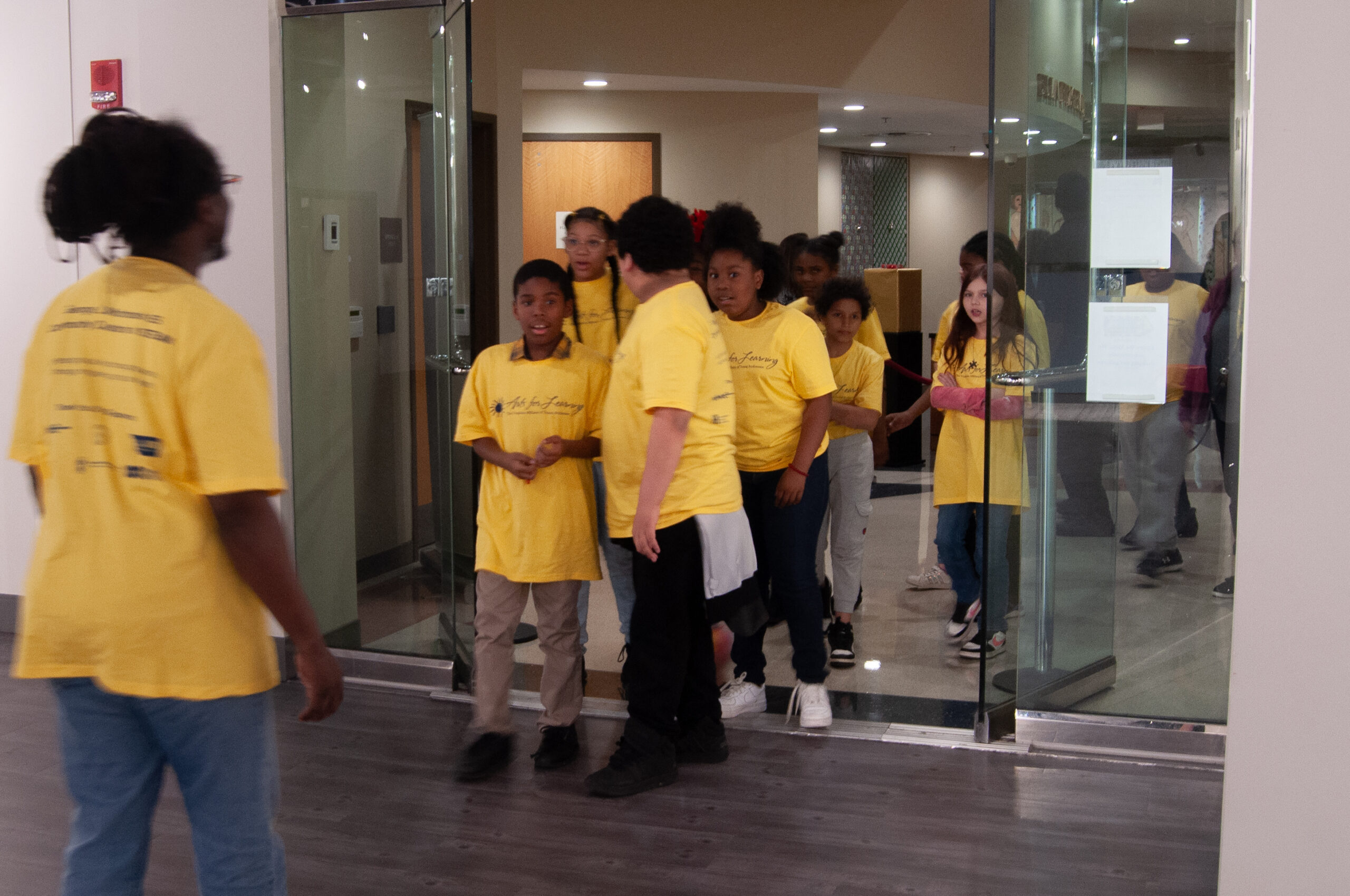
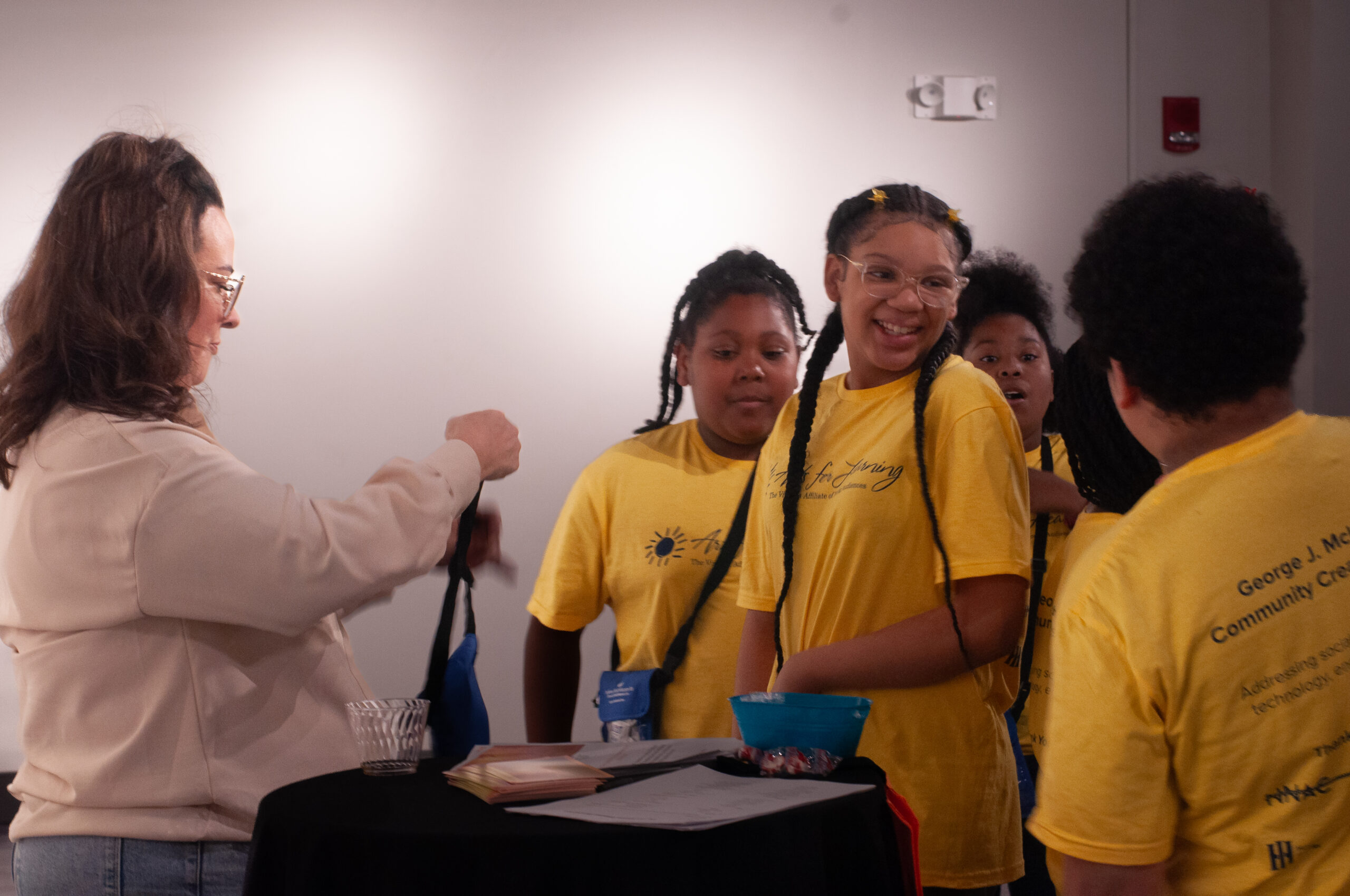
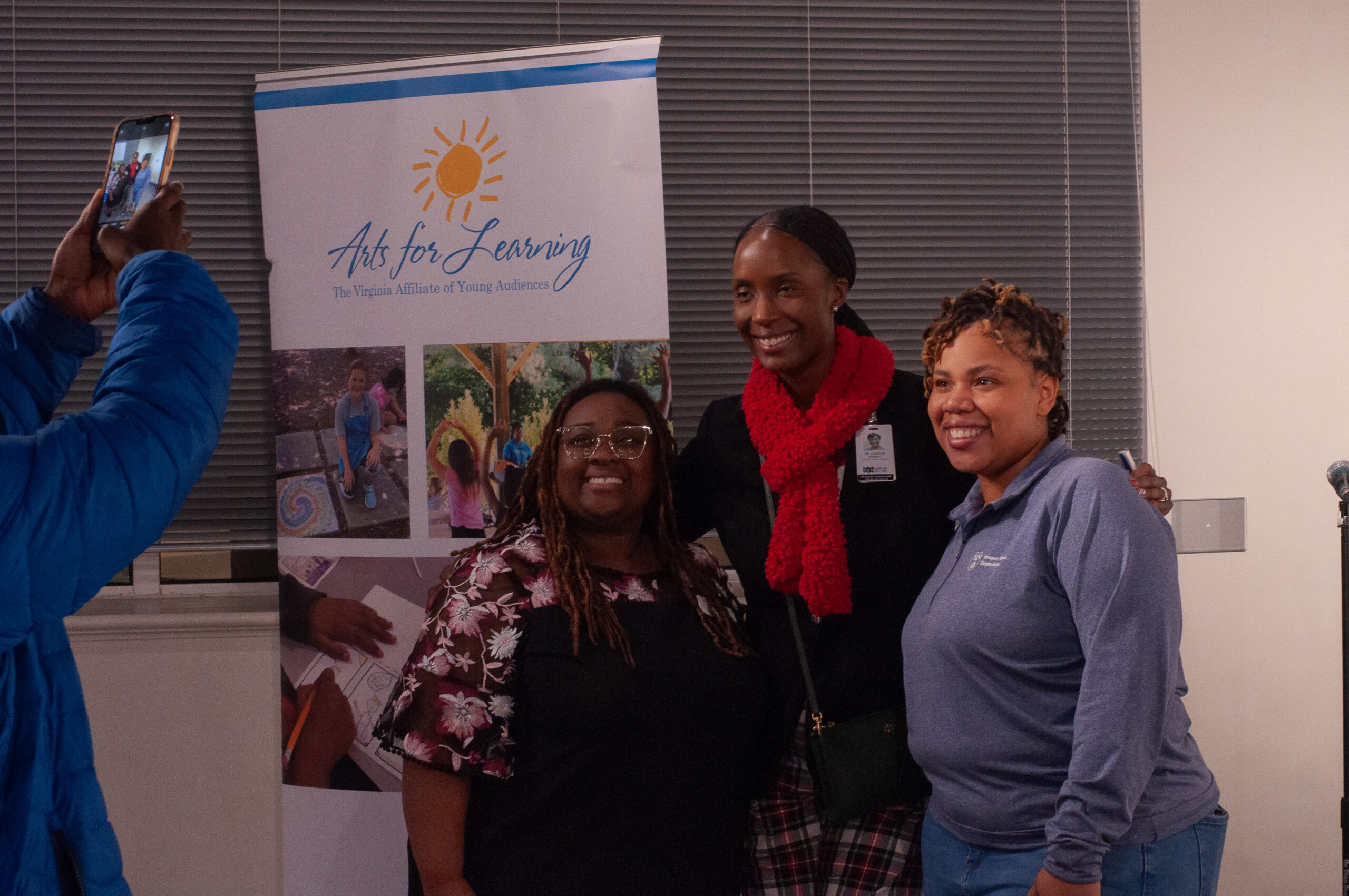
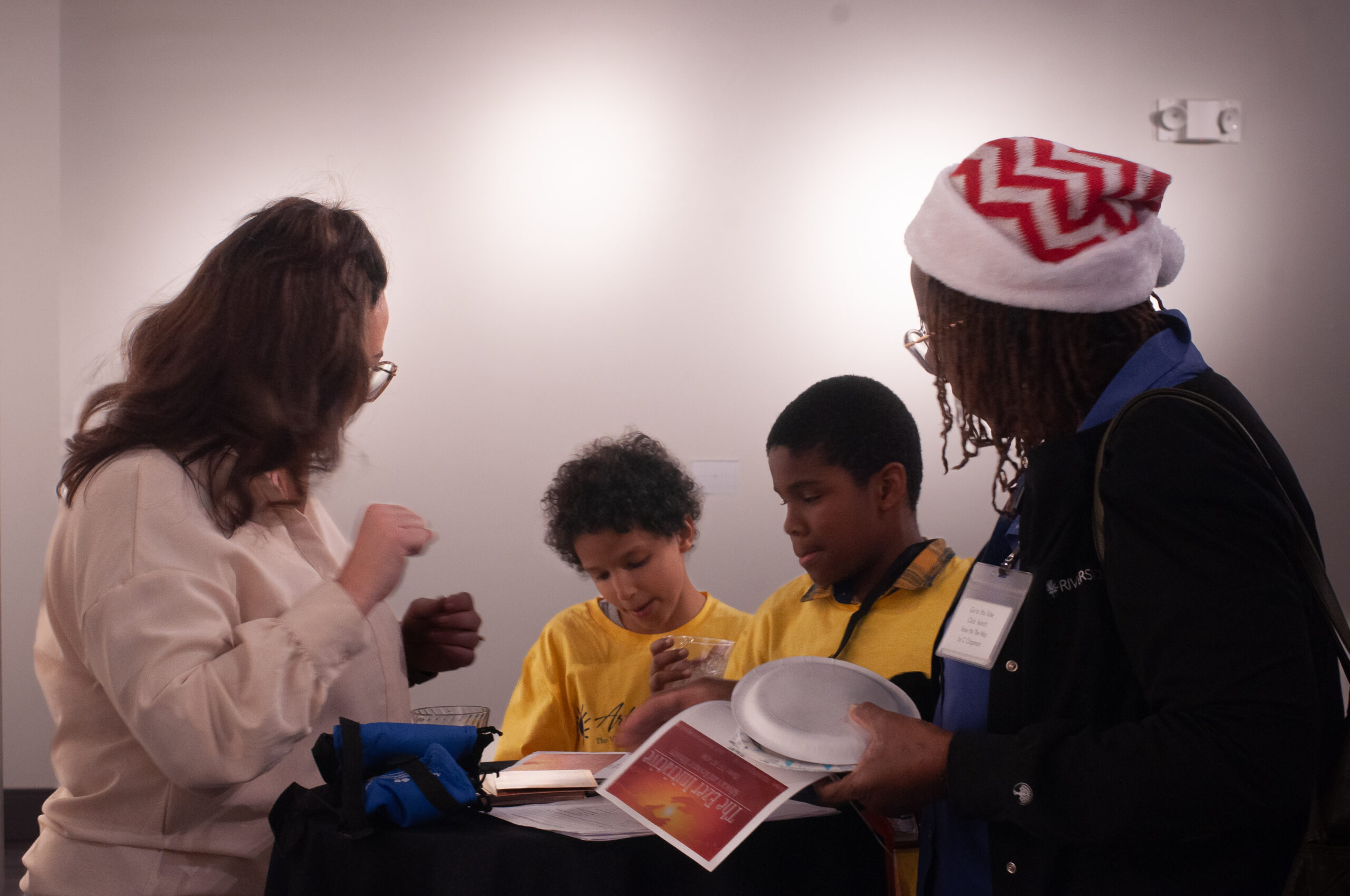
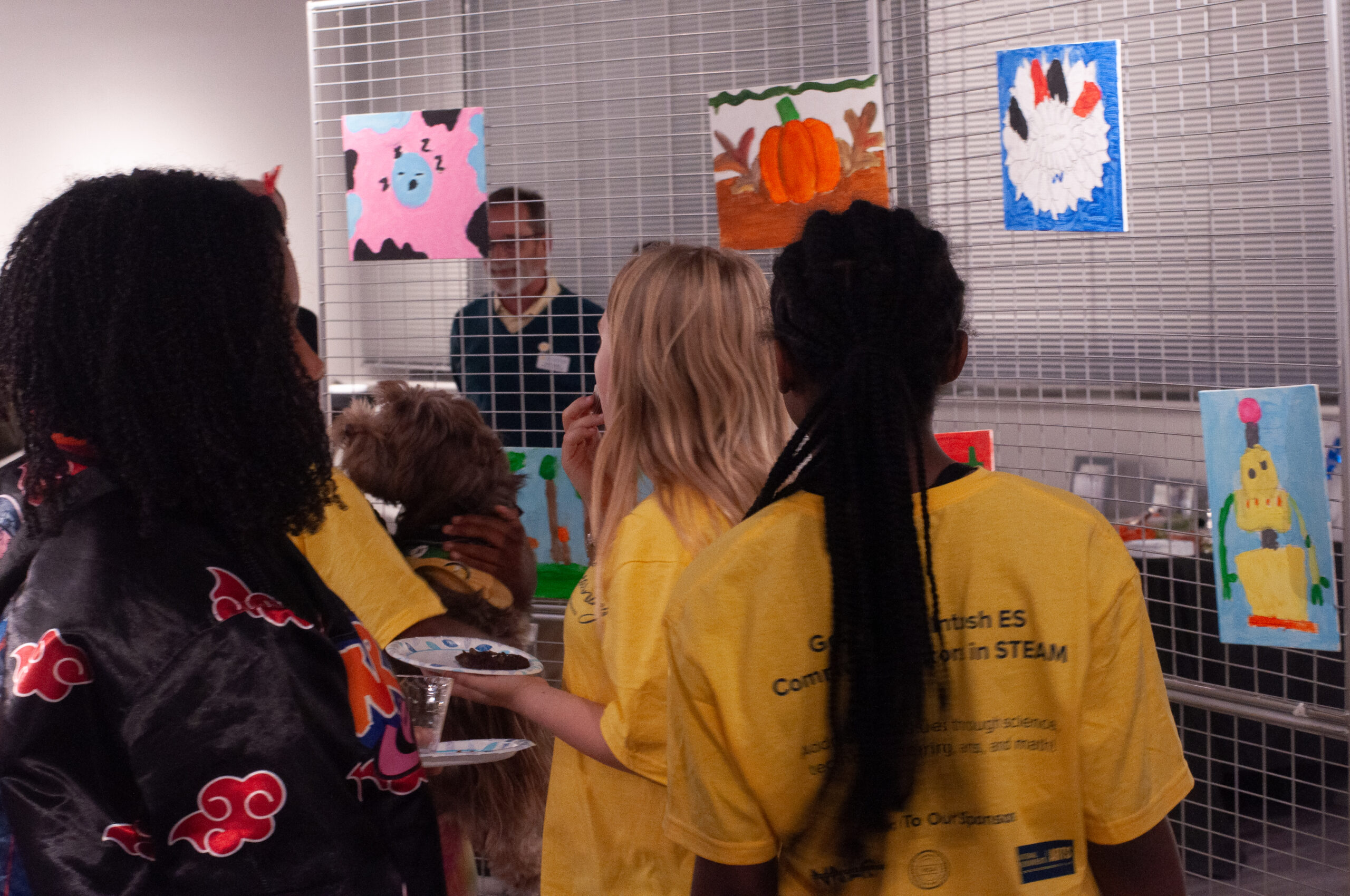
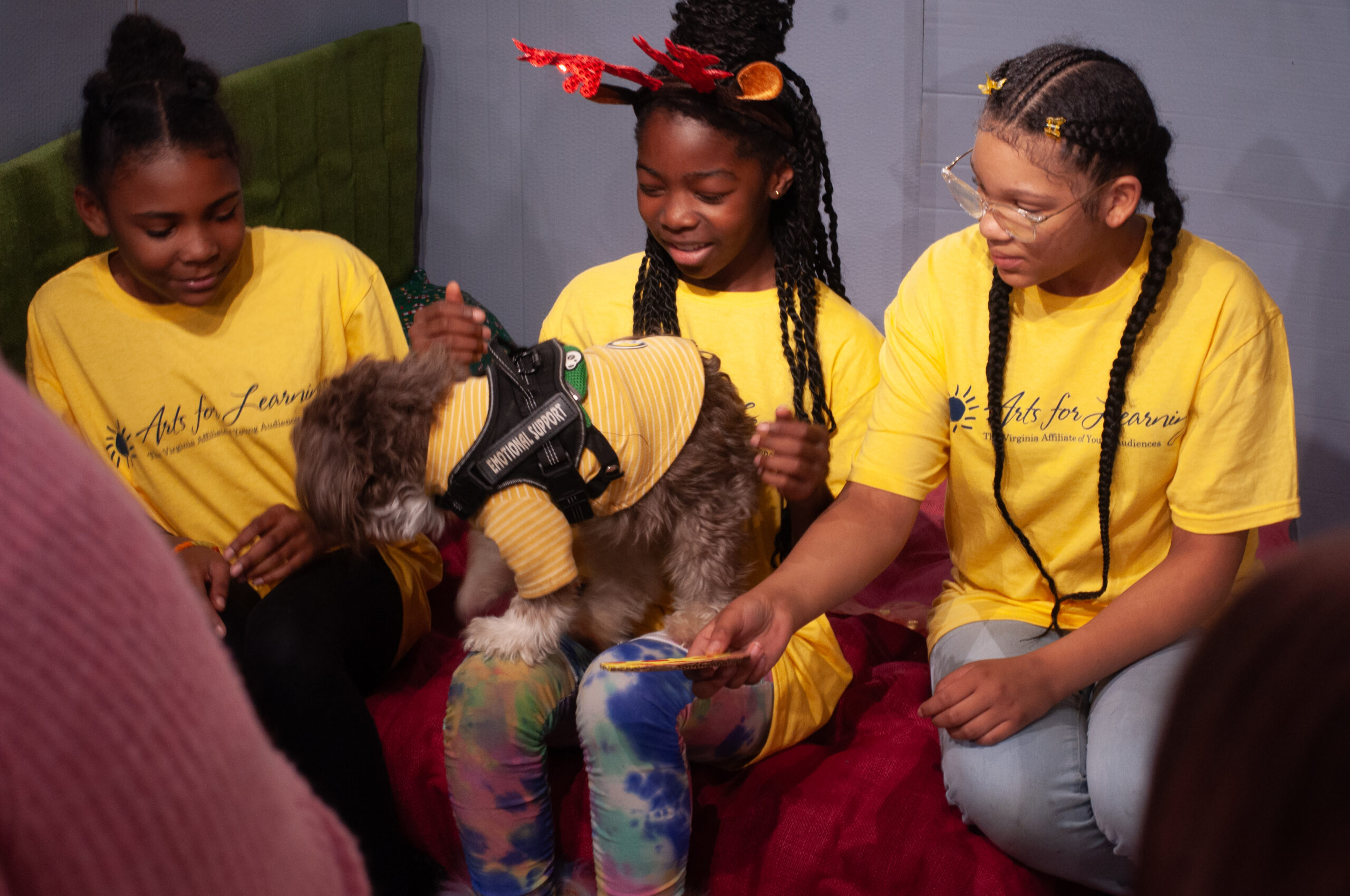
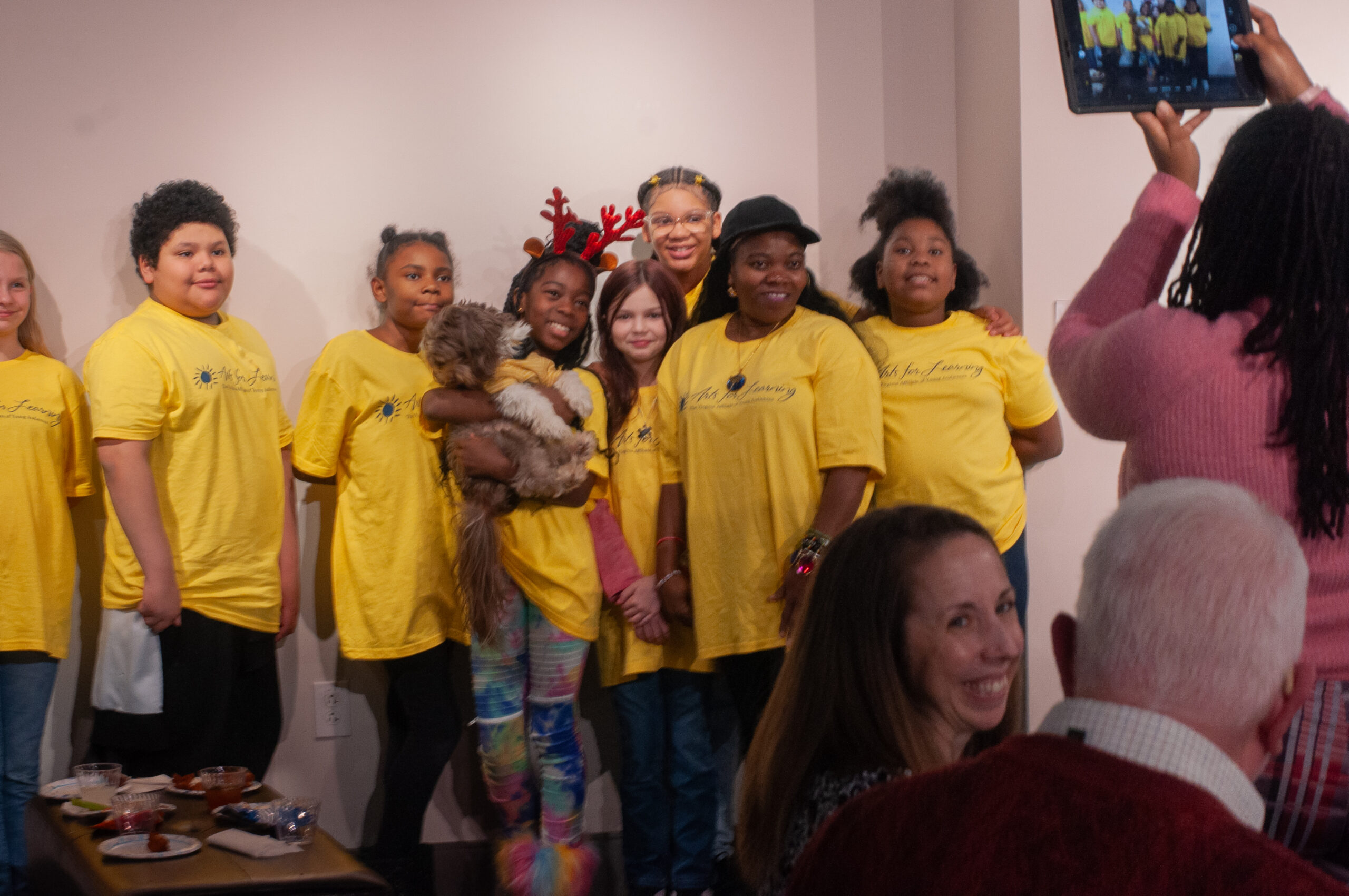
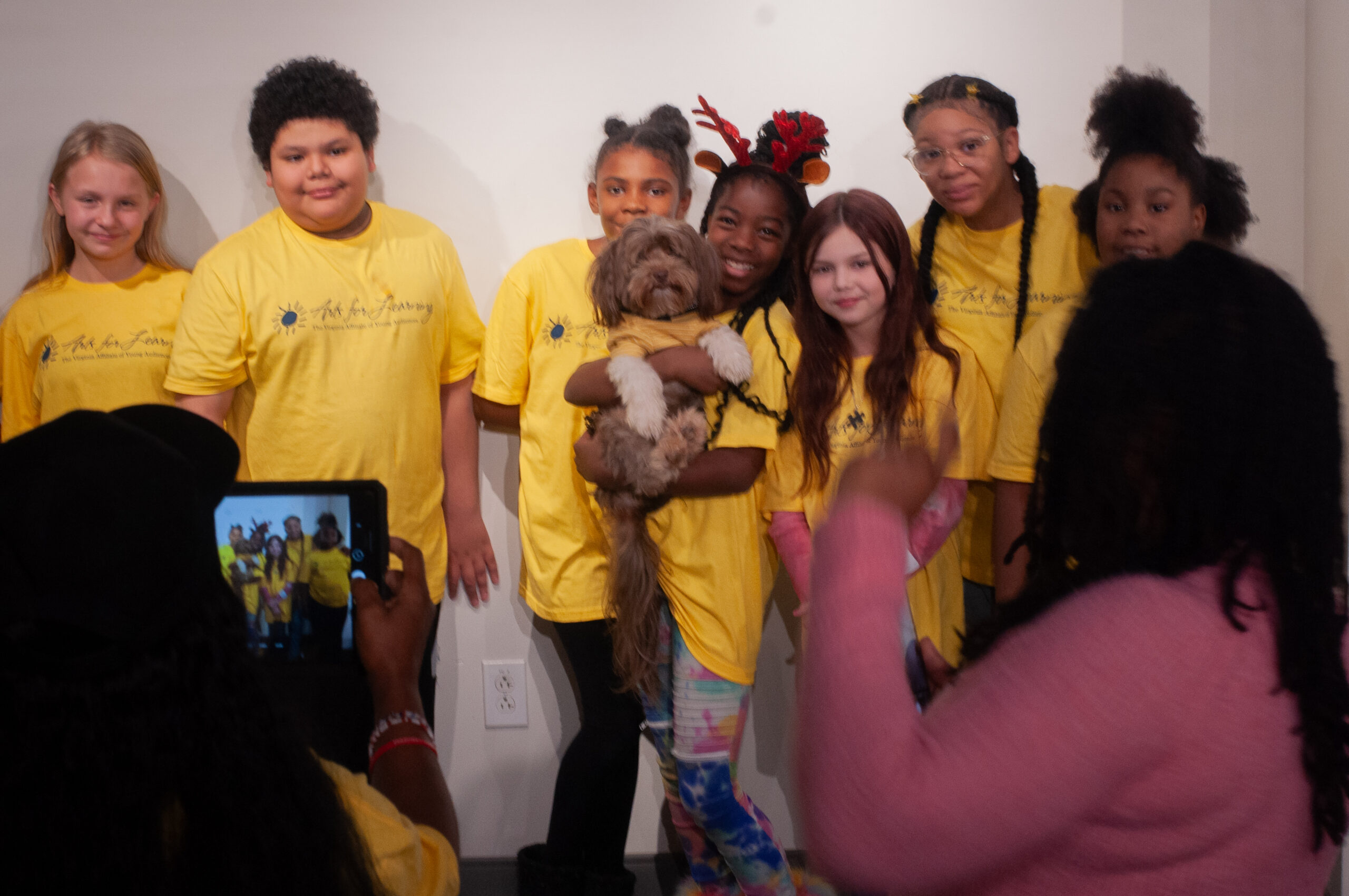
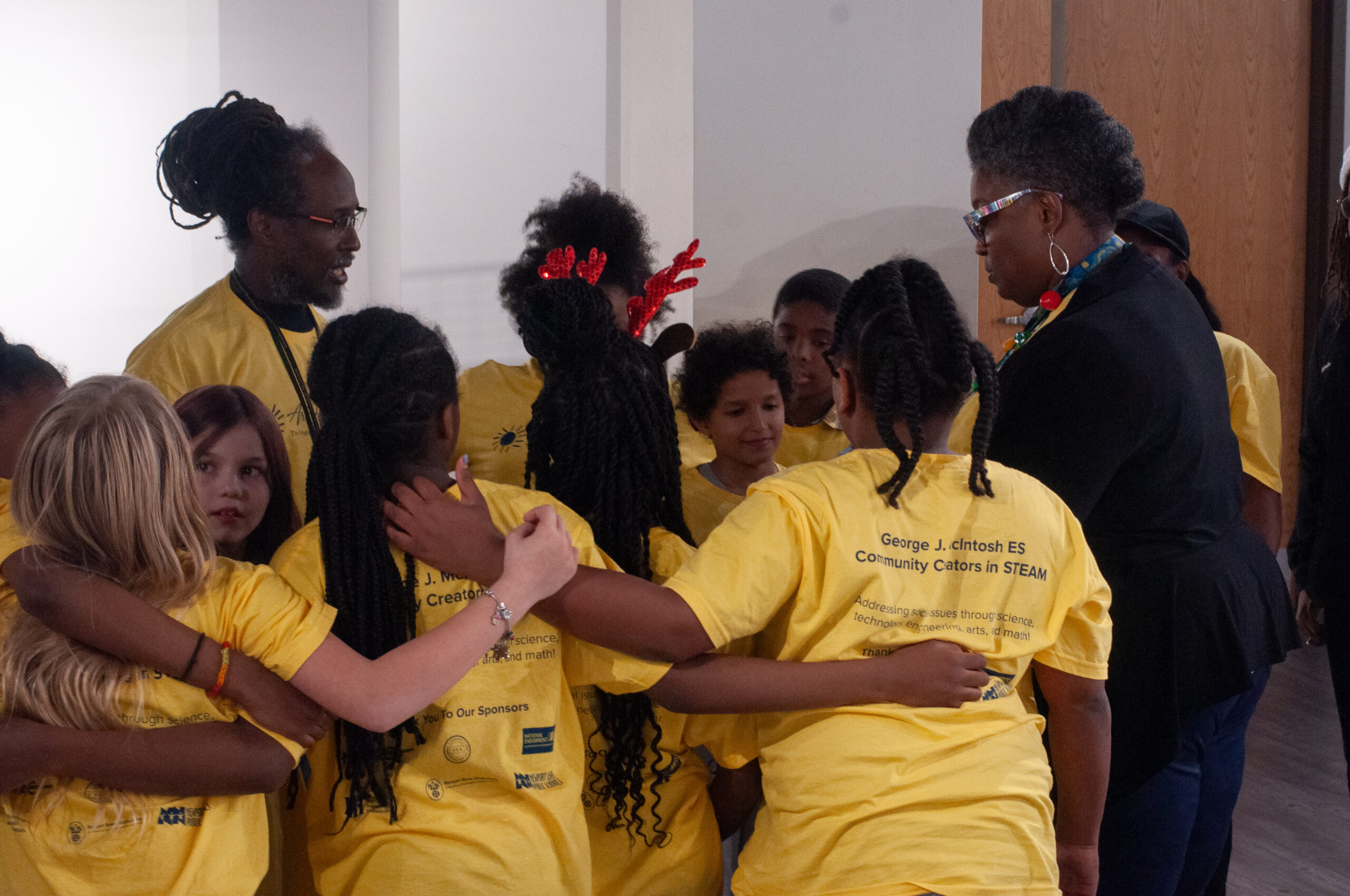
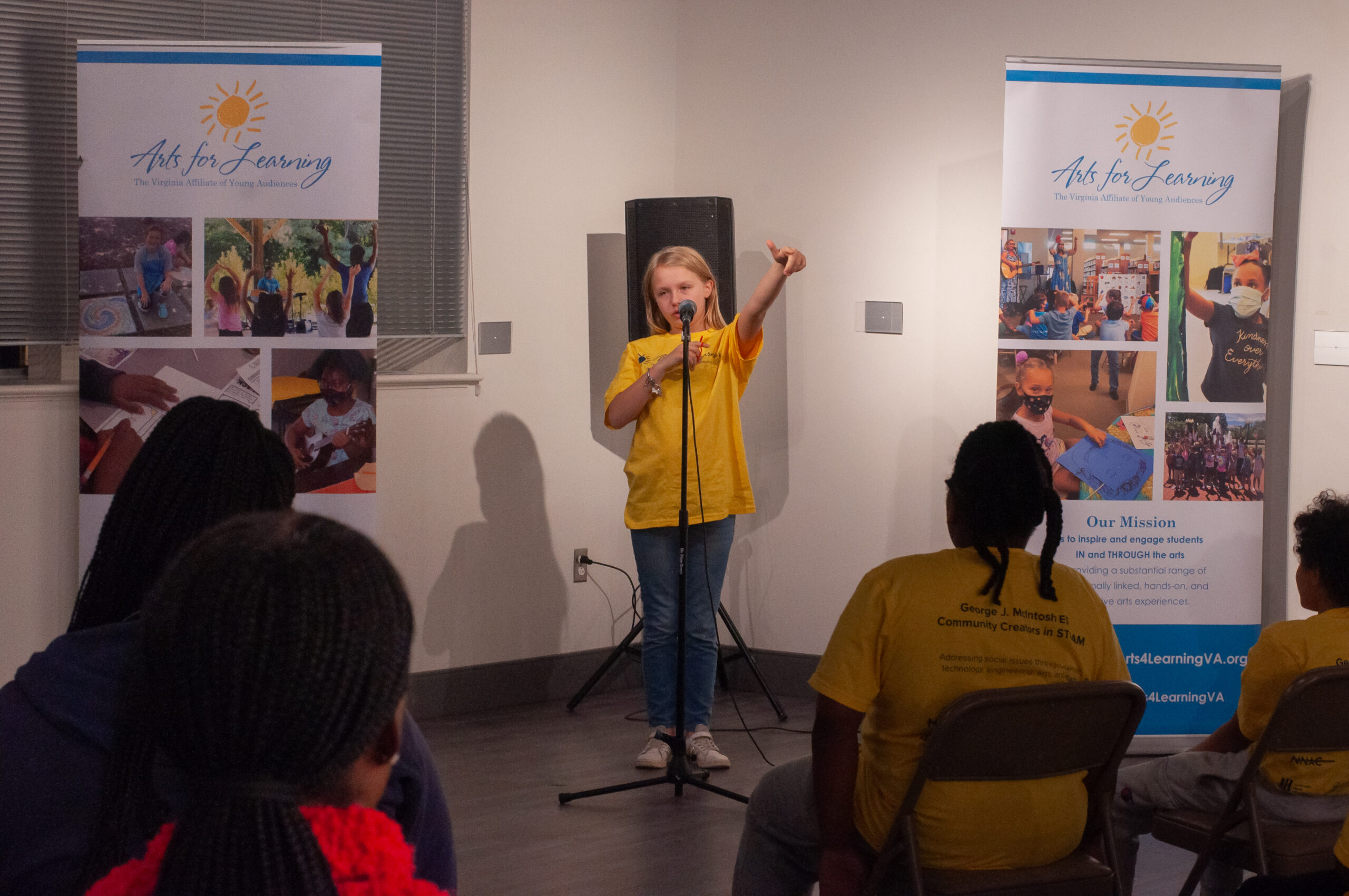
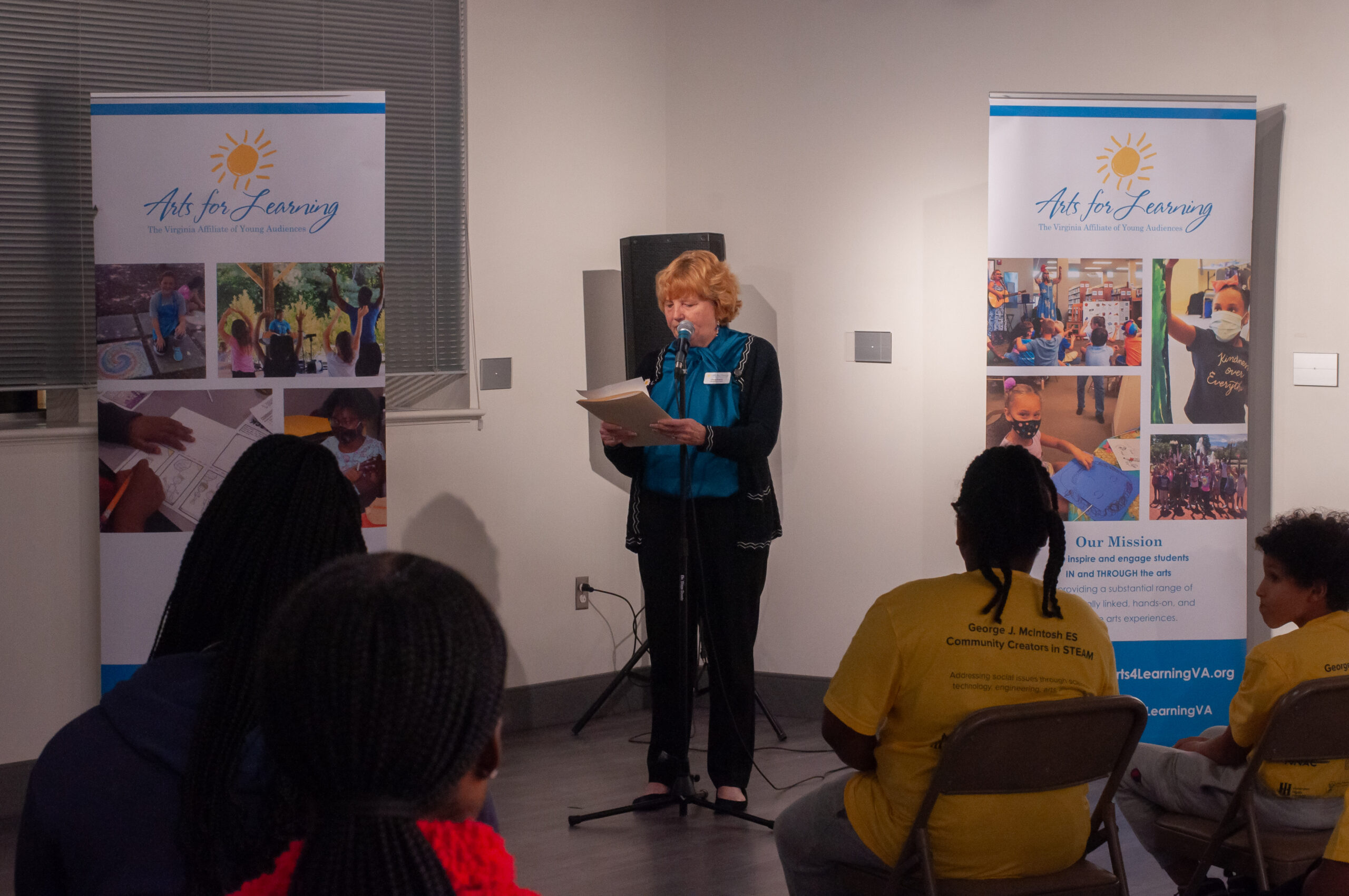
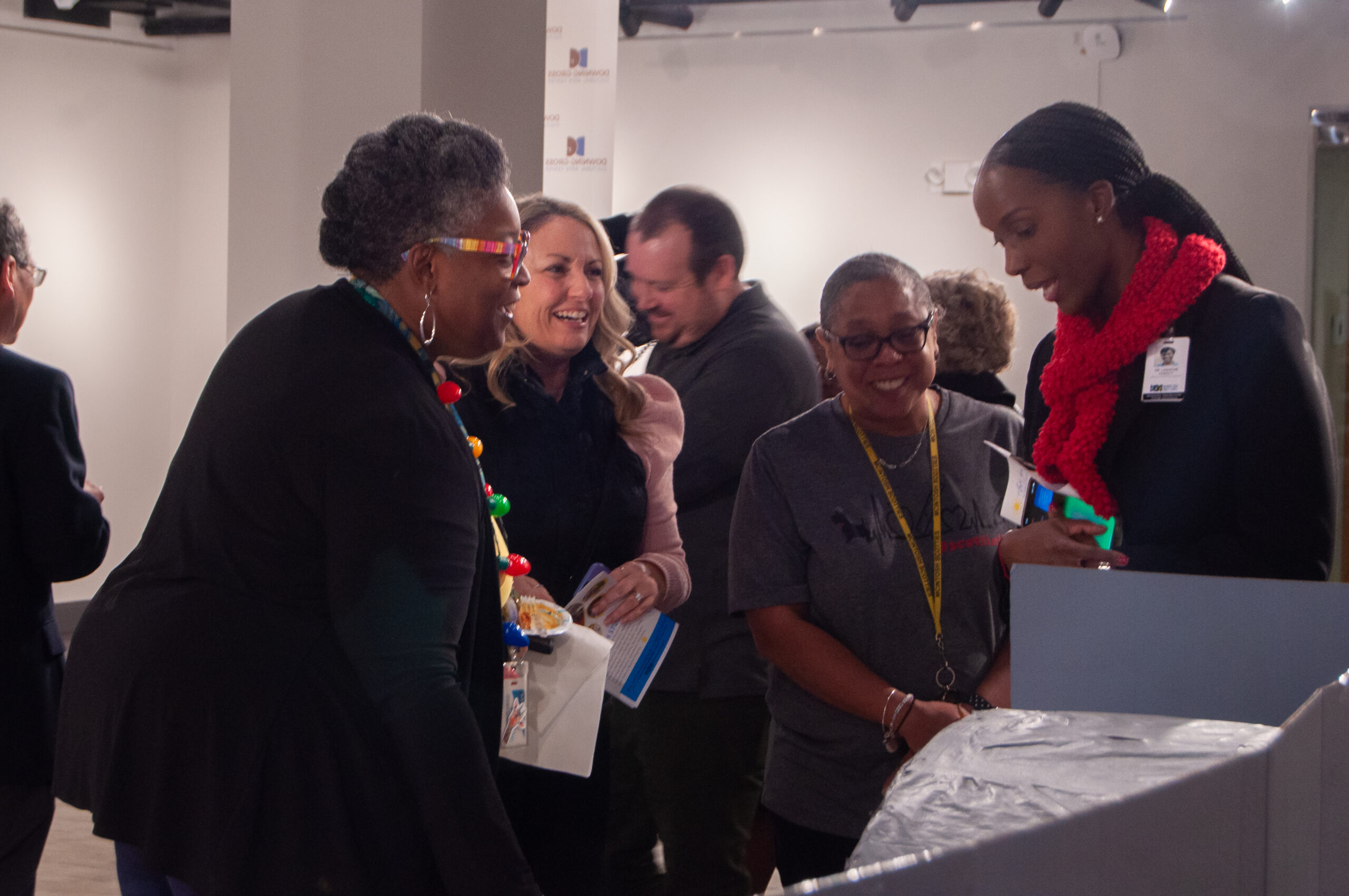
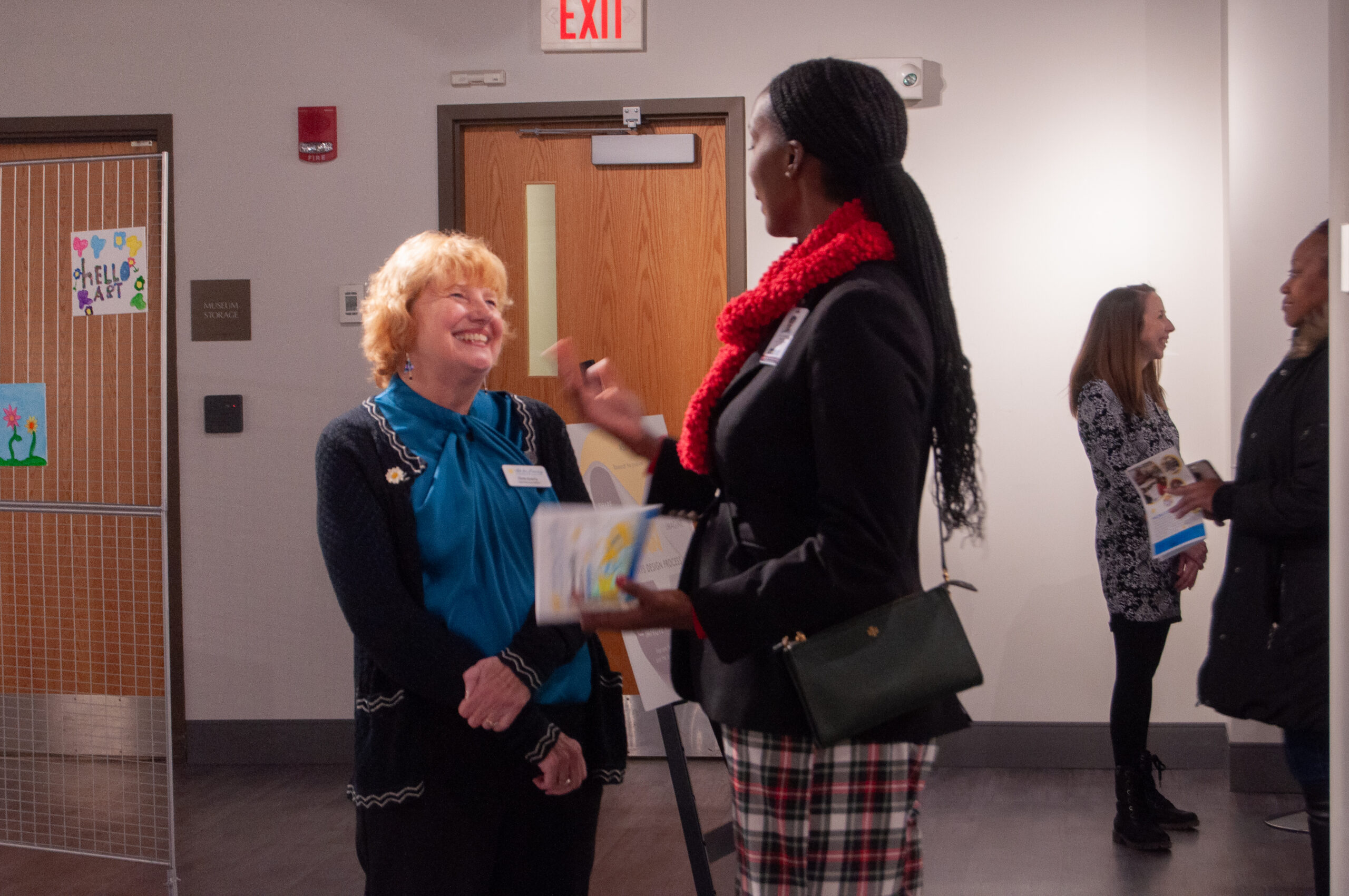
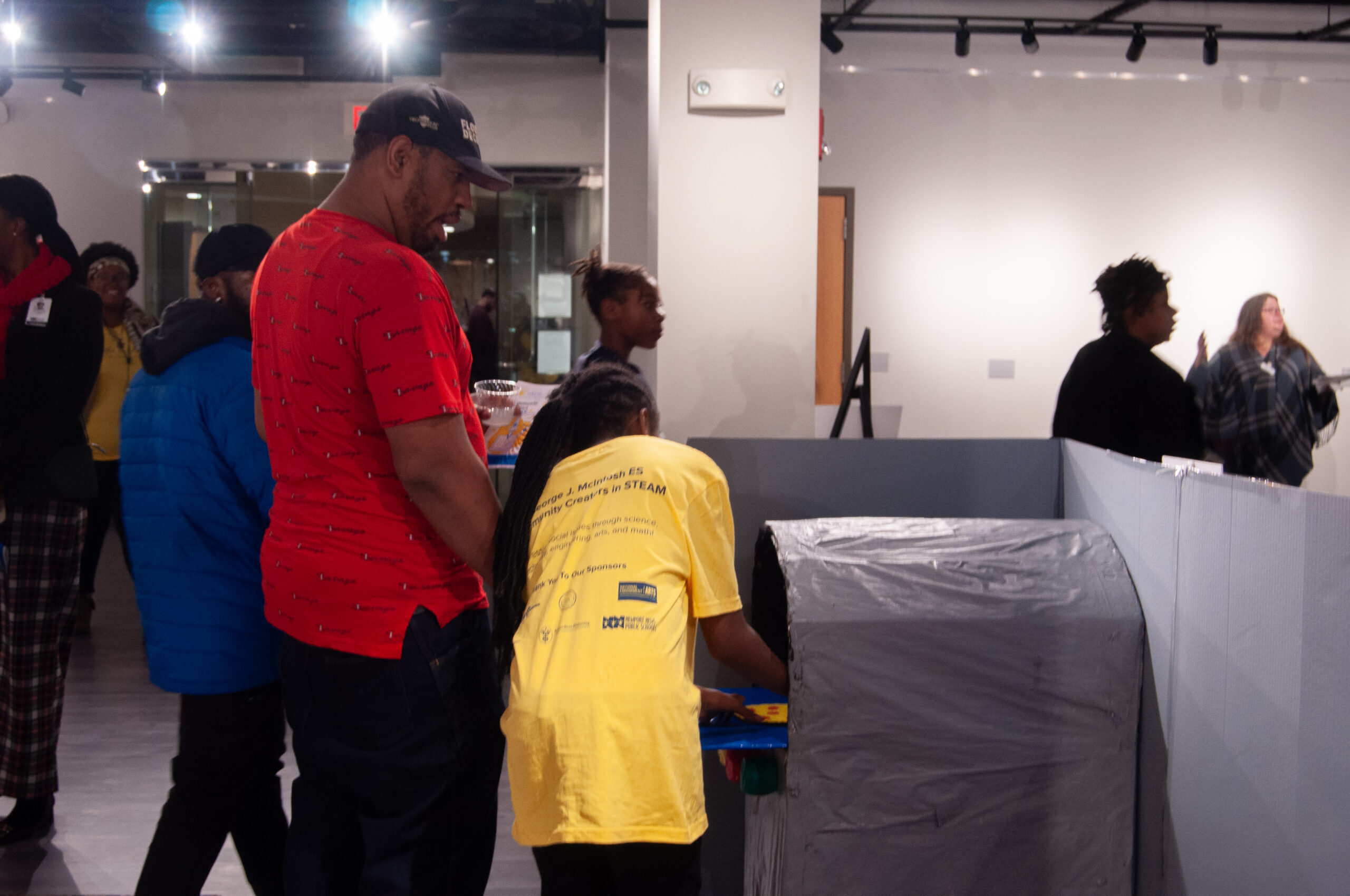
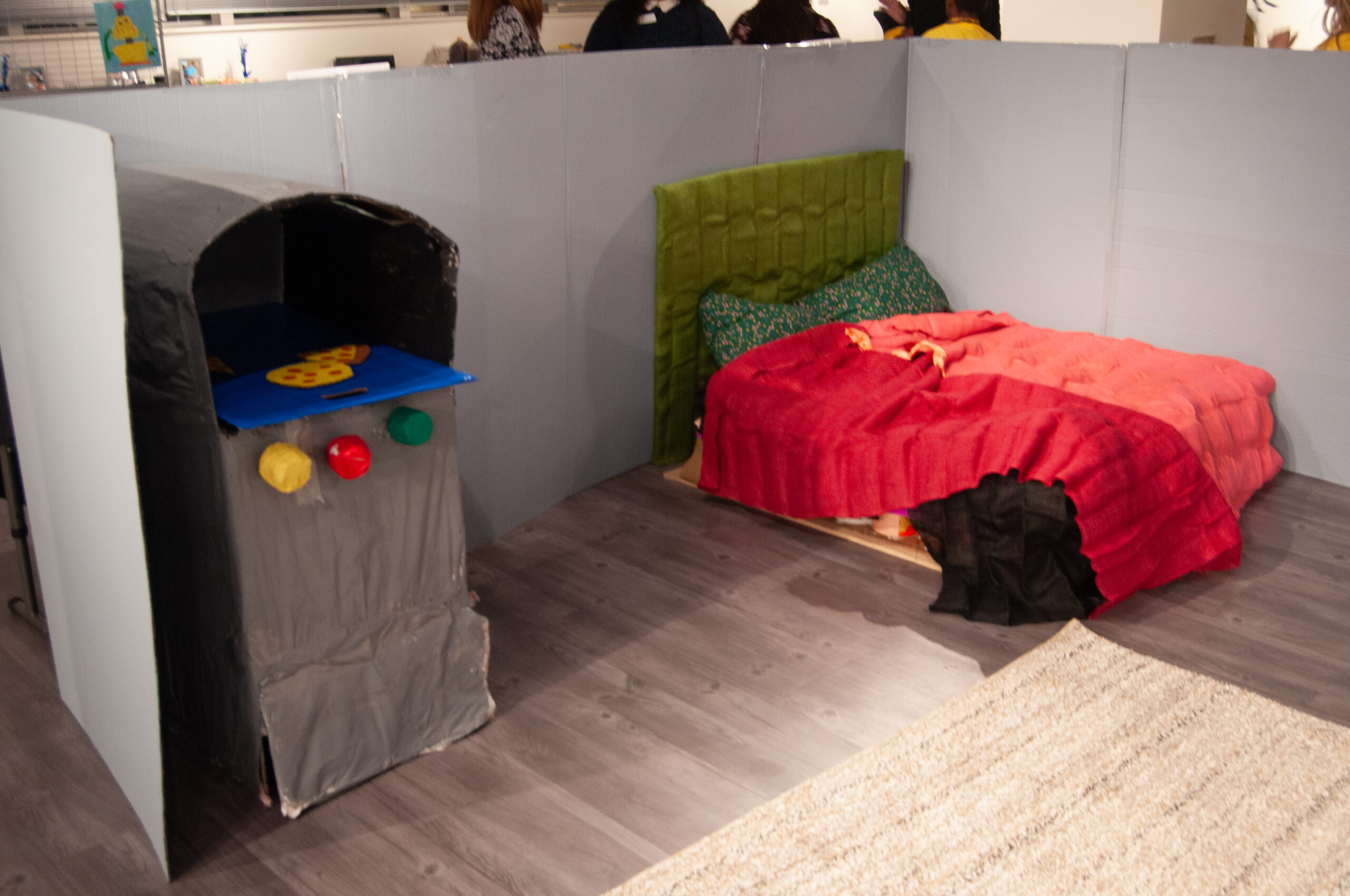
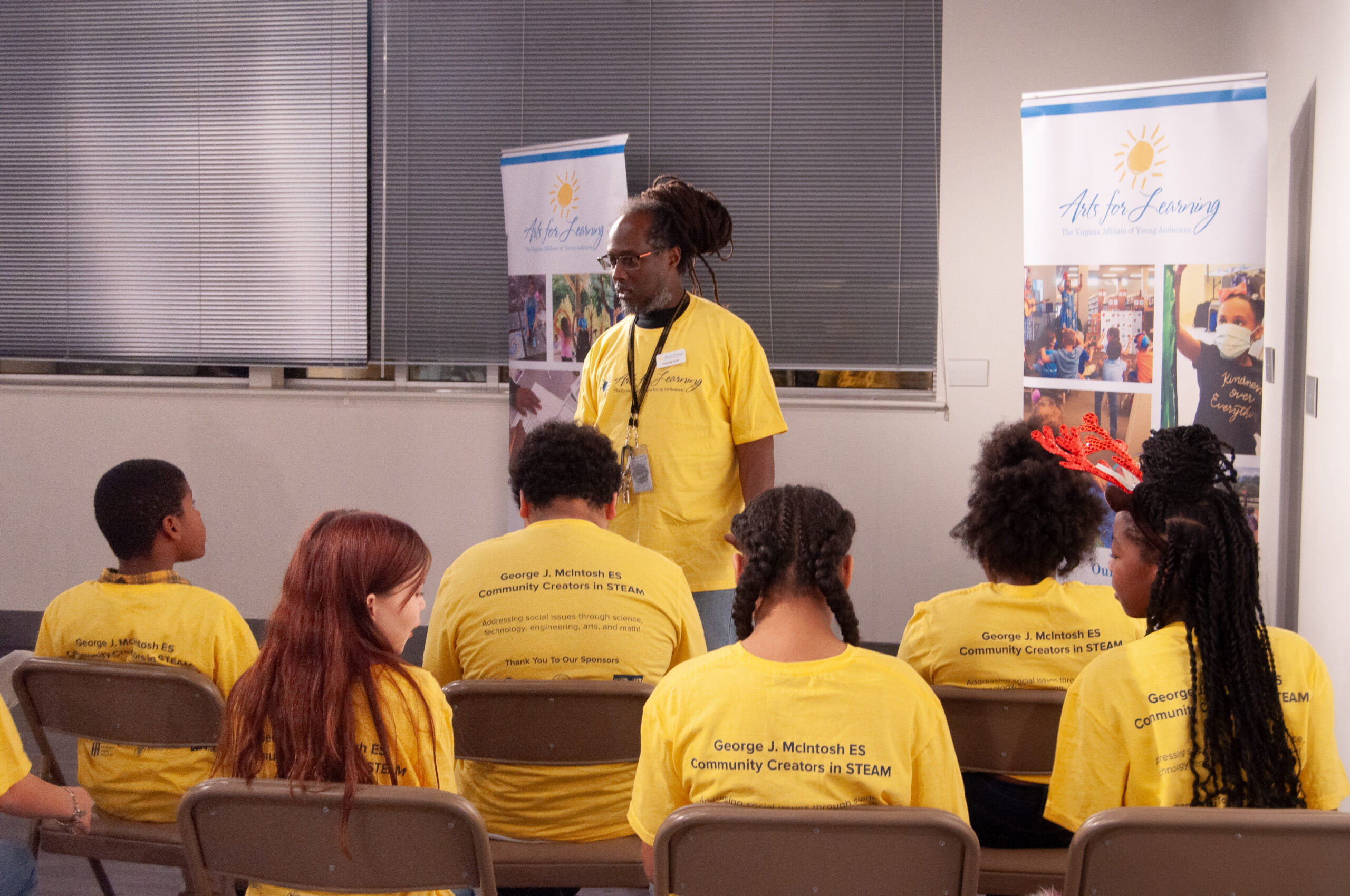
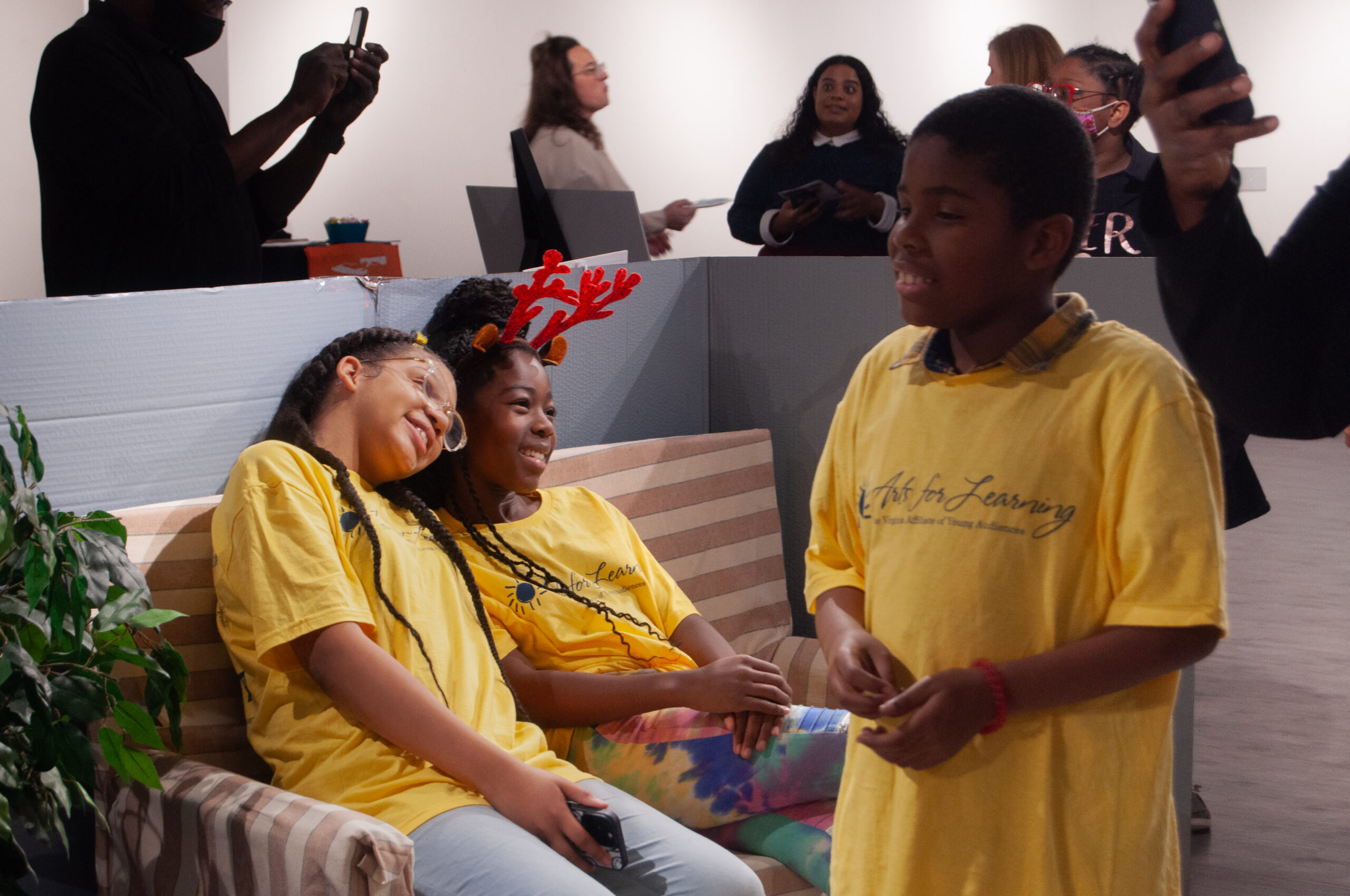
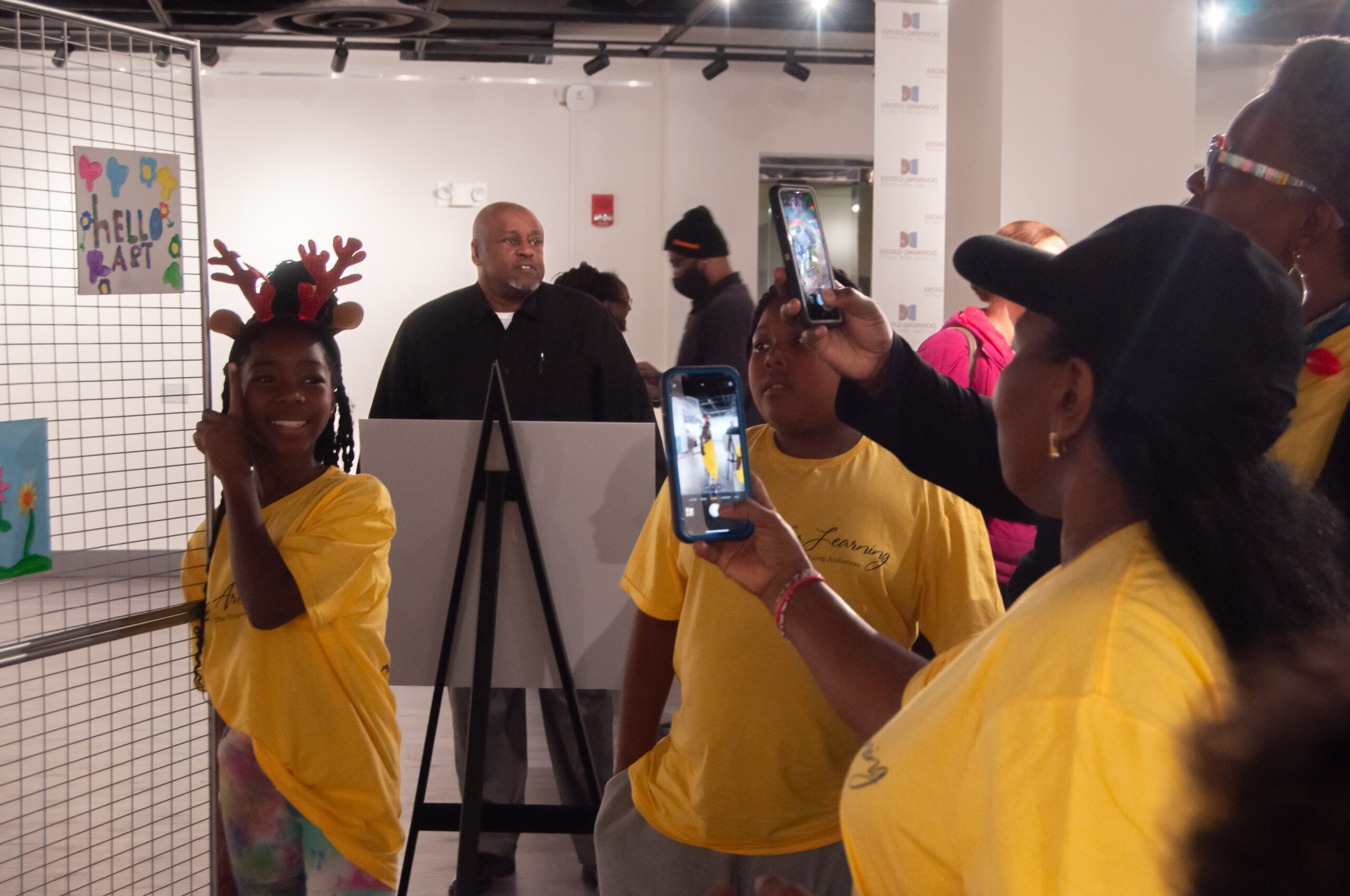
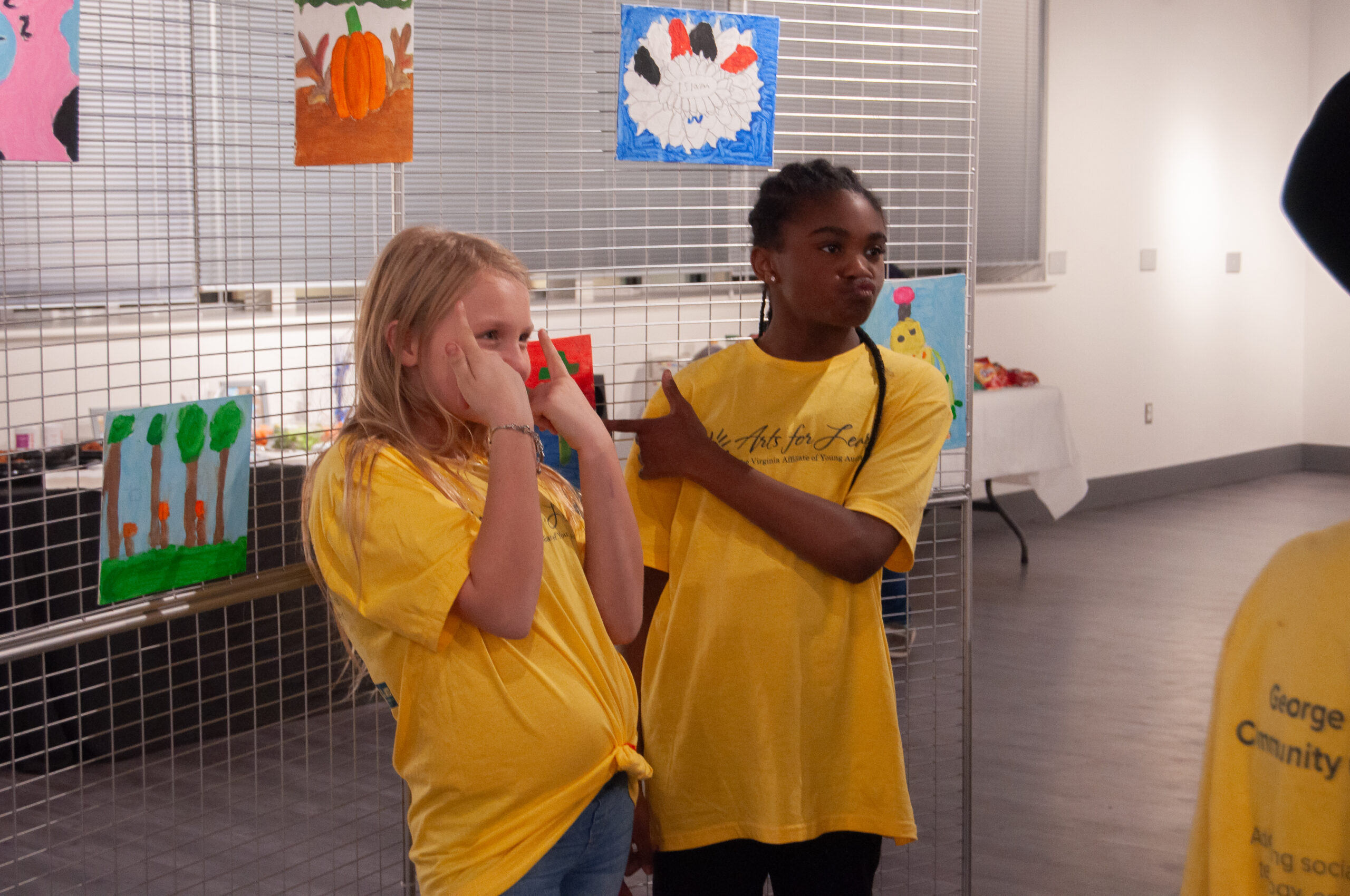
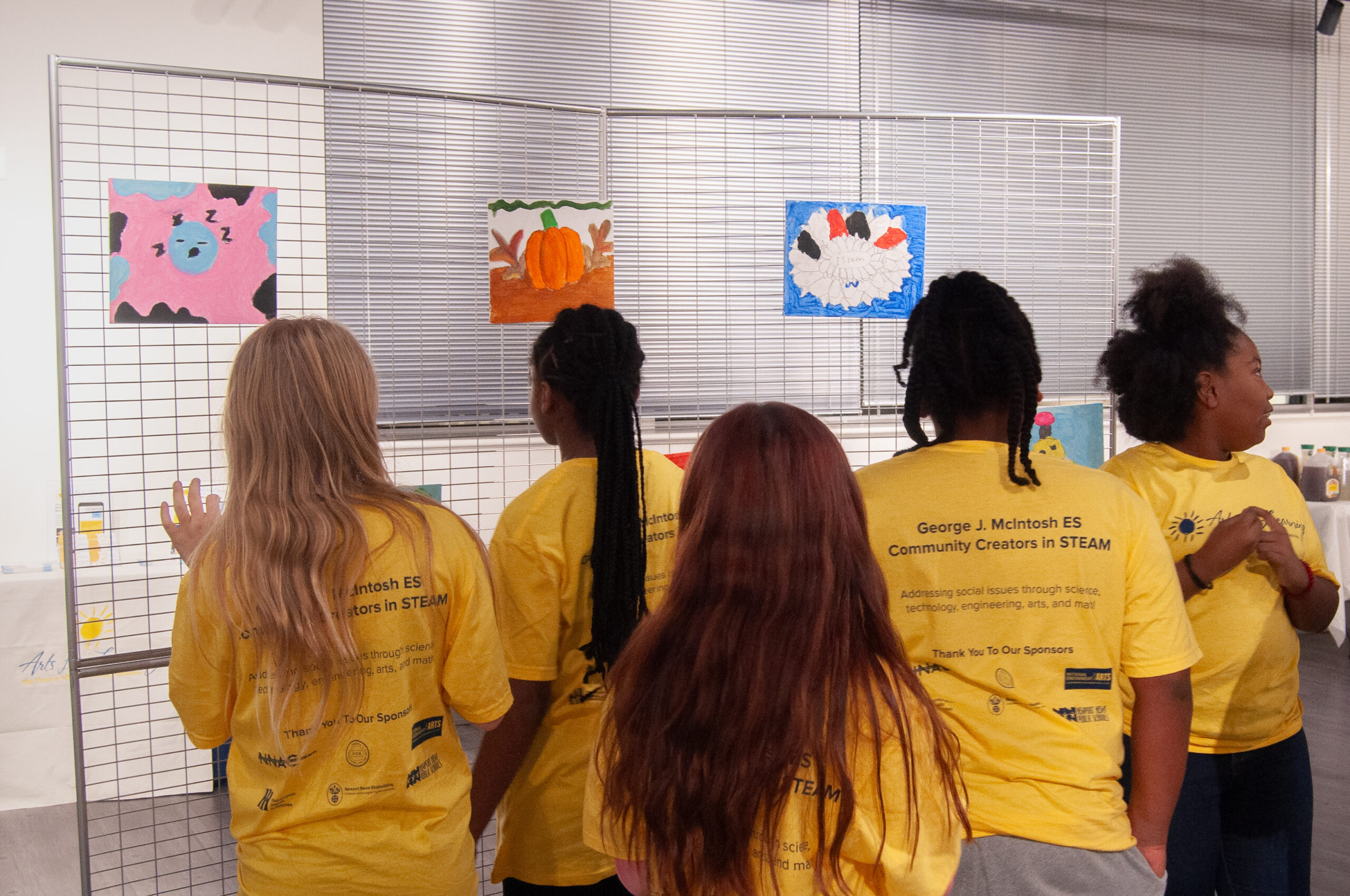
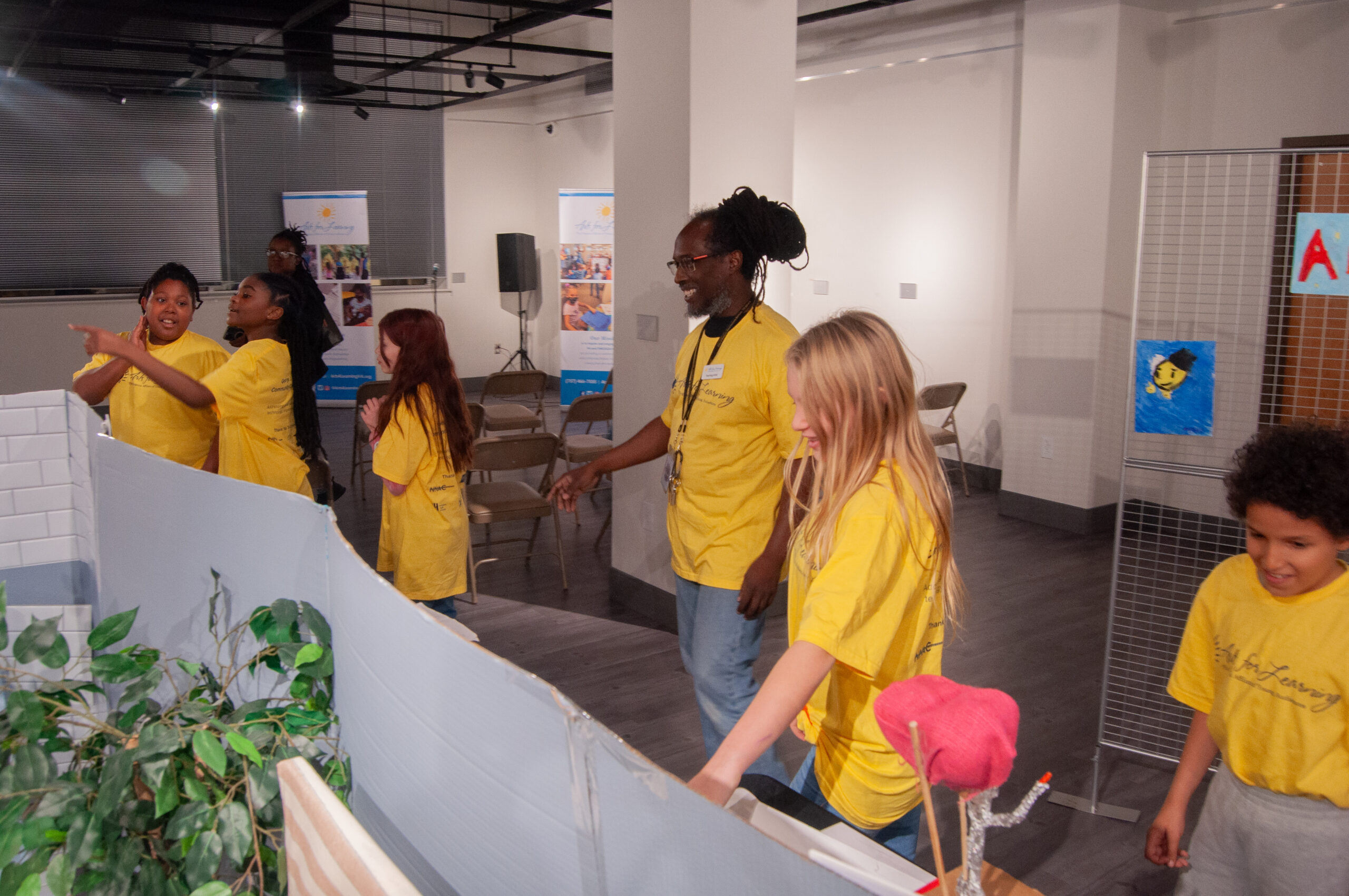
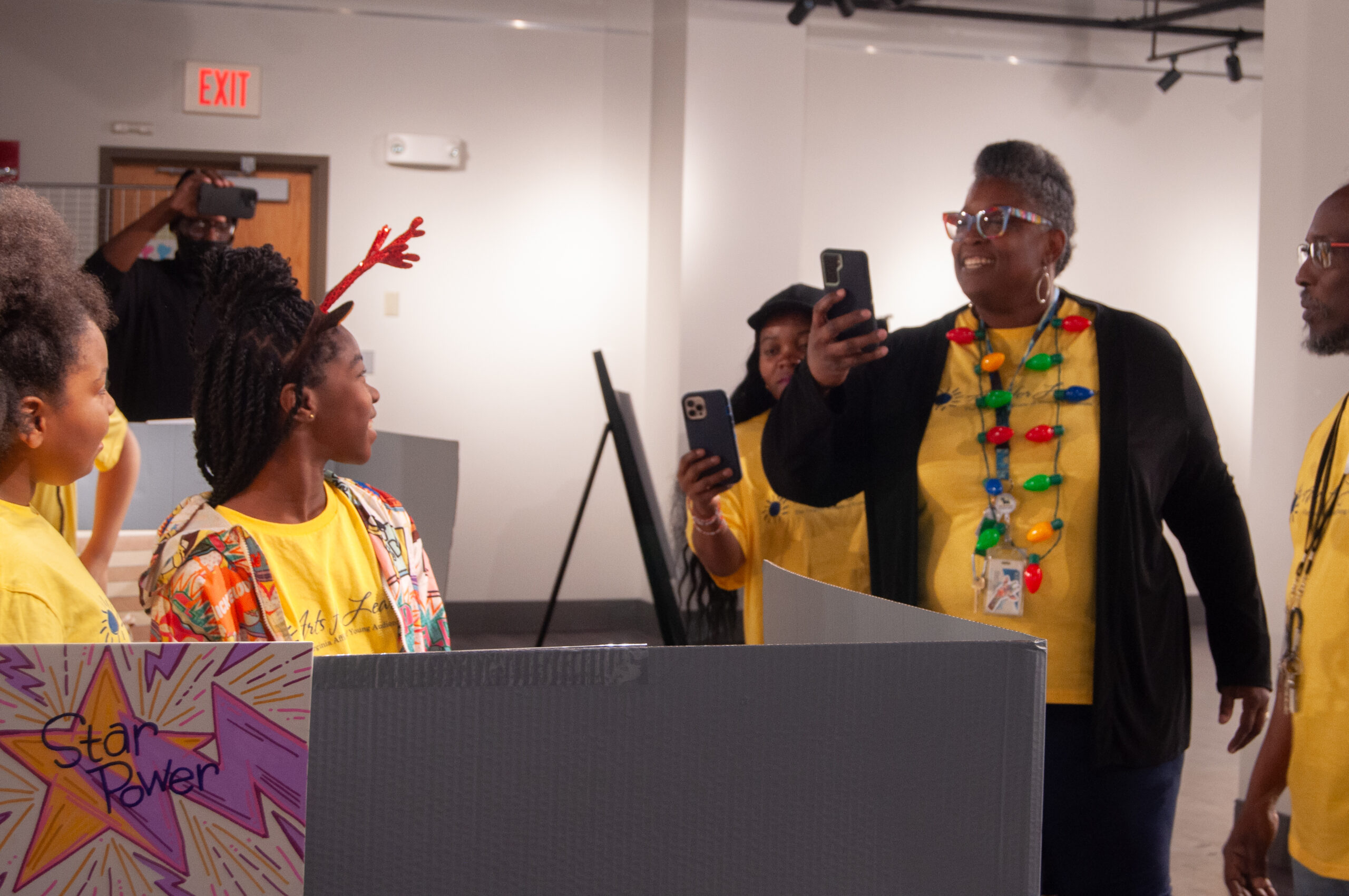
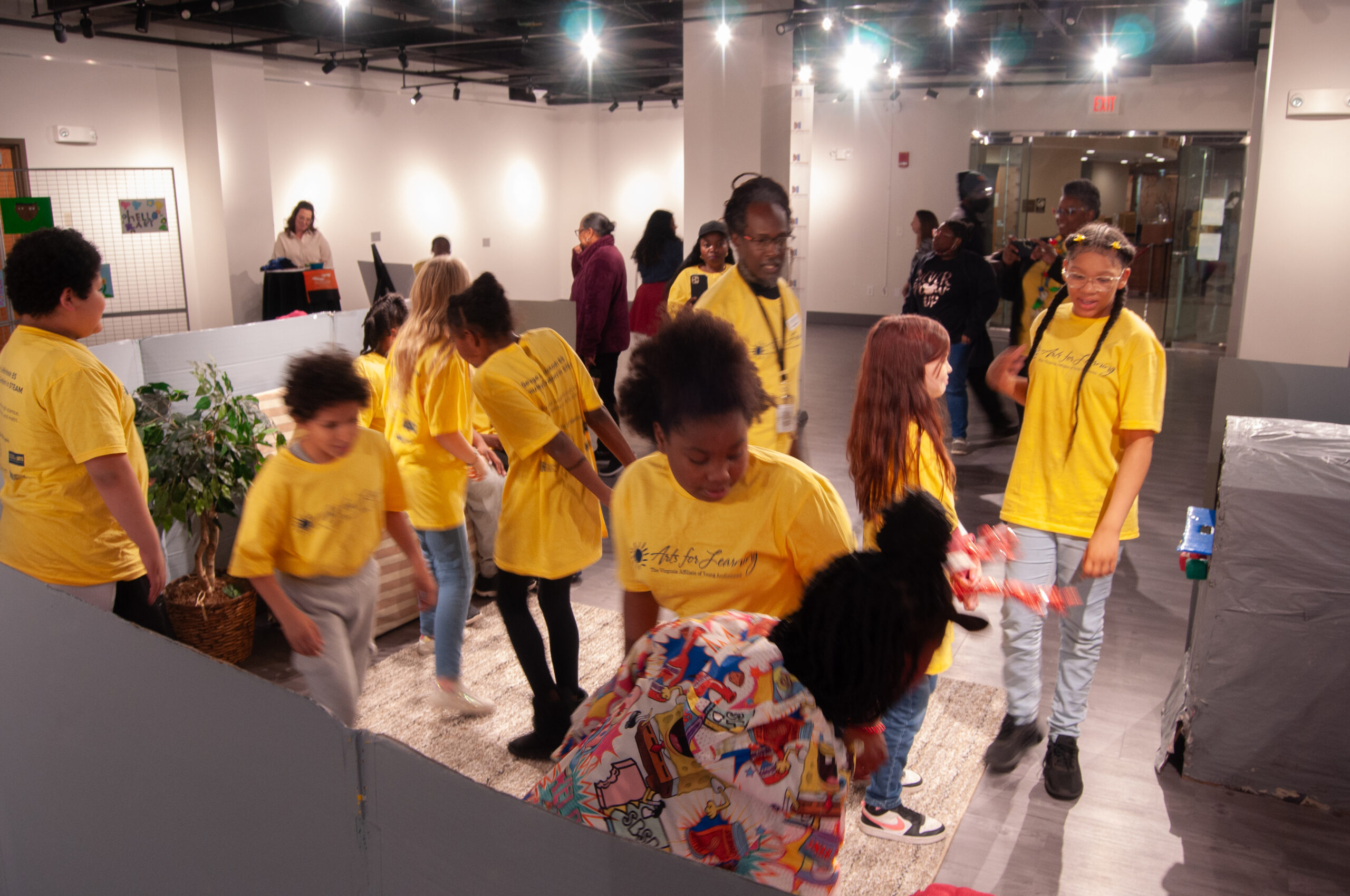
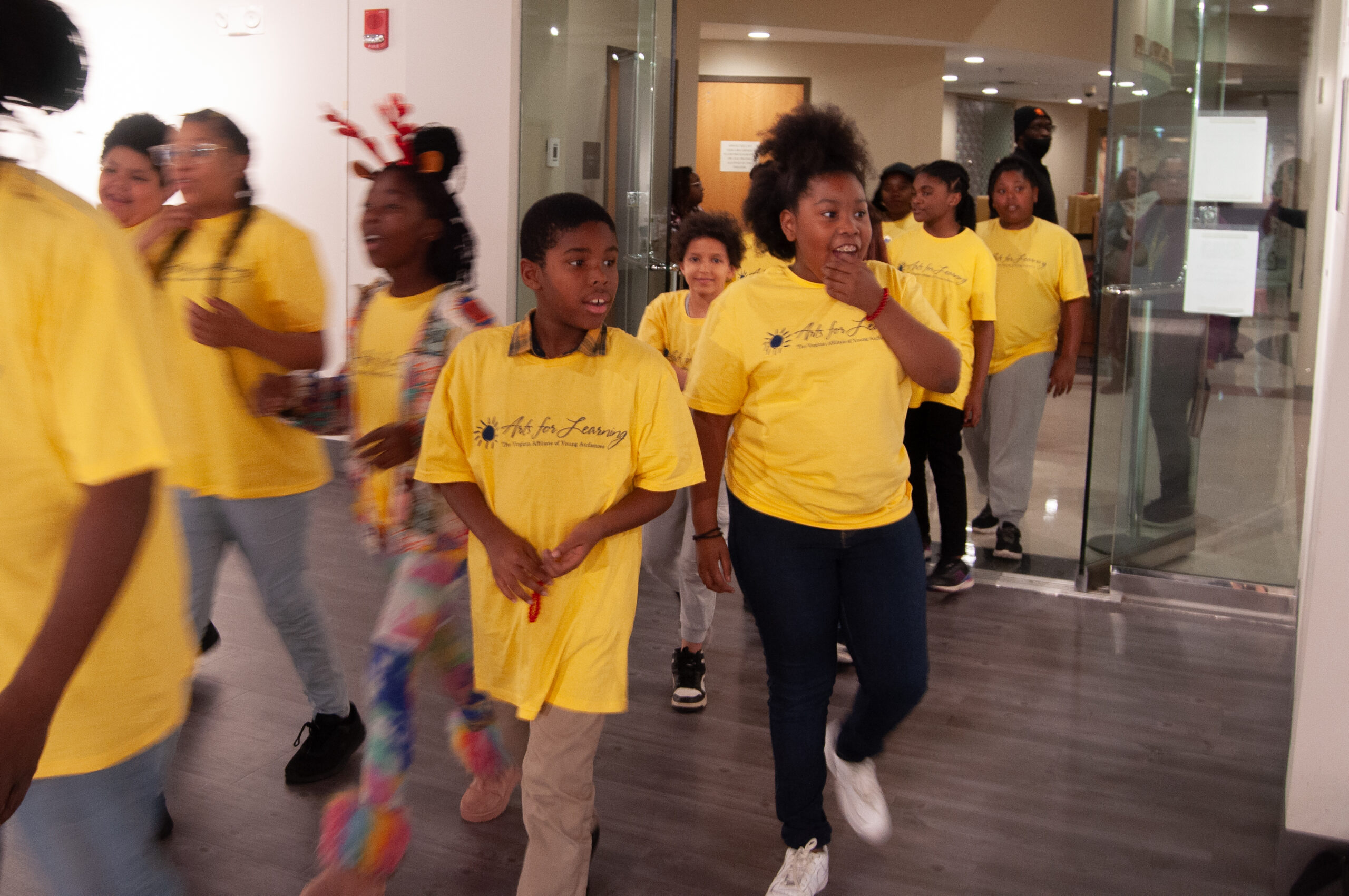
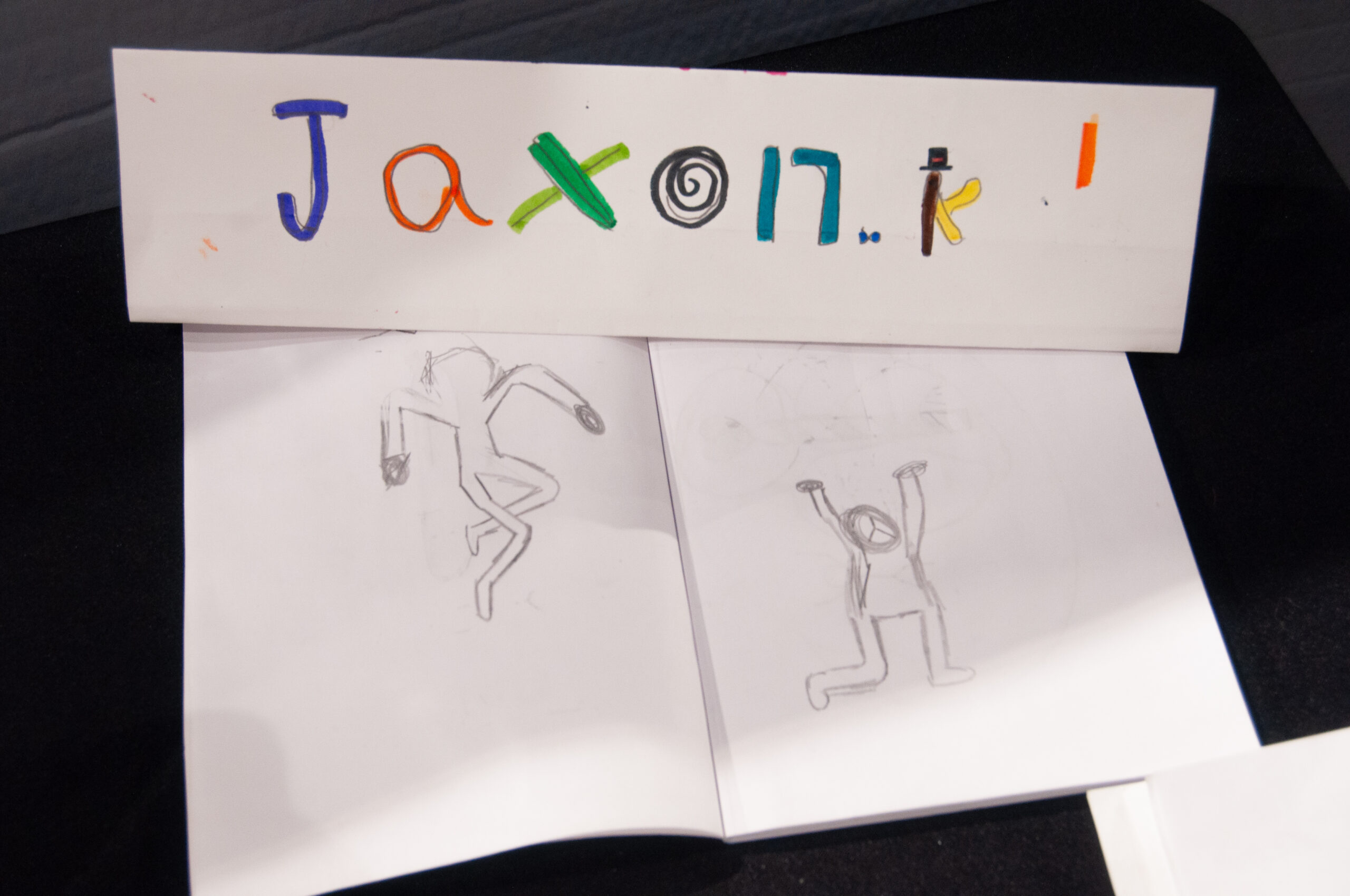
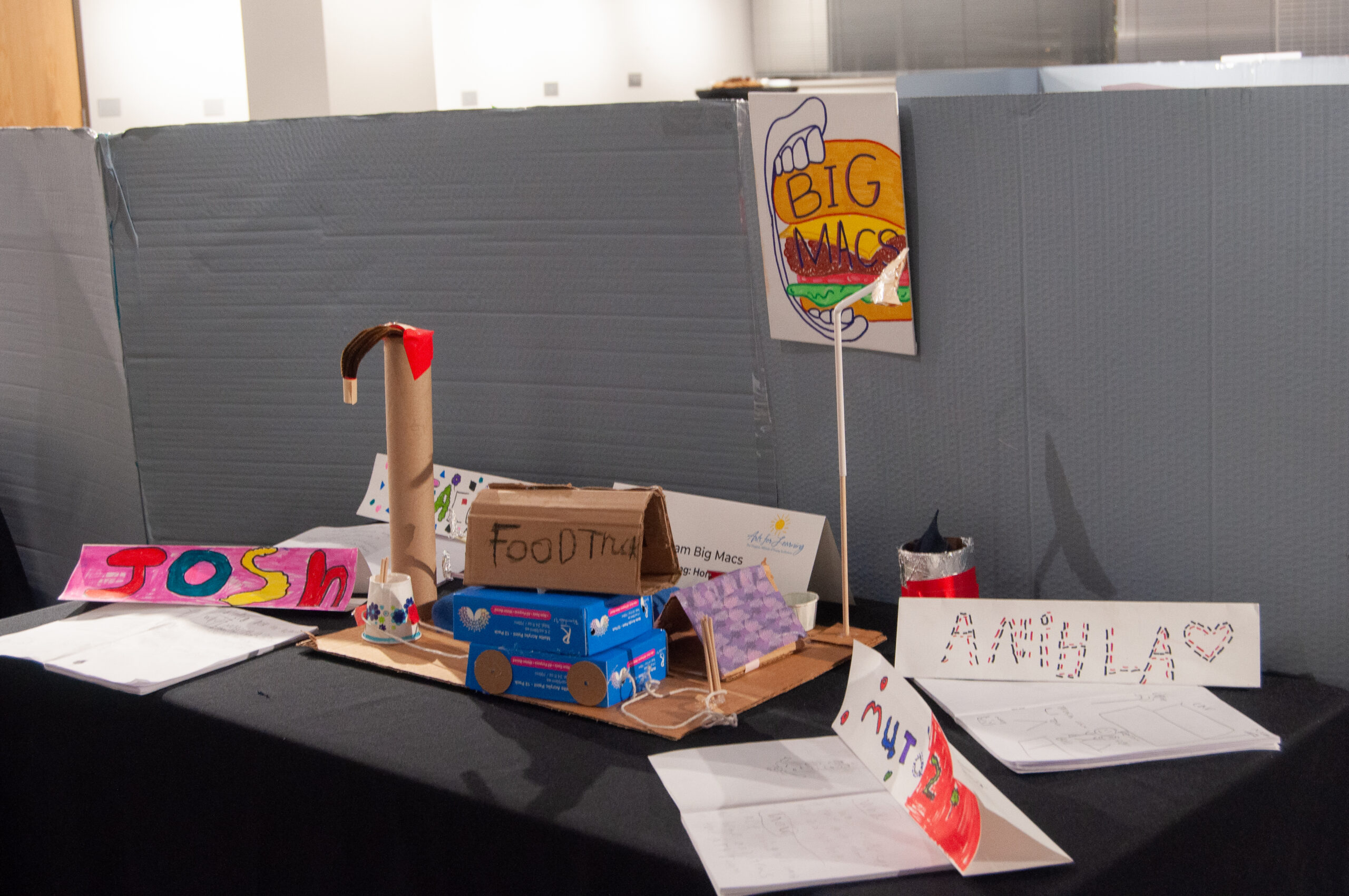
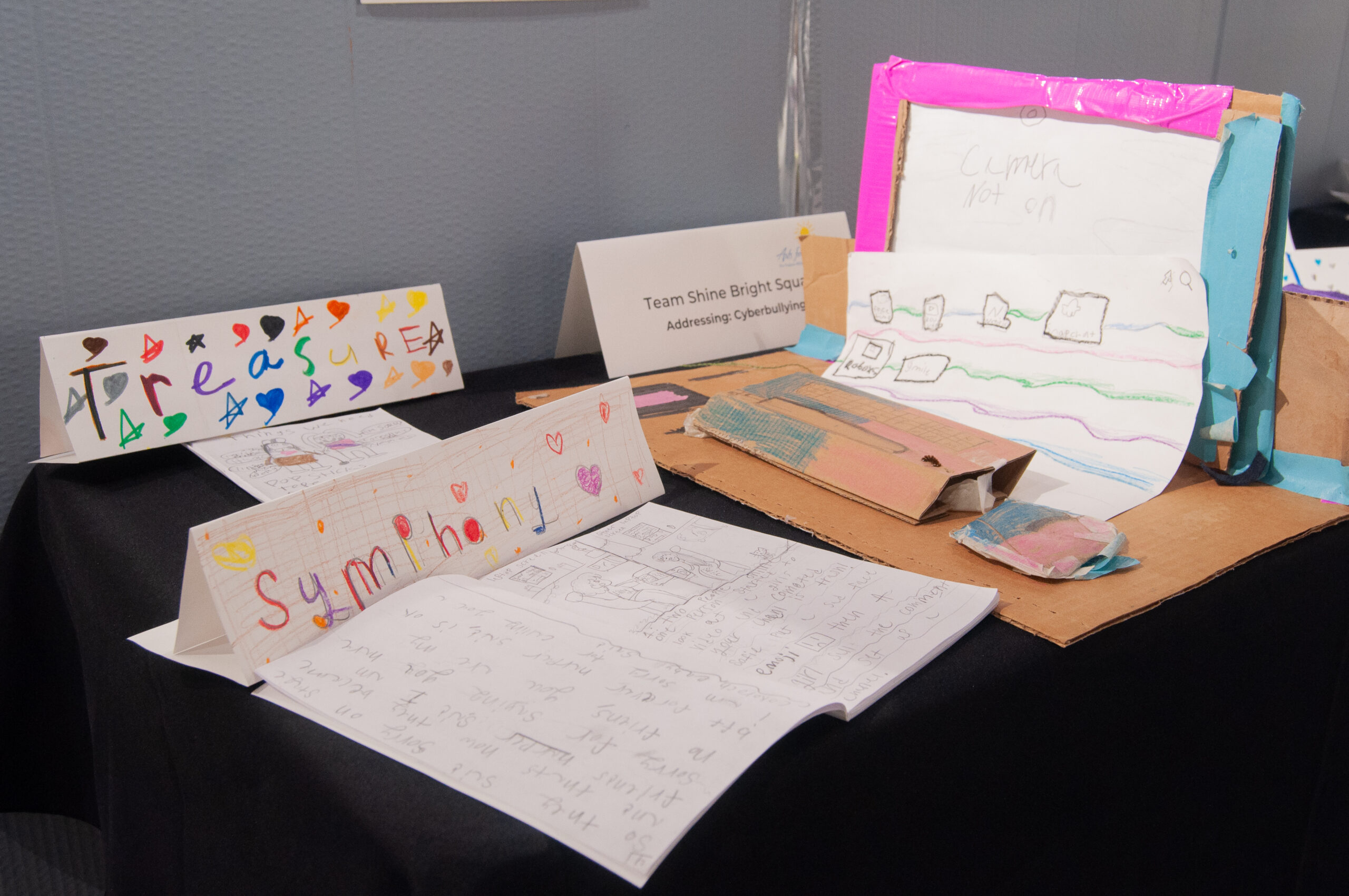
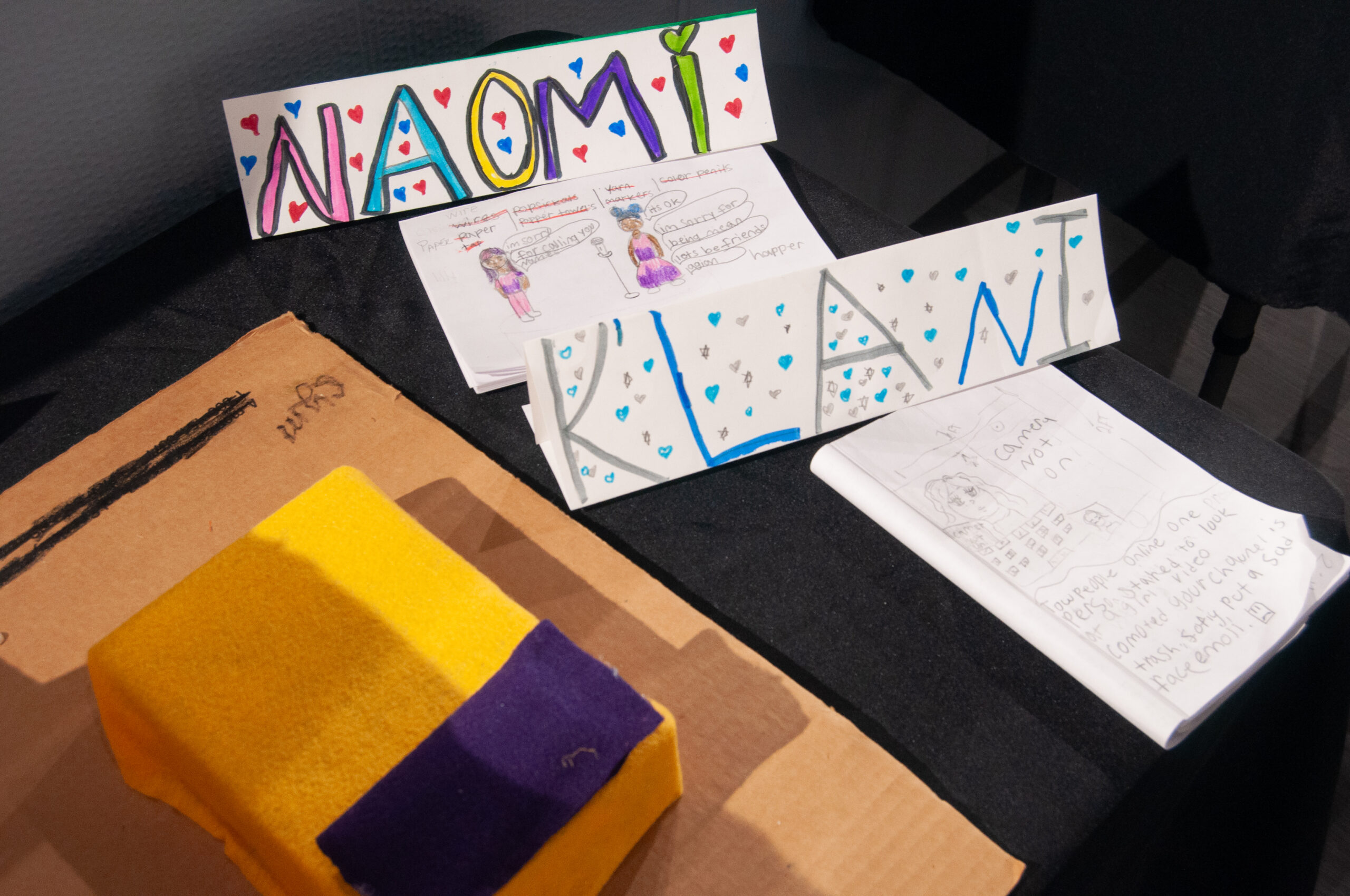
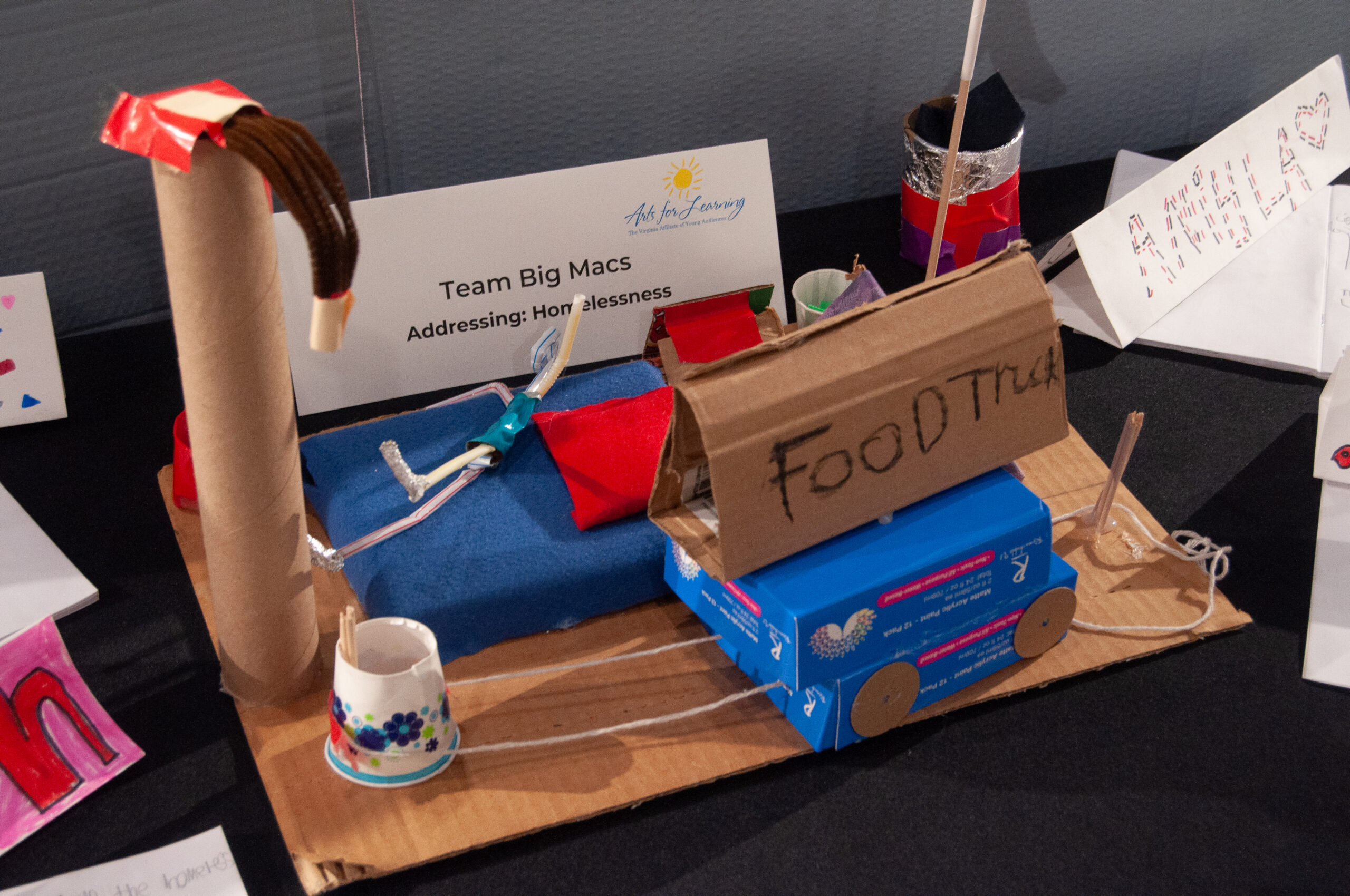
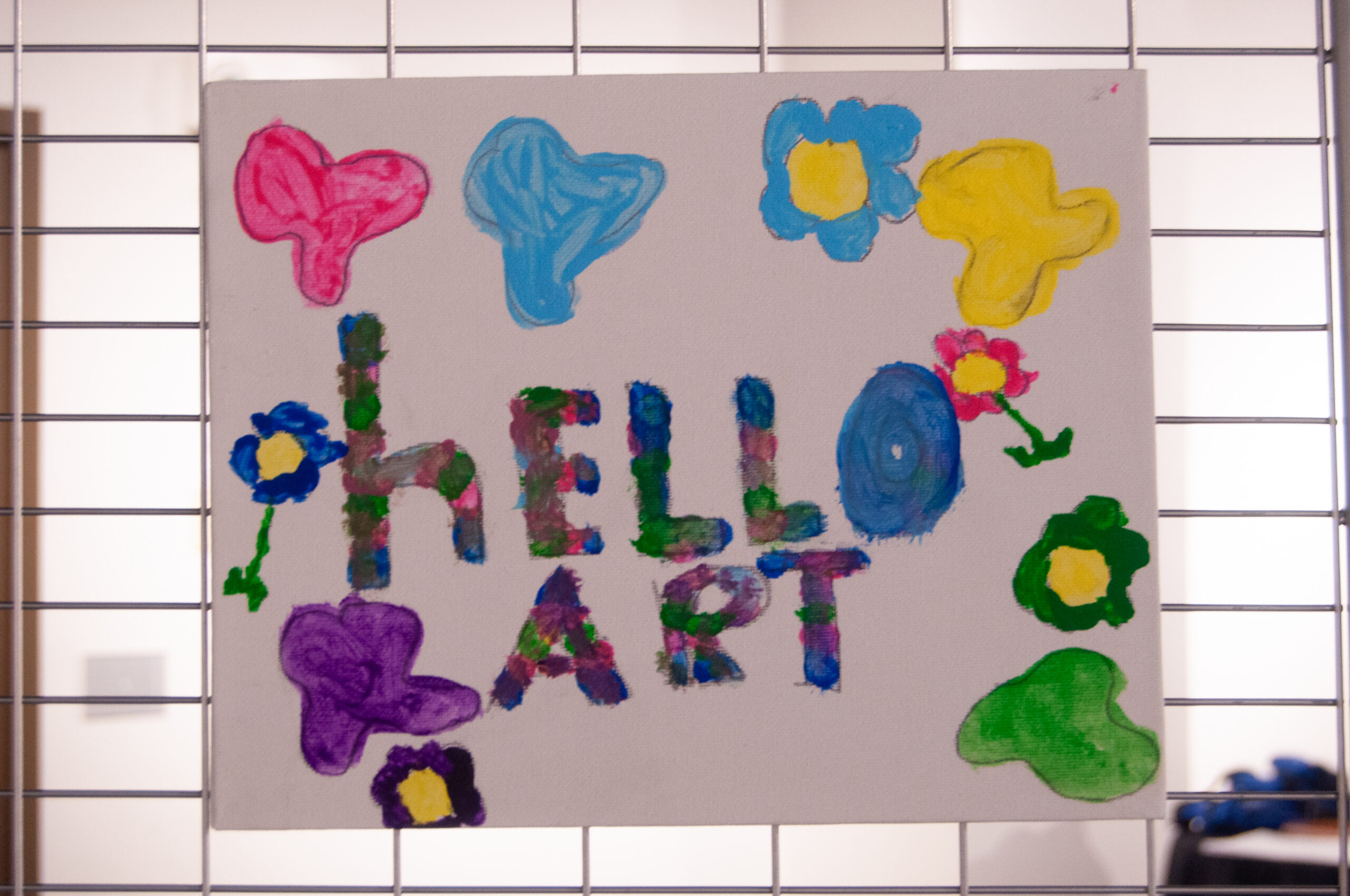
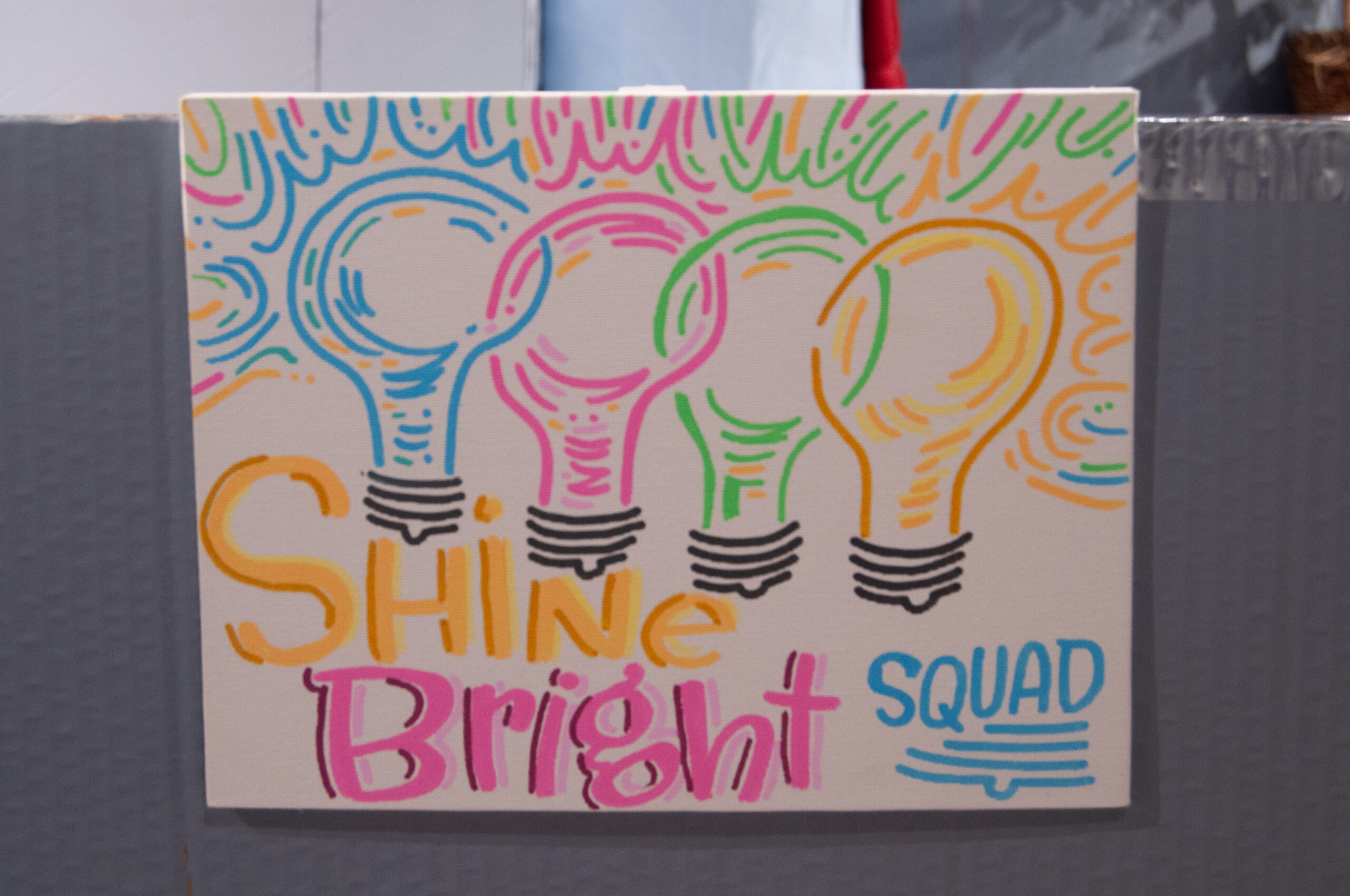
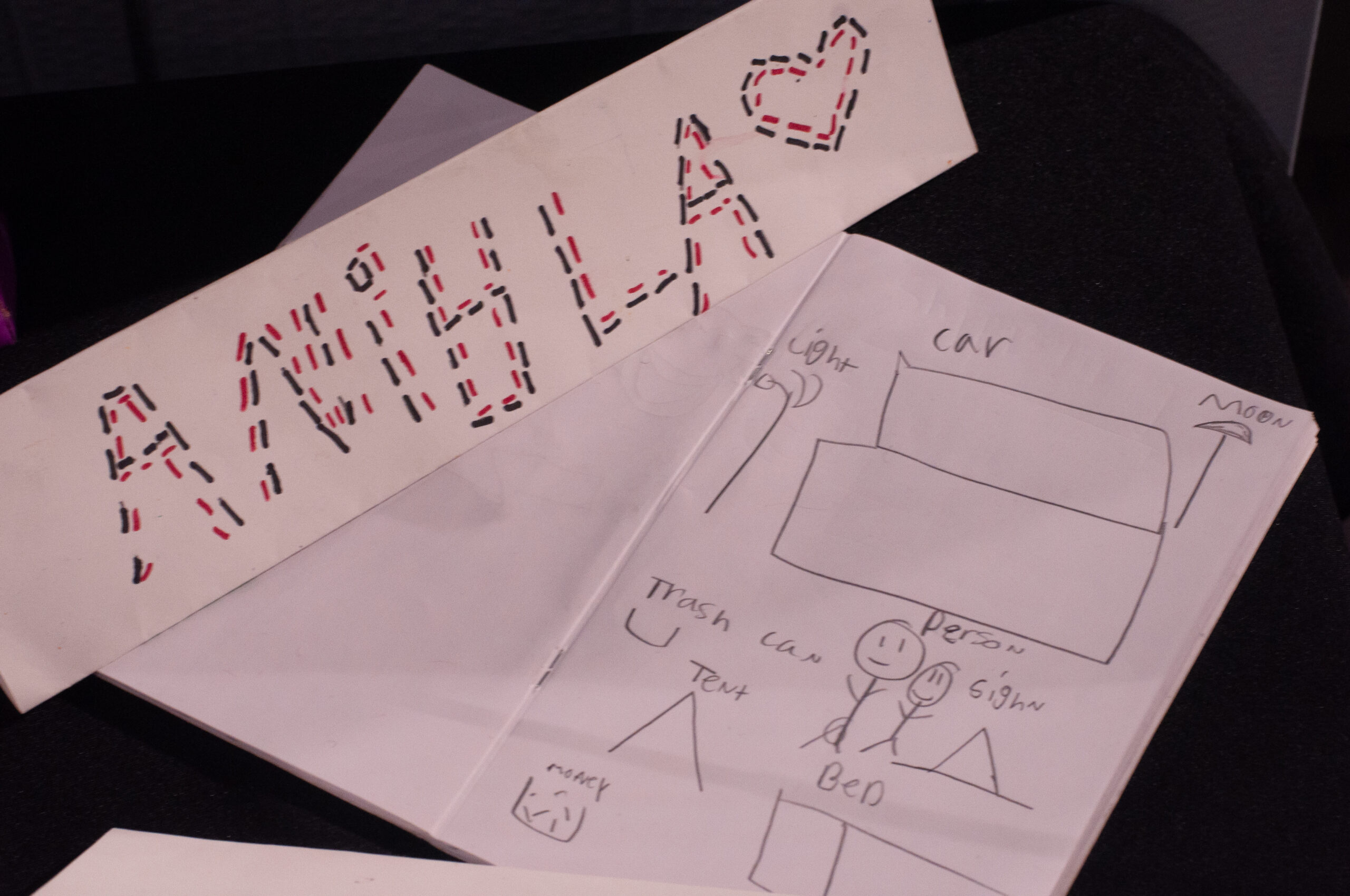
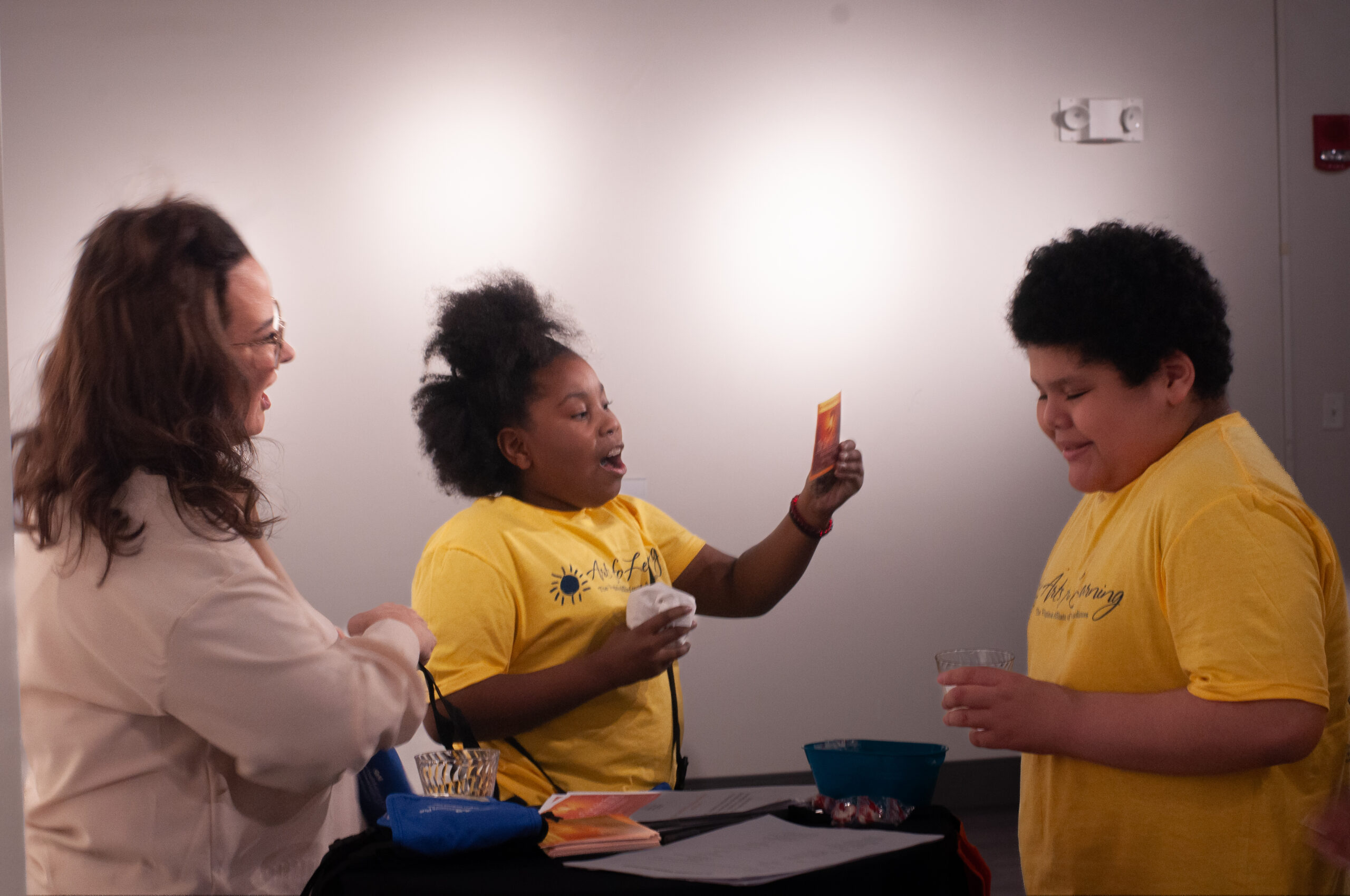
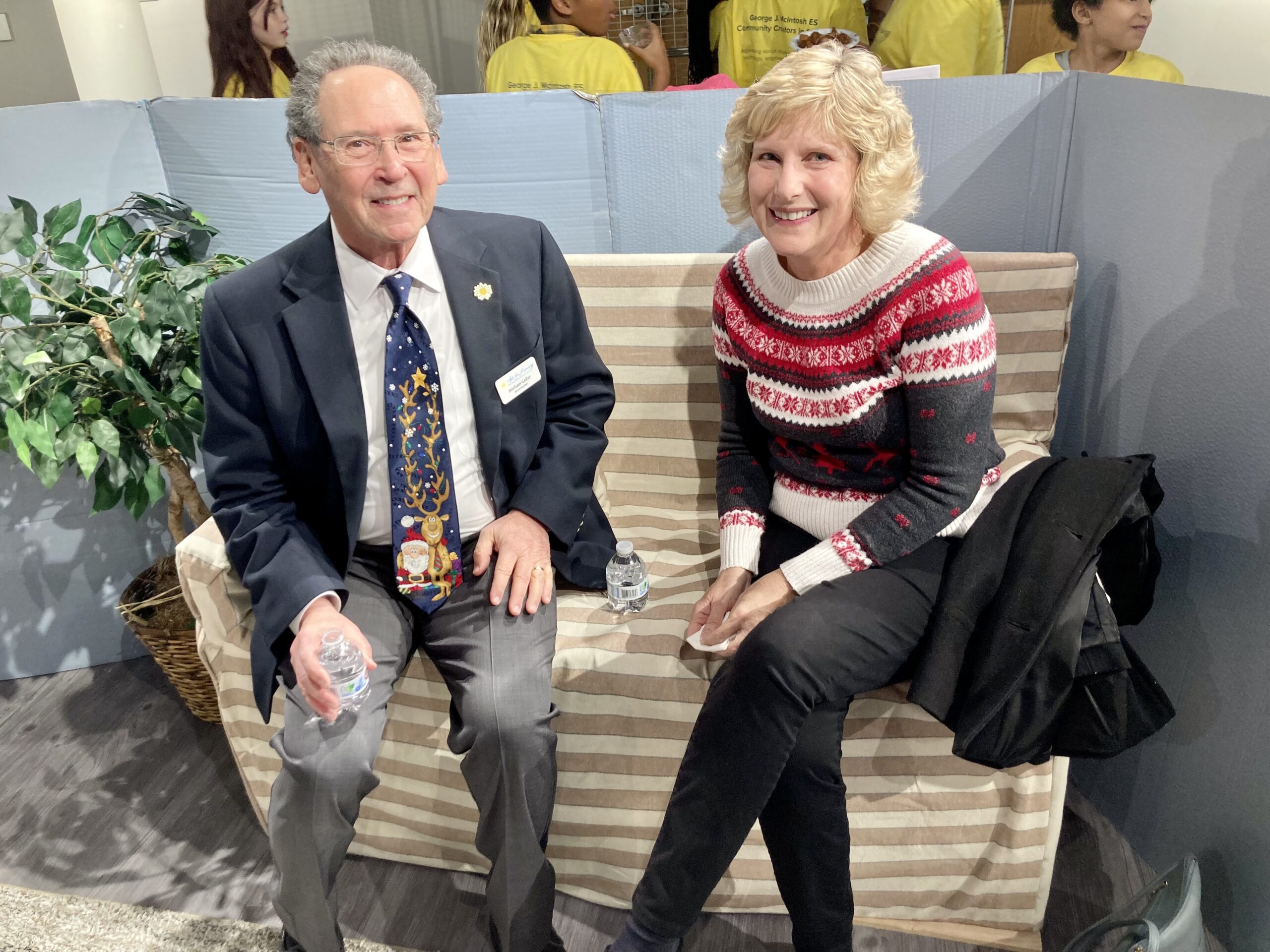
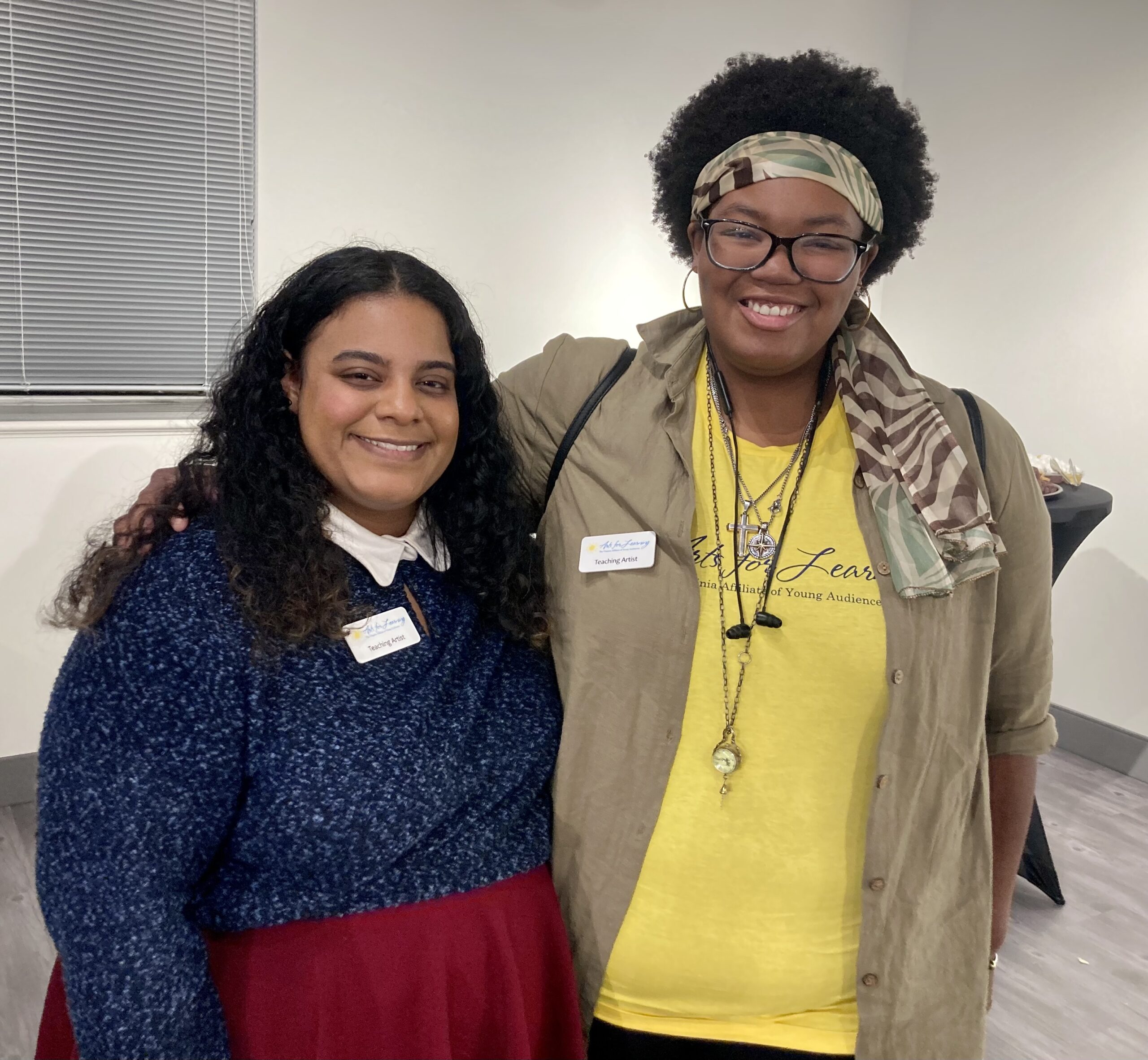
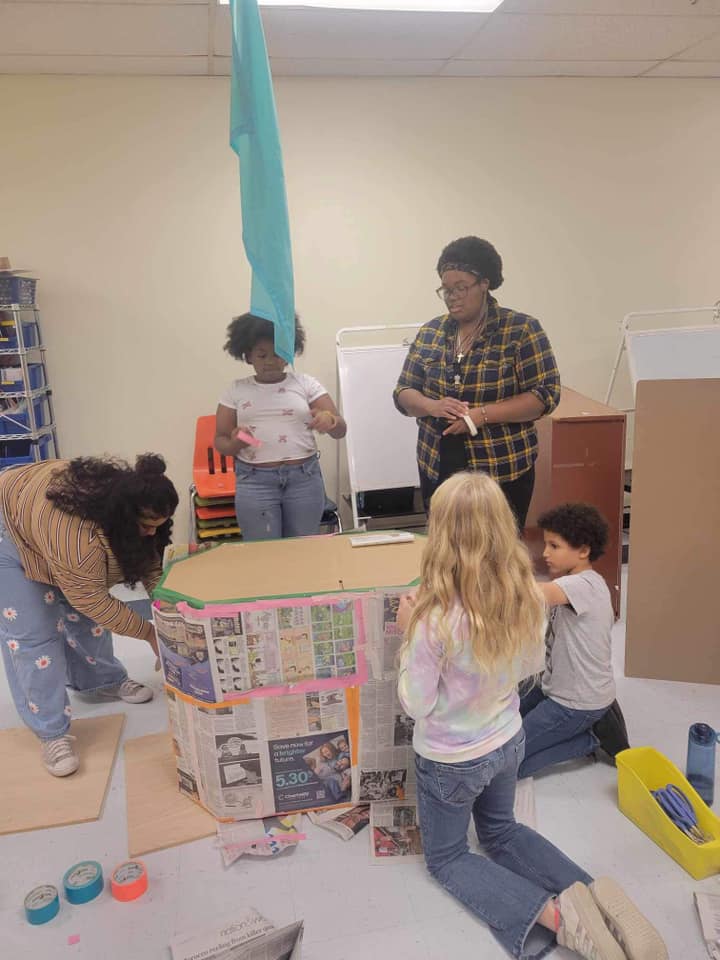
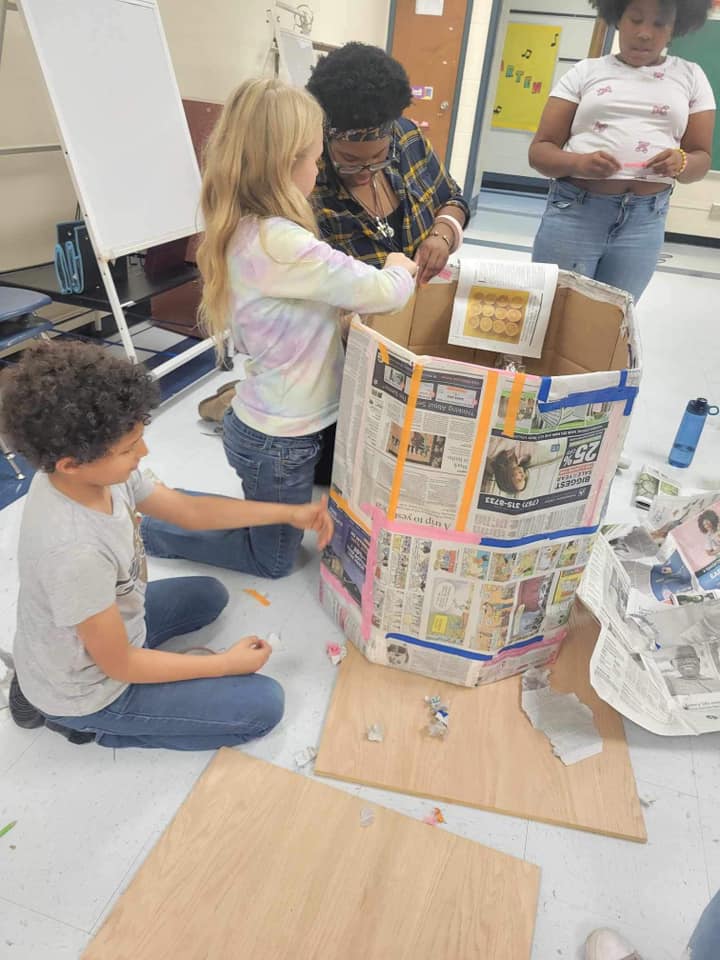
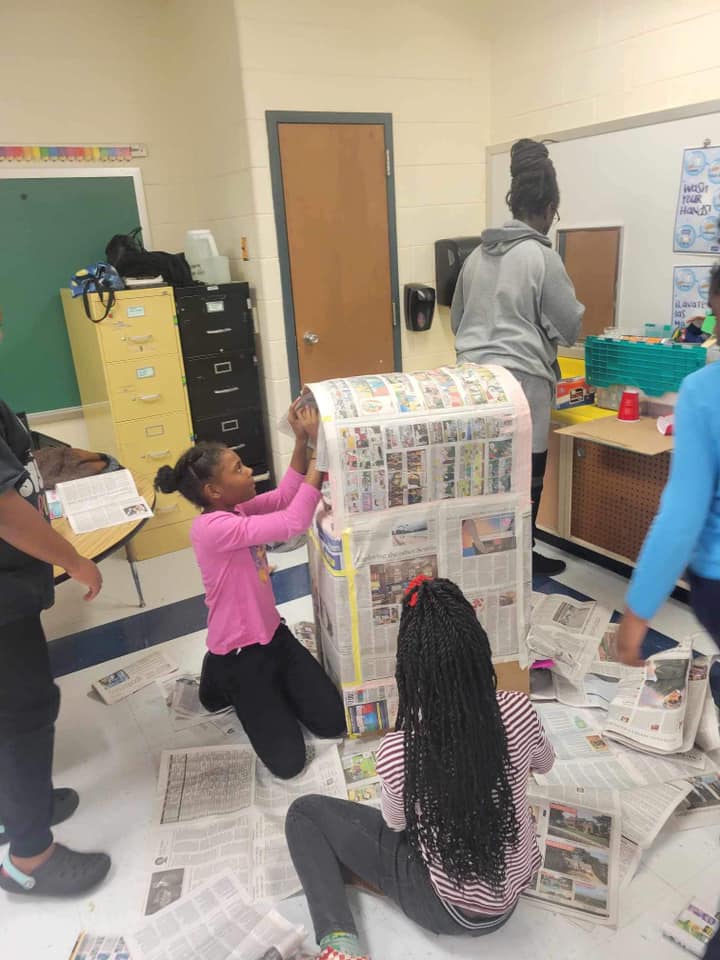
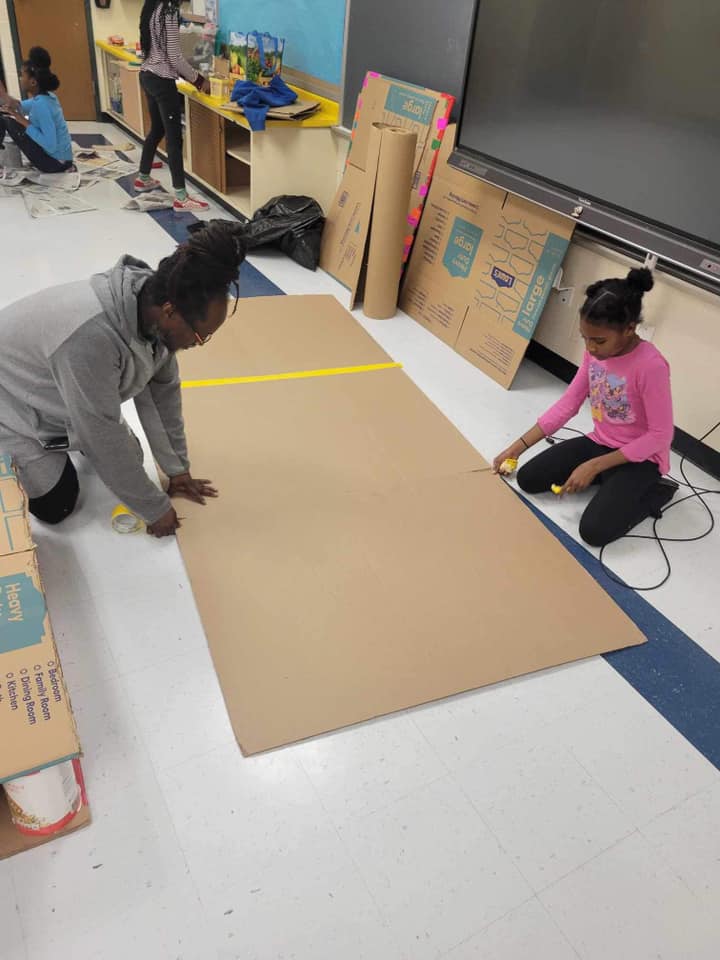
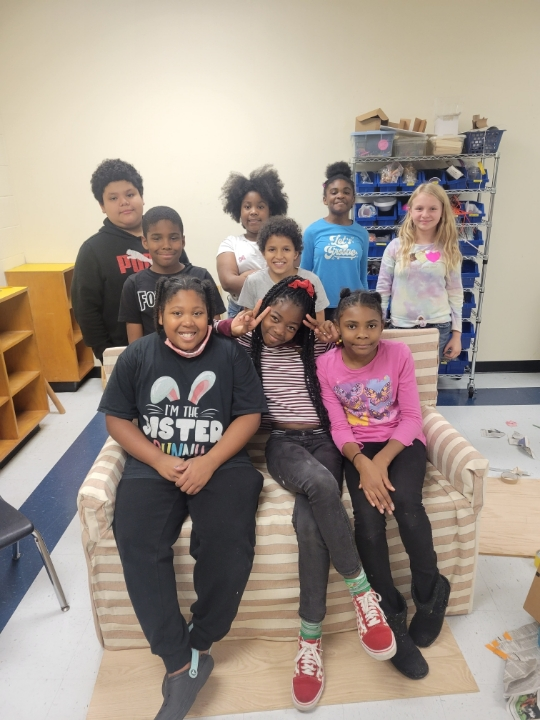
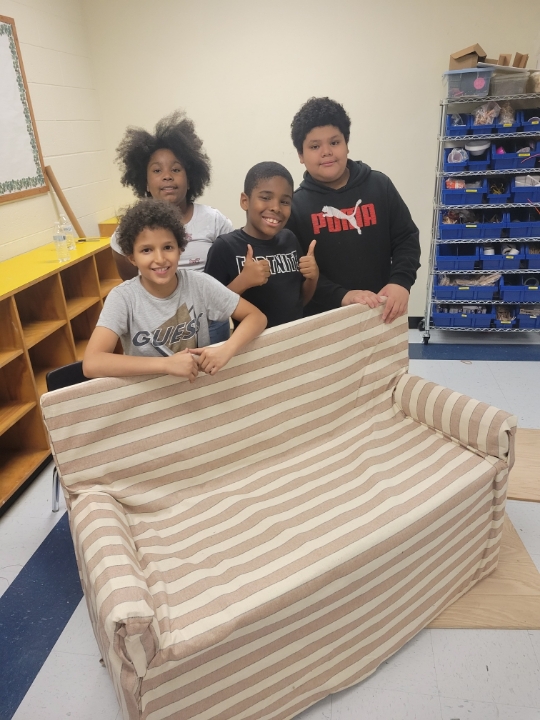
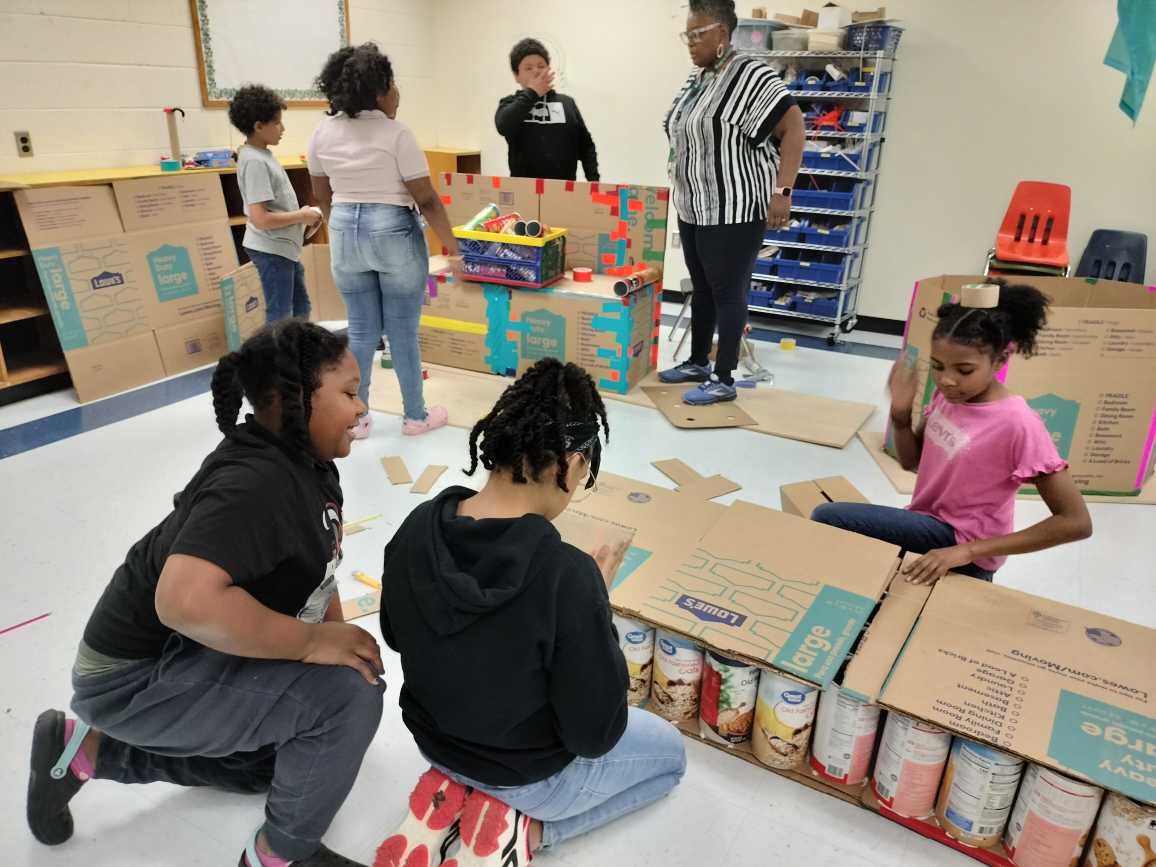
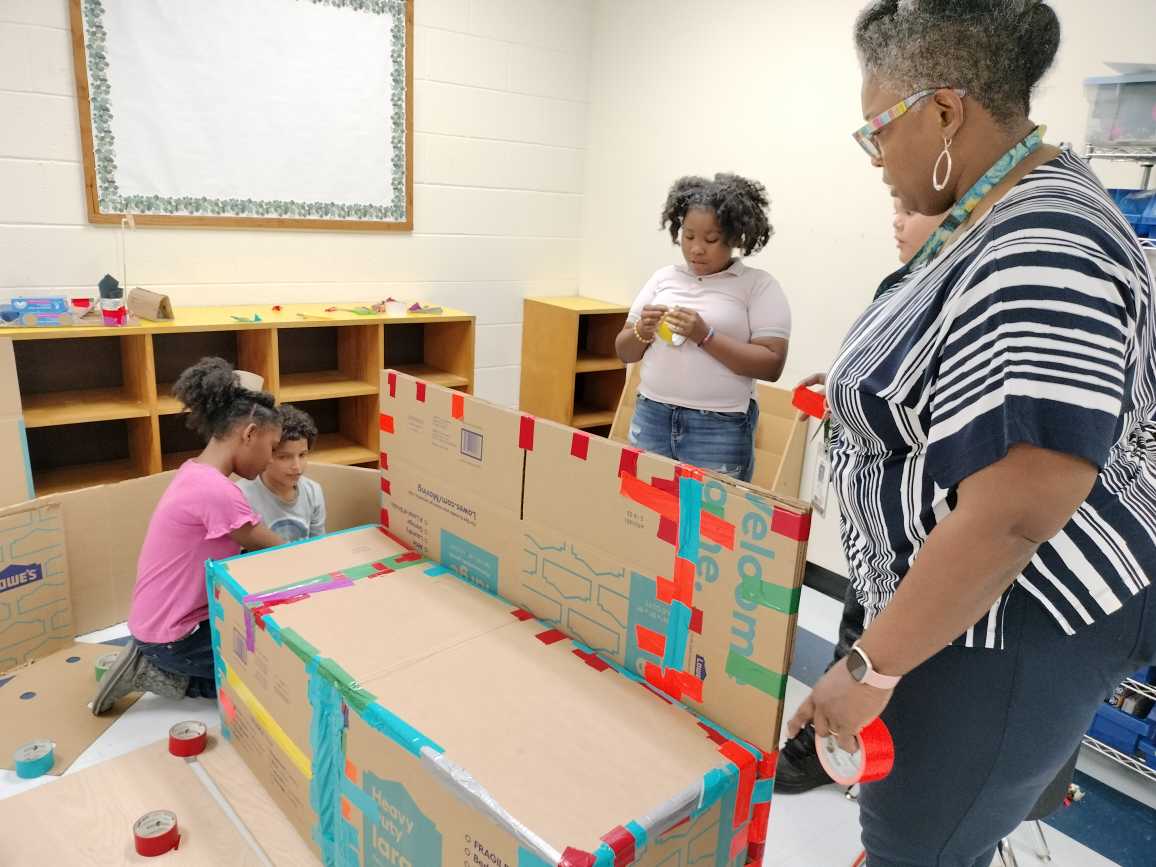
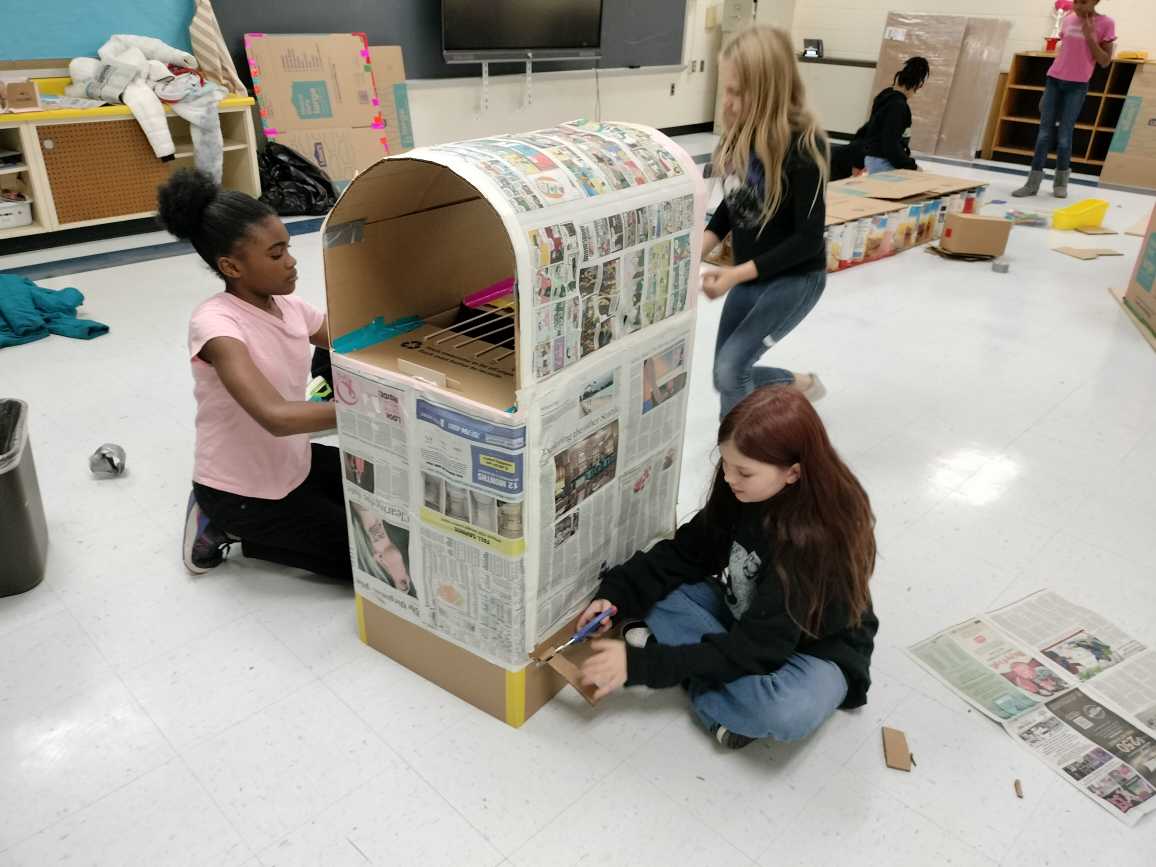
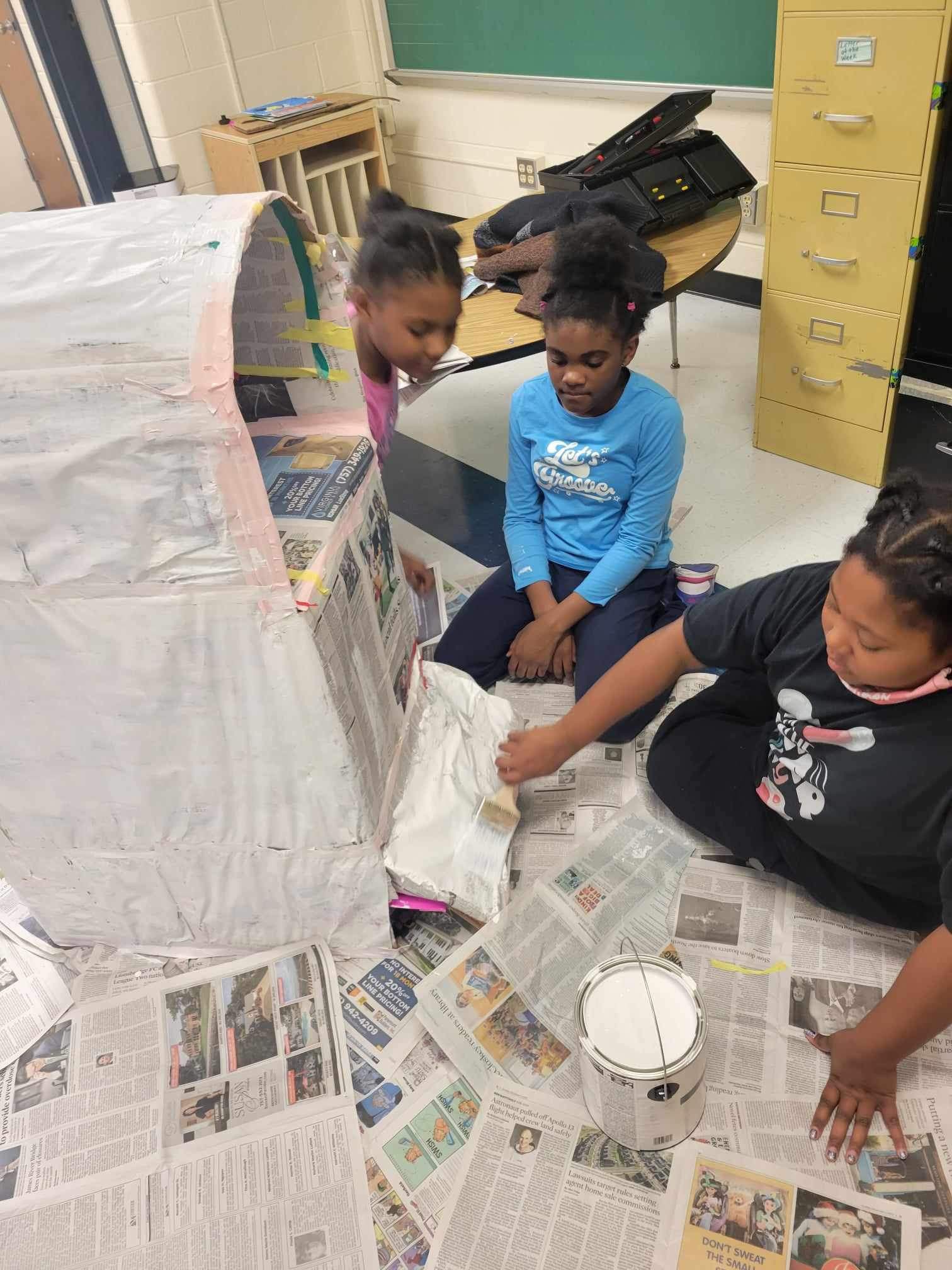
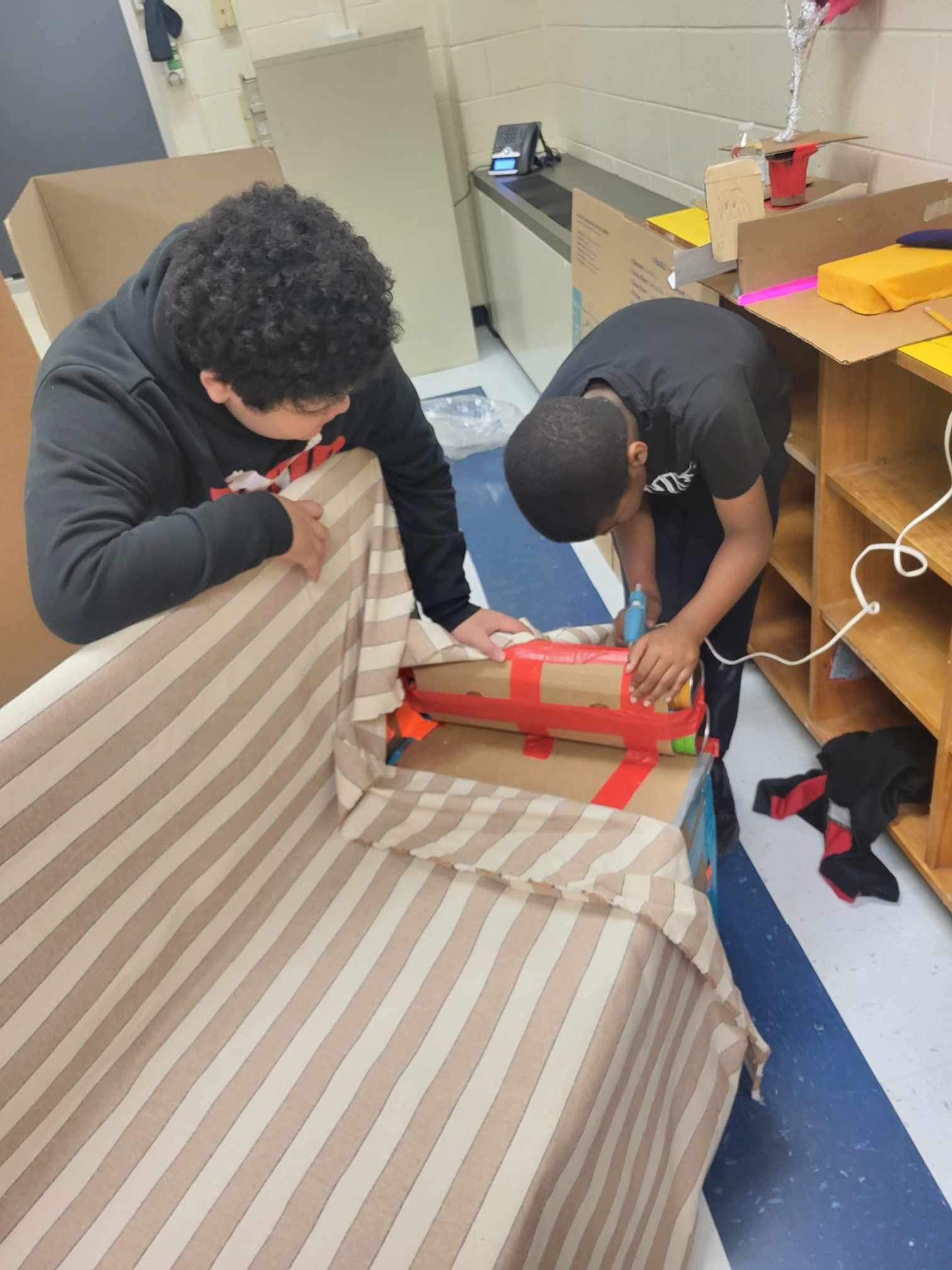
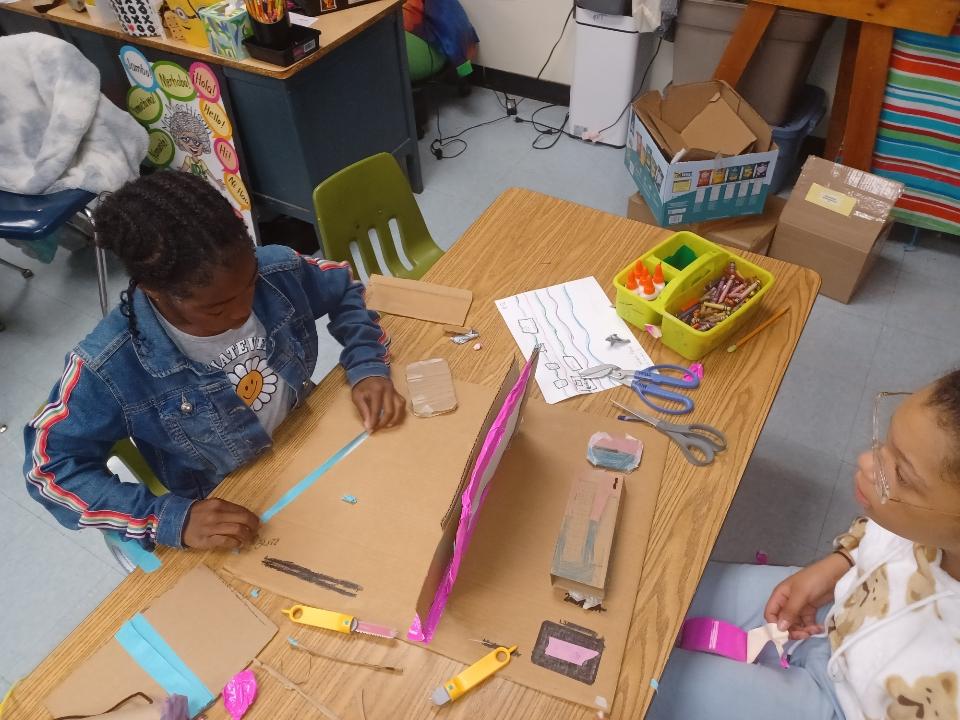
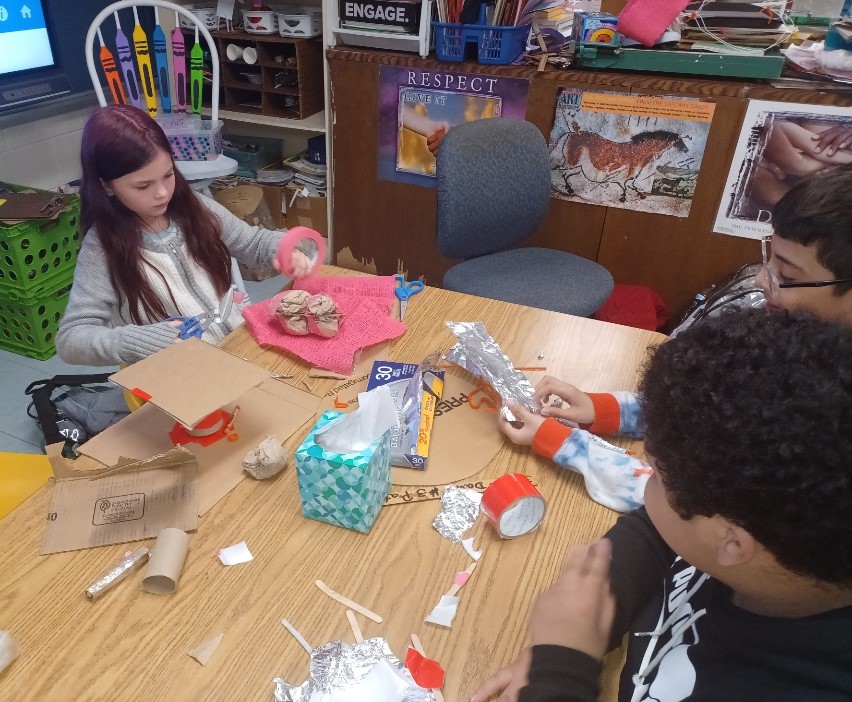

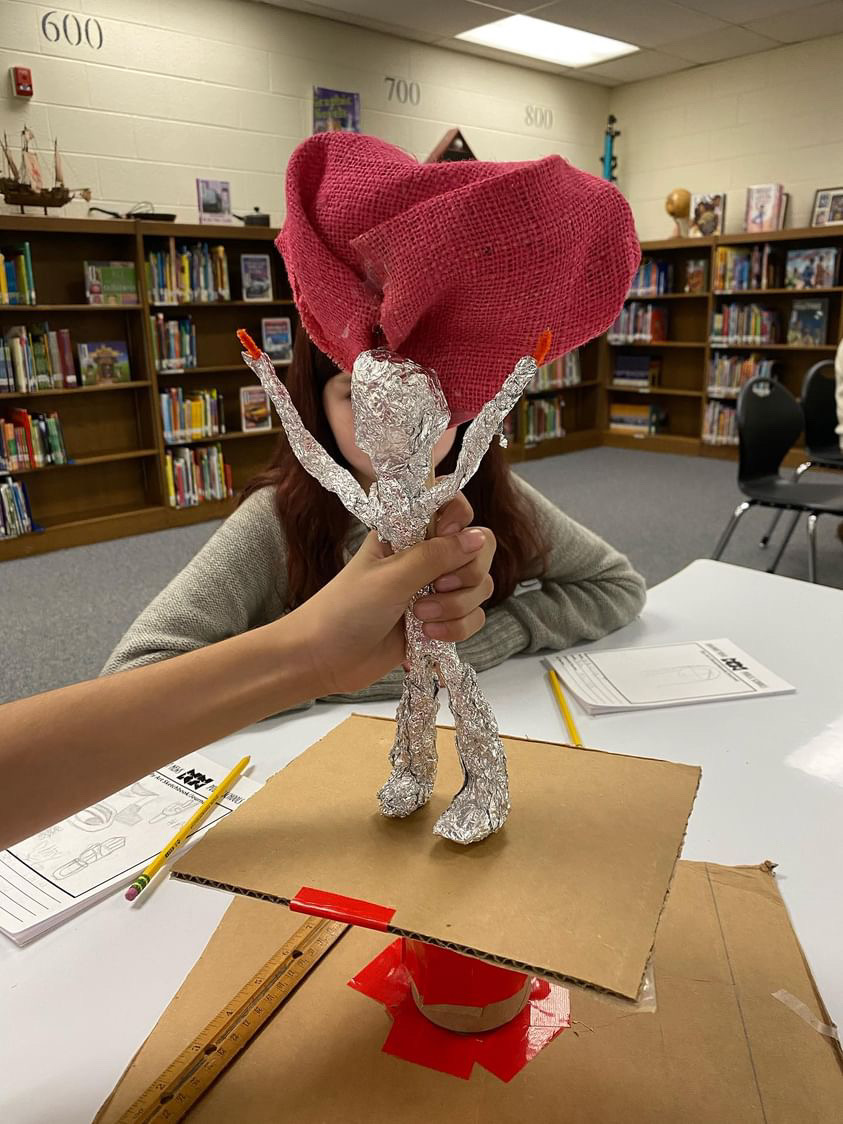
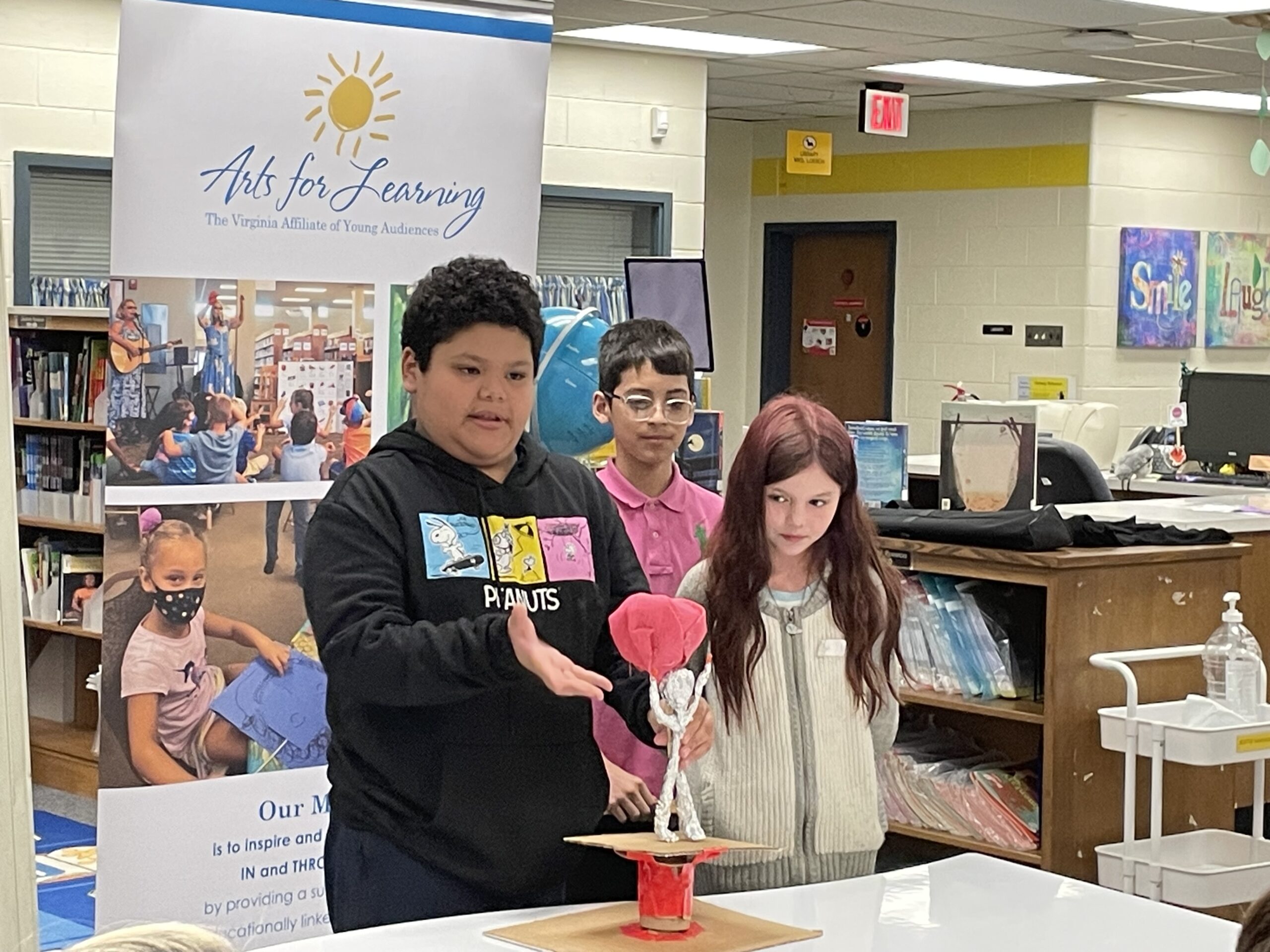
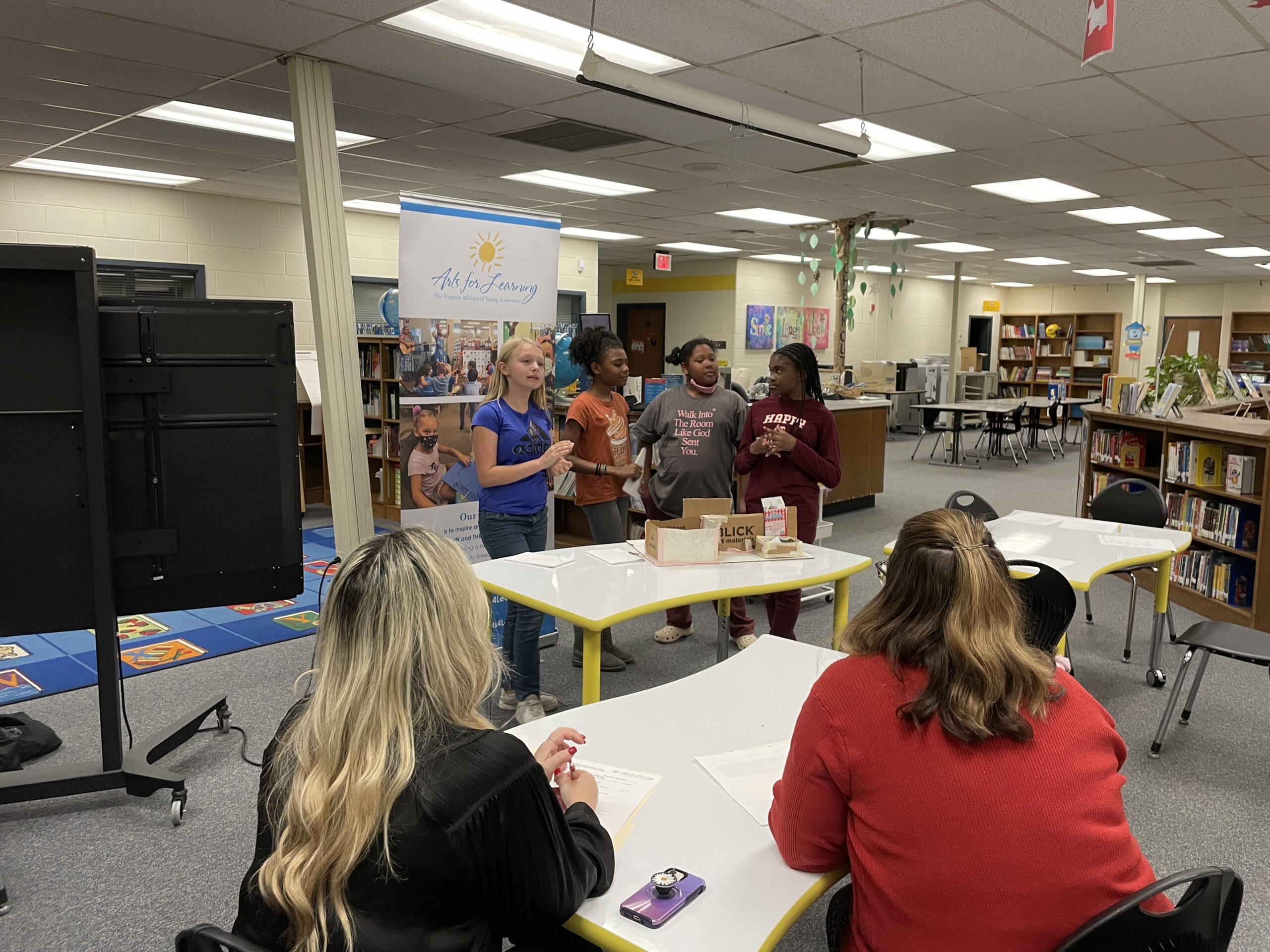
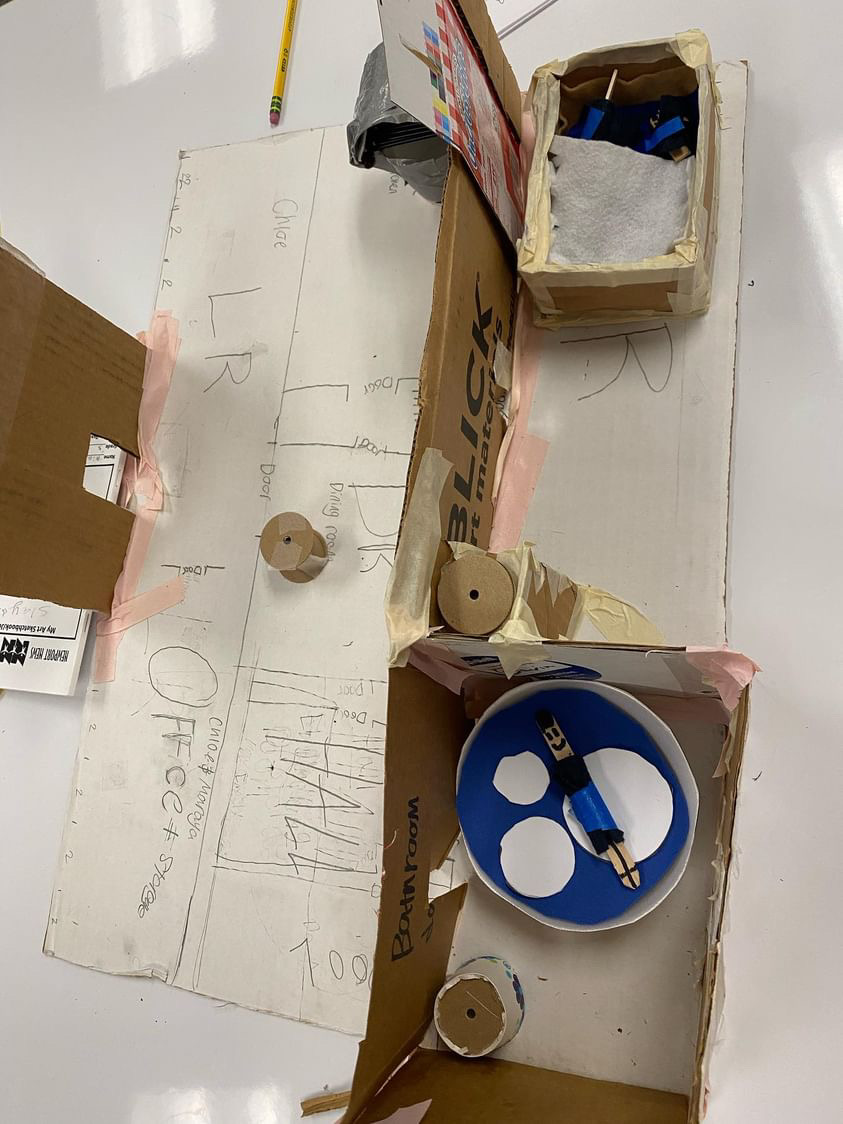
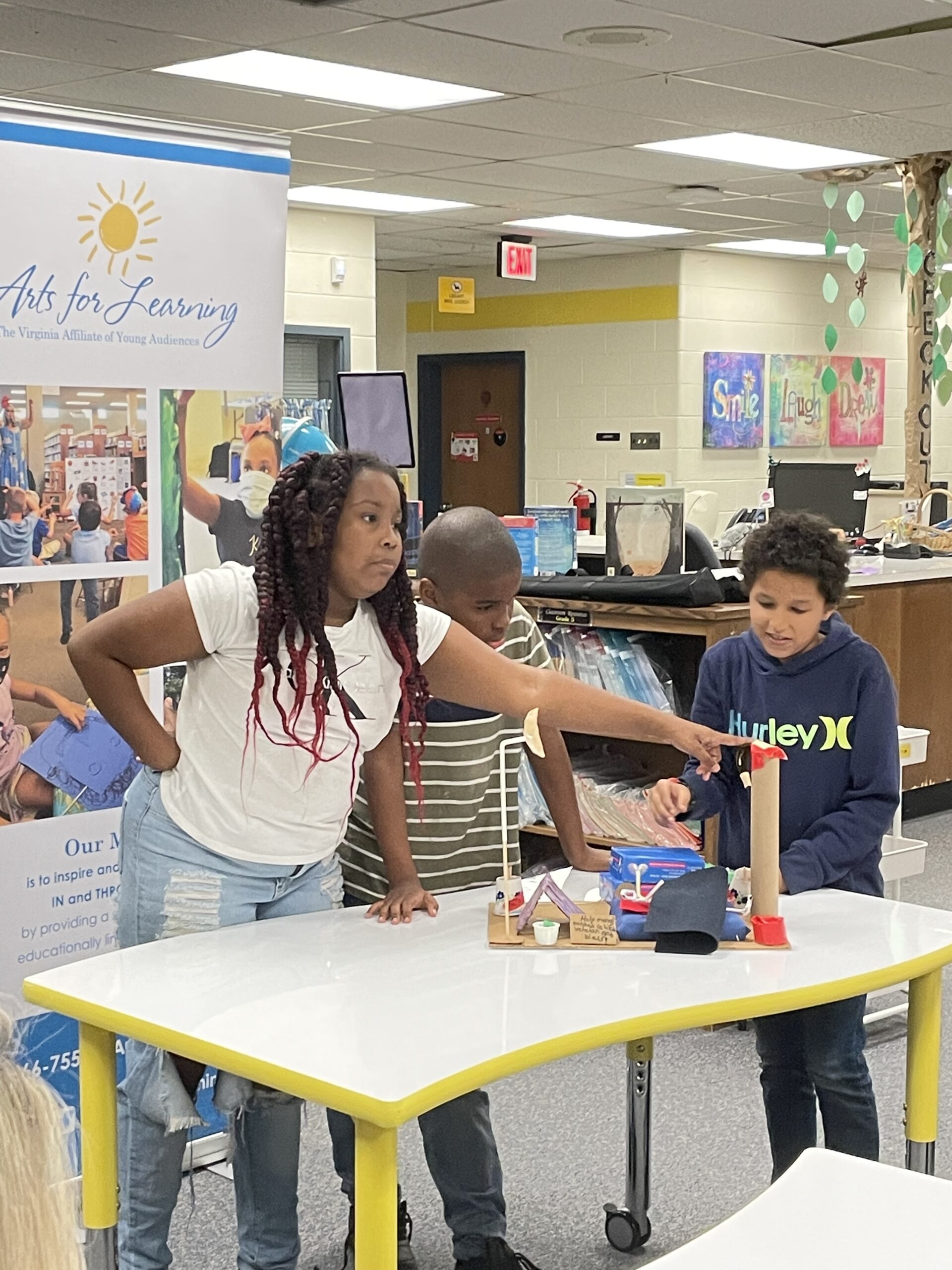
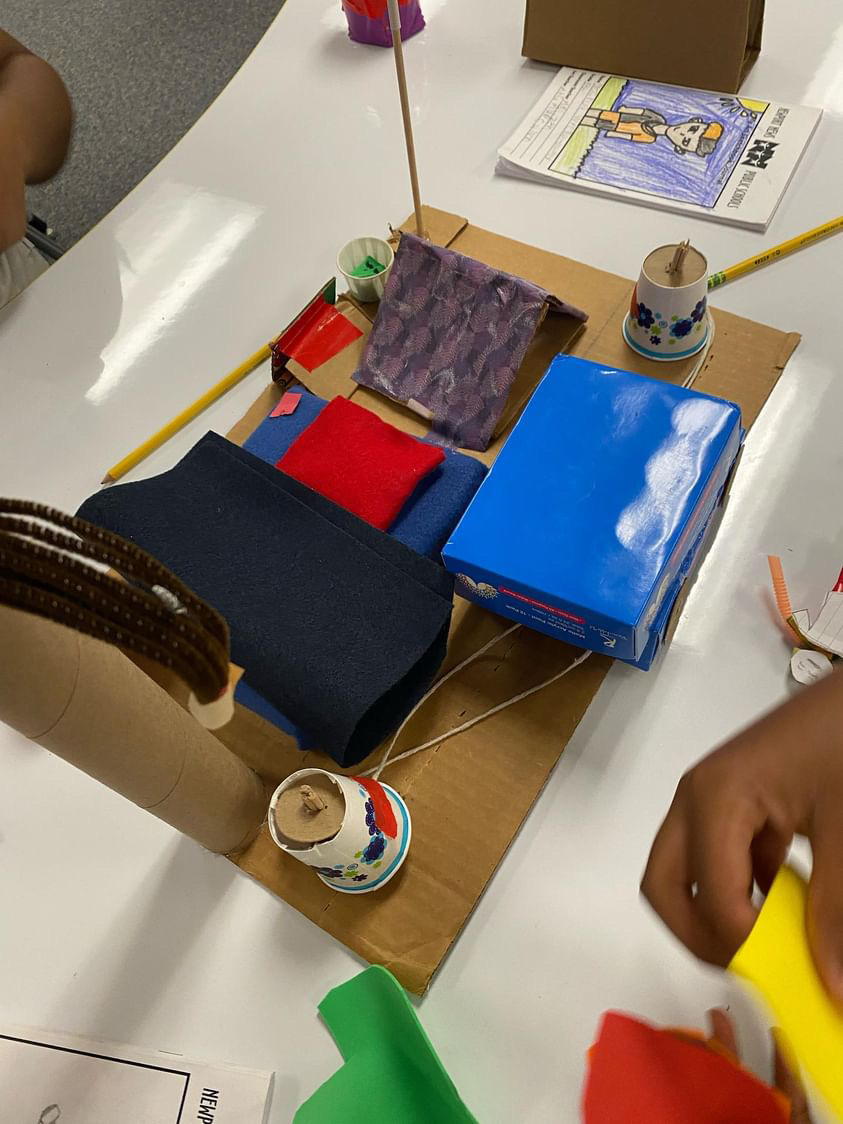
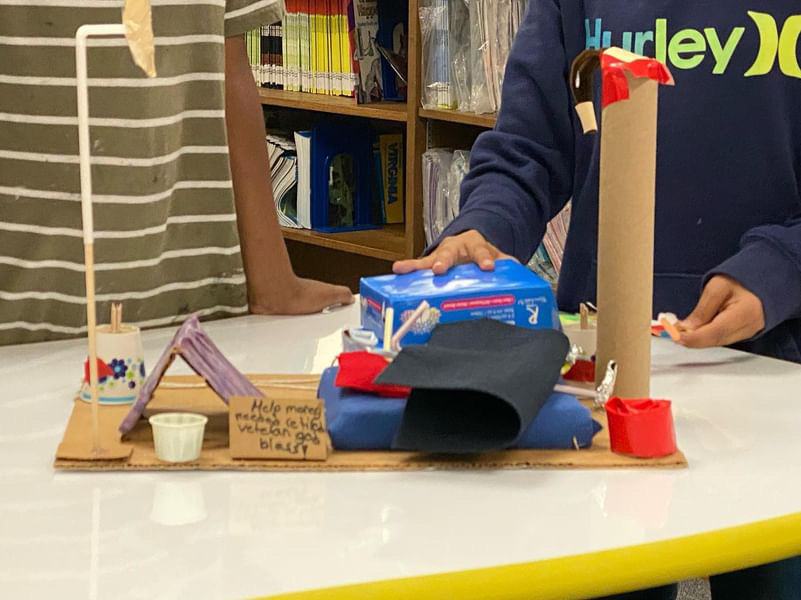
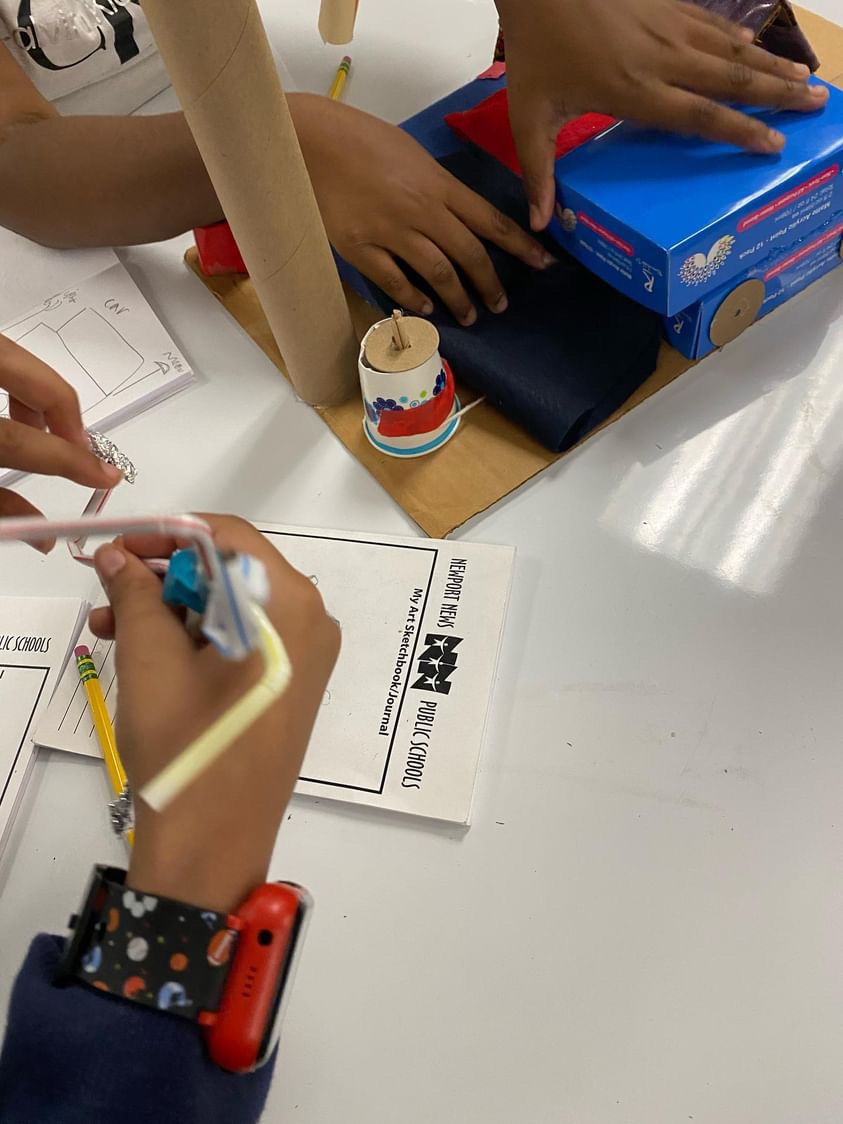
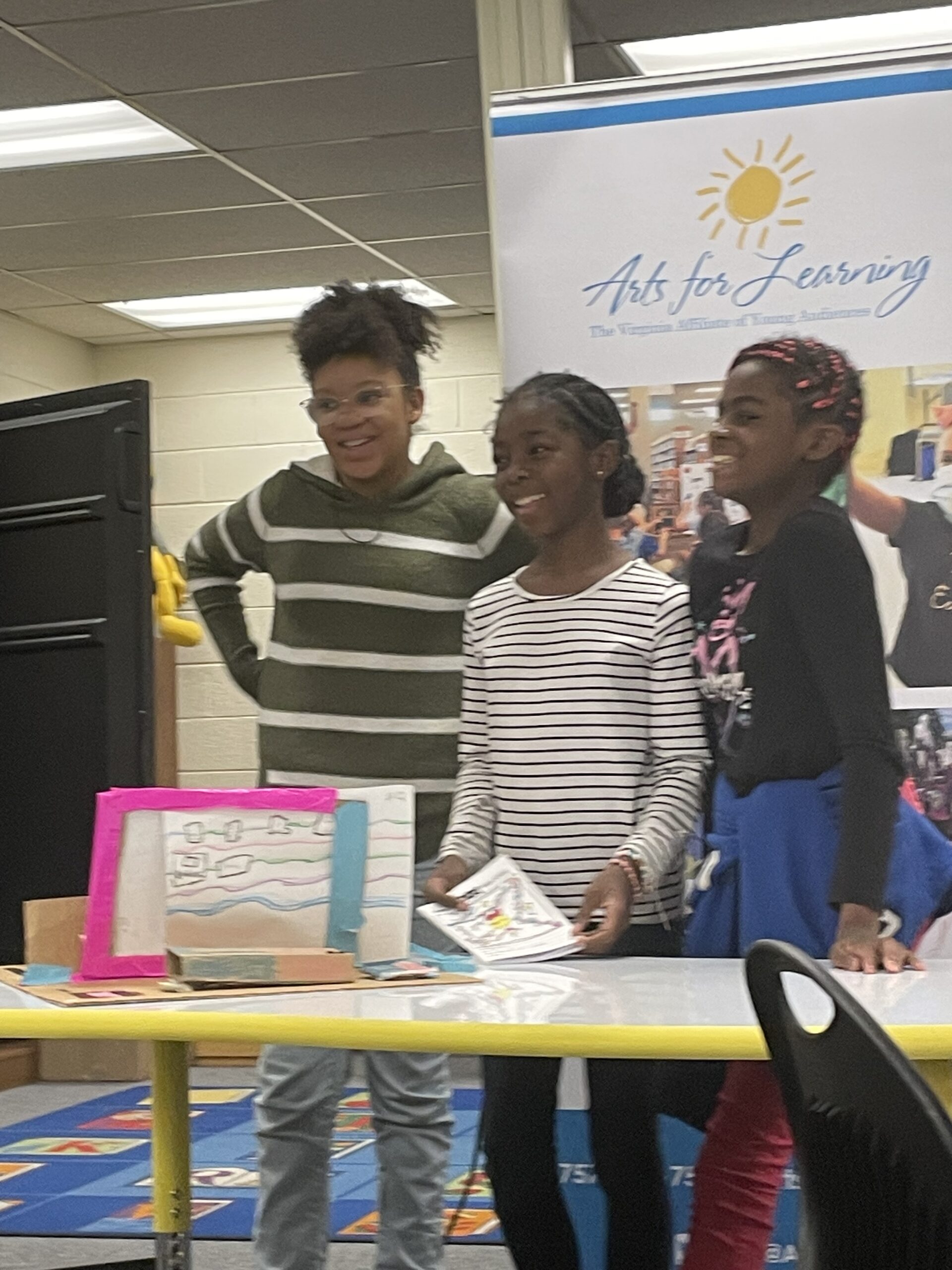
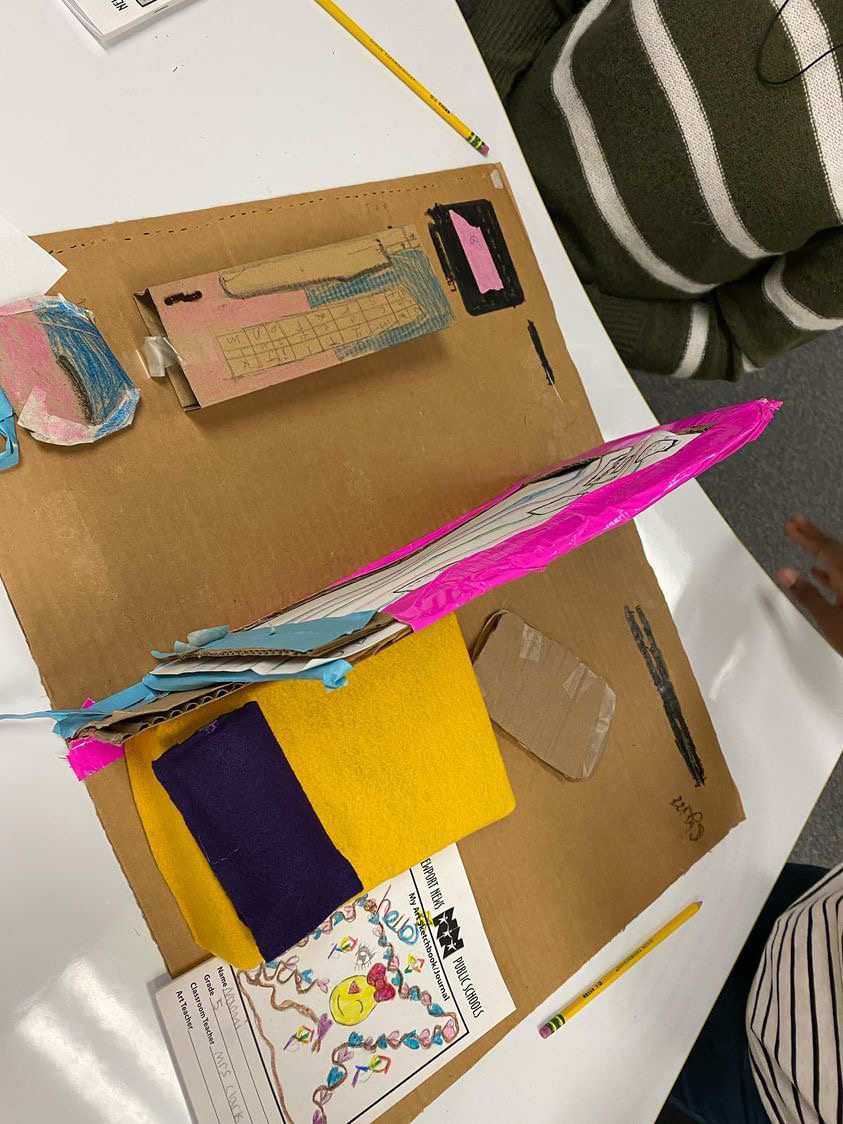
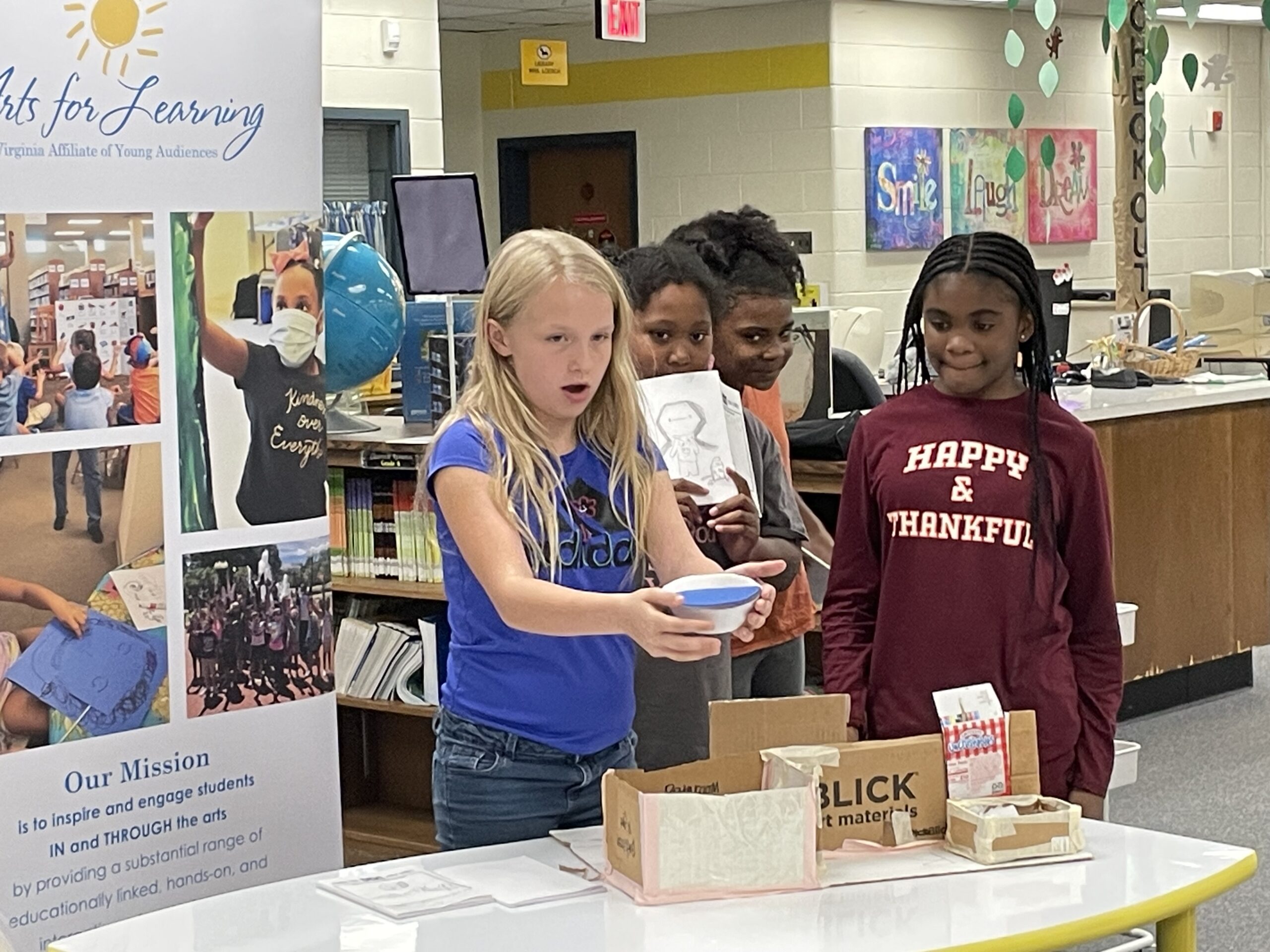
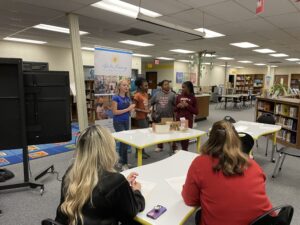 As part of an innovative after-school residency, 5th graders in Newport News have unveiled 3D artistic creations that are the result of weeks of brainstorming, teamwork, and hands-on design. Four teams of students at George J. McIntosh Elementary School created prototypes that address social issues, presenting their models to educators, community leaders, Arts for Learning staff and board members, and their peers in the residency.
As part of an innovative after-school residency, 5th graders in Newport News have unveiled 3D artistic creations that are the result of weeks of brainstorming, teamwork, and hands-on design. Four teams of students at George J. McIntosh Elementary School created prototypes that address social issues, presenting their models to educators, community leaders, Arts for Learning staff and board members, and their peers in the residency. Led by A4L teaching artist
Led by A4L teaching artist 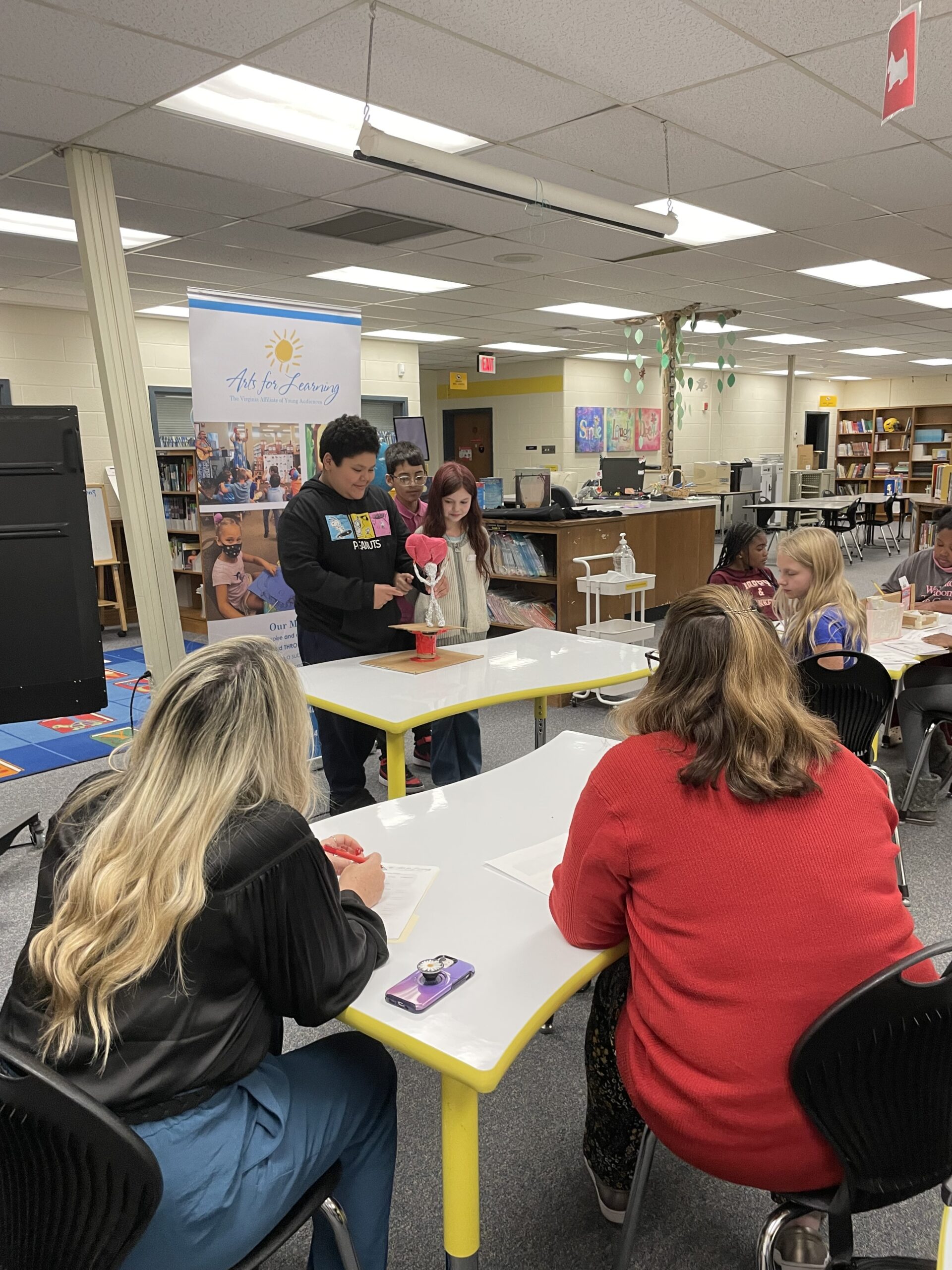
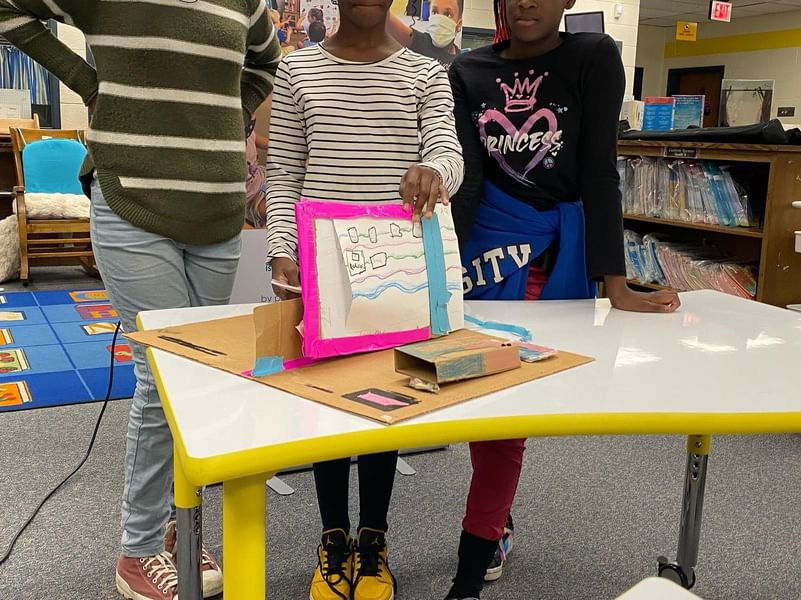
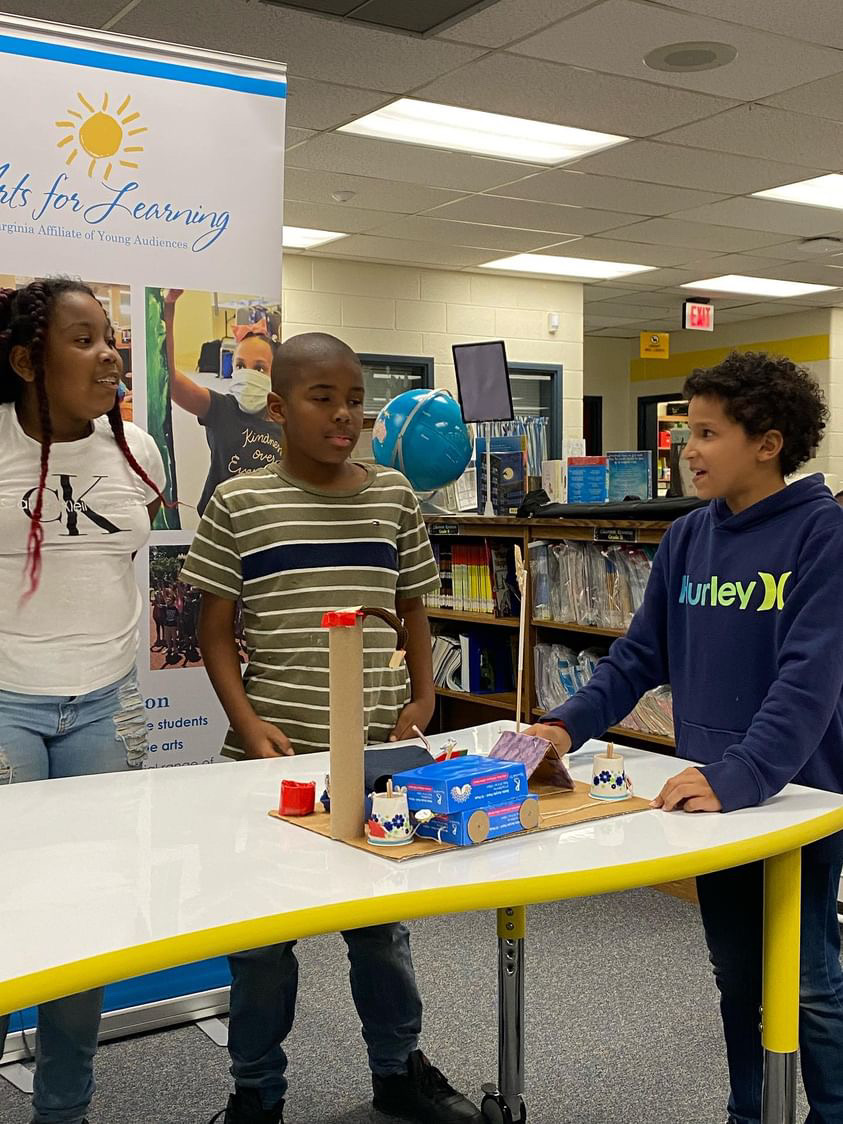
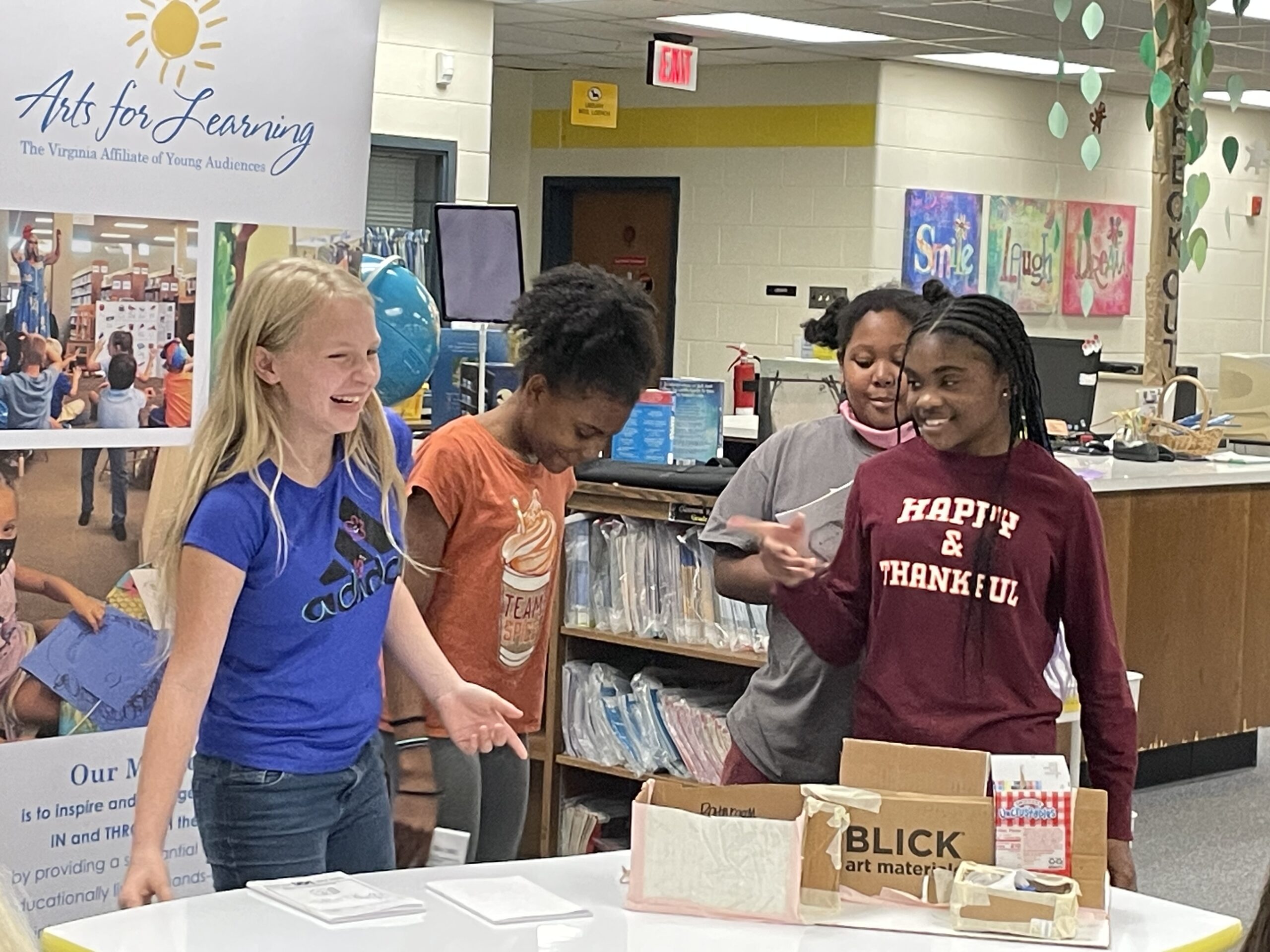
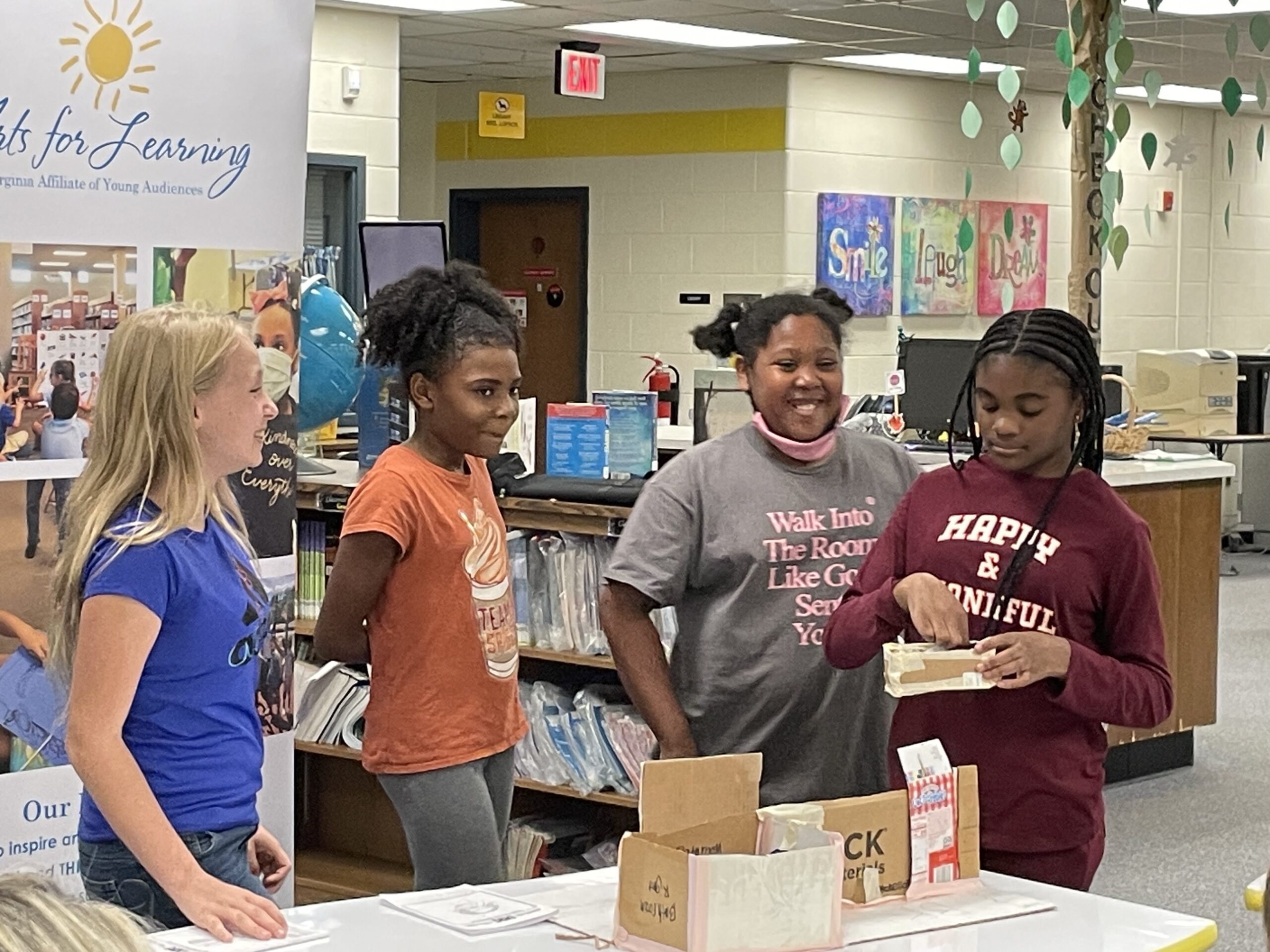

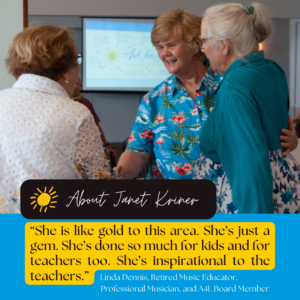 “She is like gold to this area. She’s just a gem. She’s done so much for kids and for teachers too. She’s inspirational to the teachers.”
“She is like gold to this area. She’s just a gem. She’s done so much for kids and for teachers too. She’s inspirational to the teachers.”